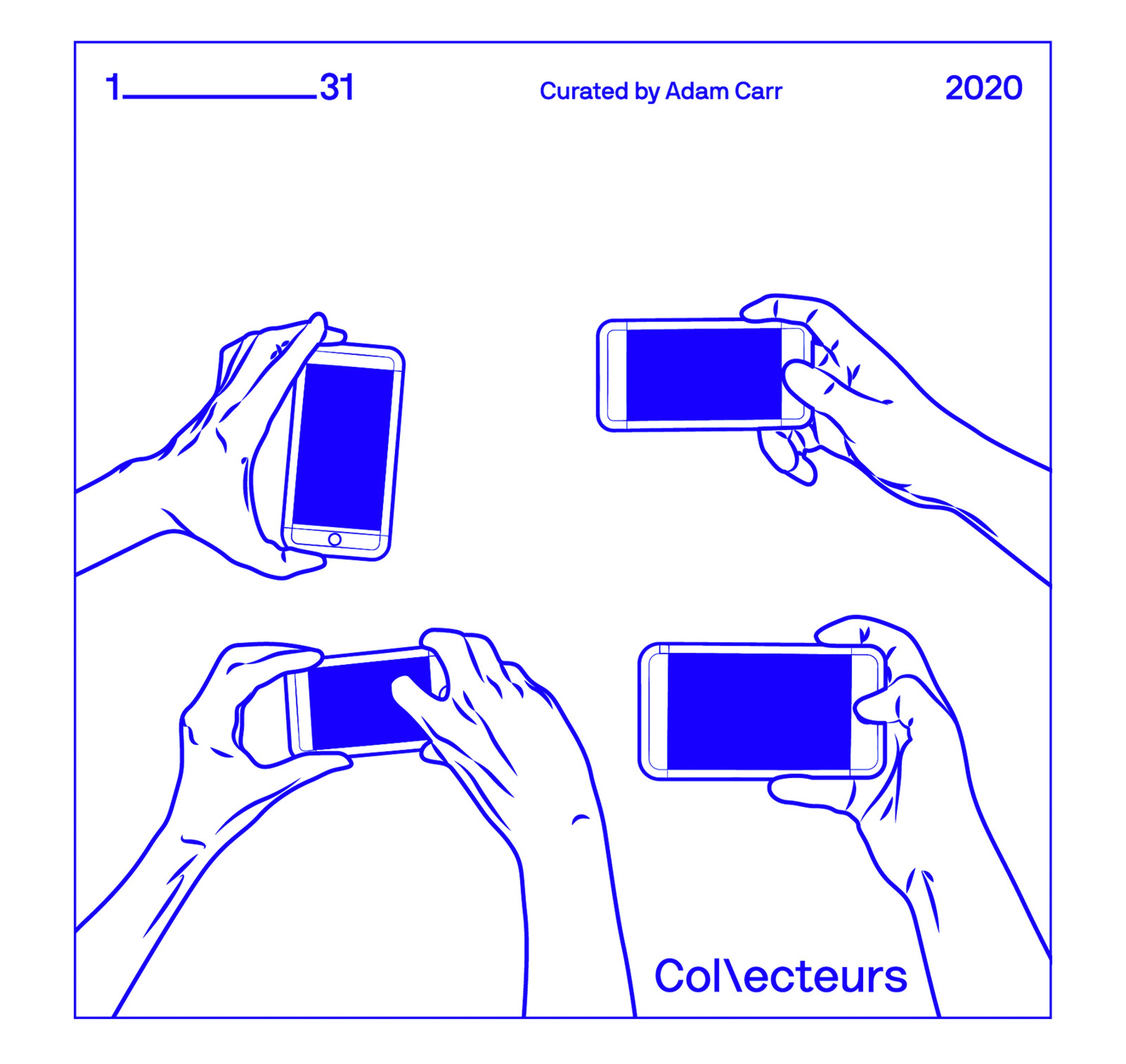
The exhibition 1-31 introduces a loose narrative that connects 31 works together by young, emerging and well-established artists from around the world. The exhibition showcases works in large part from Collecteurs’ members collections in addition to works by artists who were invited to participate. The show unfolds via Collecteurs’ Instagram and website, and addresses these particular formats and platforms for art’s presentation.
31 artists participate in the exhibition, each with one work. The 31 works relate in some way to a specific number, pertaining to the calendric day on which the work will be presented. Once each artist and artwork has been posted on Collecteurs’ Instagram, it will then enter its website. Each work will be accompanied by short texts, and will be further illustrated on Collecteurs’ website through interviews with the artists, as well as essays that relate with or mine an expanded definition of their works.
While the exhibition uses the platforms of social media and a website, and takes place exclusively on these platforms, its inspiration is taken in part from a moment prior to the Internet’s inception: Seth Siegelaub’s pioneering work in the 1960s and his exhibitions March 1969 (1969) and July, August, September 1969 (1969). In the spirit of both exhibitions, 1-31 conflates art’s documentation with its presentation and vice versa, where perhaps the experience of art breaks away from the traditional confines of the museum, institution and gallery to something less governed and more remote. Unlike traditional exhibitions, 1-31 will present new works and related content over the course of three months. The exhibition will be complete on the last day and will stay in the view of the public afterwards in its final shape.
1-31 includes work by Neïl Beloufa, Alejandro Cesarco, Roy Claire Potter, Simon Denny, Gabriel De Santis, Claire Fontaine, Louise Giovanelli, Mario García Torres, Isa Genzken, Felipe García López, Tehching Hsieh, Pierre Huyghe, David Jablonowski, Chrysanthi Koumianaki, Fred Lonidier, Guadalupe Maravilla, Adriana Martinez, Metahaven, Paul McCarthy, Jonathan Monk, Puppies Puppies, Amanda Ross-Ho, Ariel Schlesinger, Reyes Santiago Rojas, Luke Stettner, Mungo Thomson, Wolfgang Tillmans, Gabriella Torres-Ferrer, Oscar Tuazon, Villamil y Villamil, and Bedwyr Williams.
About Collecteurs
Developed at the New Museum’s cultural incubator, Collecteurs is a public-benefit corporation on a mission to give the public access to private art collections. As a digital museum, the platform empowers collectors, making it easy for them to digitize, manage, and exhibit their collections without needing the capital to open a private museum. Collecteurs collaborates with established curators, who select works from private collections on its platform, to create exceptional digital exhibitions.
About Adam Carr
Adam Carr (b. 1981, Chester, UK) is a Curator, Writer and Educator. He is the Chief Curator of ERL, an exhibition space located at the Liverpool John Moores University. He has curated over 60 exhibitions worldwide for museums and institutions such as Castello di Rivoli, Museum of Contemporary Art, Turin; ICA, London and Kadist Art Foundation, Paris. Catalogue texts he has written have been published by Centre Pompidou, Paris; Whitechapel, London; WIELS, Brussels and Rennie Collection, Vancouver among many others.
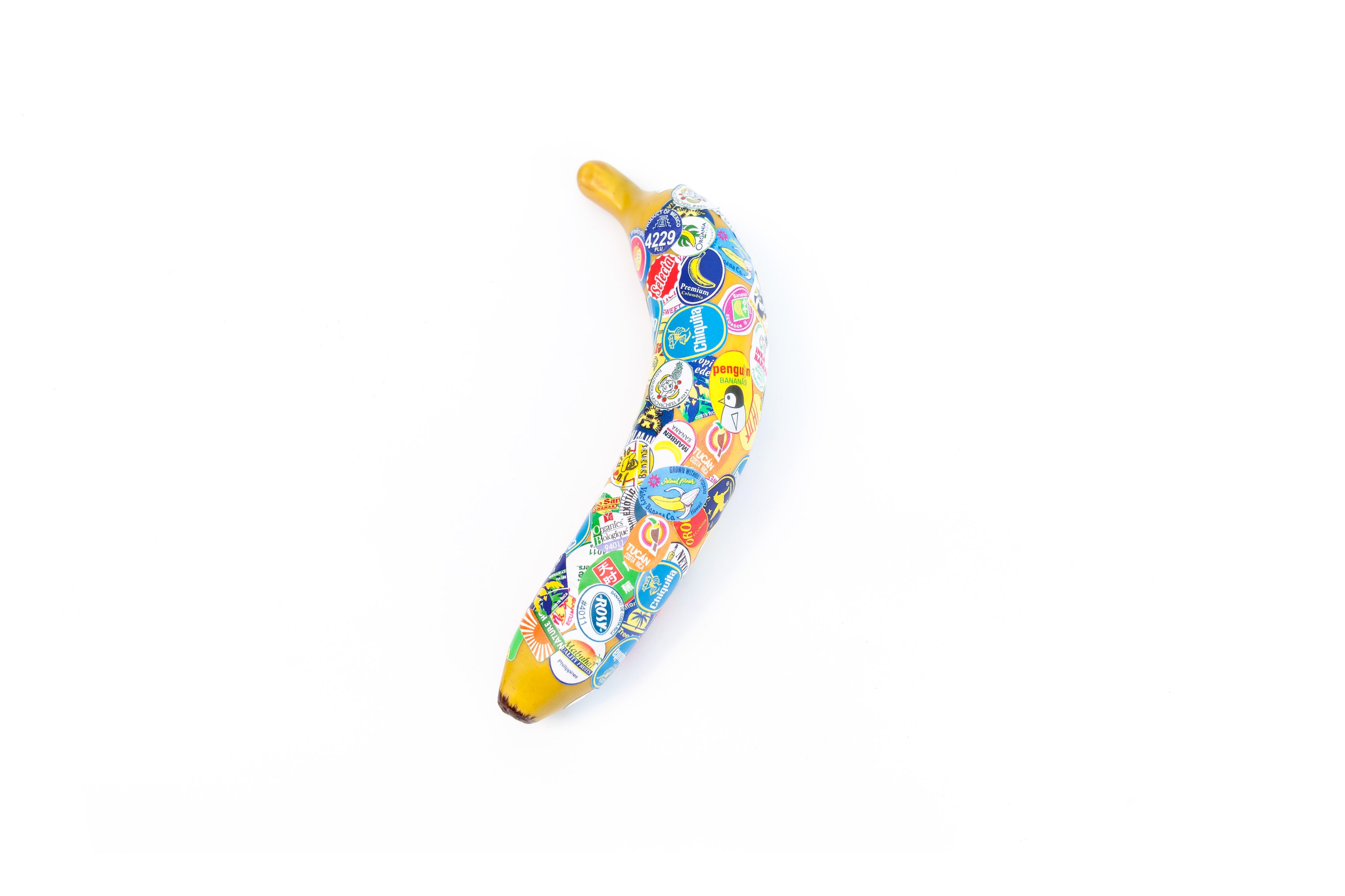


(plastic banana and stickers)
Adriana Martínez is a central figure in Bogotá, Colombia and although she has had solo exhibitions further afield, she is still somewhat under appreciated. Her work often takes up readymade objects to pose questions connected to global economies, commerce and trade. Bananas (2016) is exemplary of Martínez’ way of unravelling a web of complex social issues in a critical, yet subtle, way. The work is part of a series of banana works, treating fake plastic bananas with various stickers of the fruit’s traders. While the work shows a net of trade and prosper, it points to the troubled history of the fruit, in particular, the Colombian Banana Massacre which saw the tragic murder of a number of workers of the United Fruit Company.


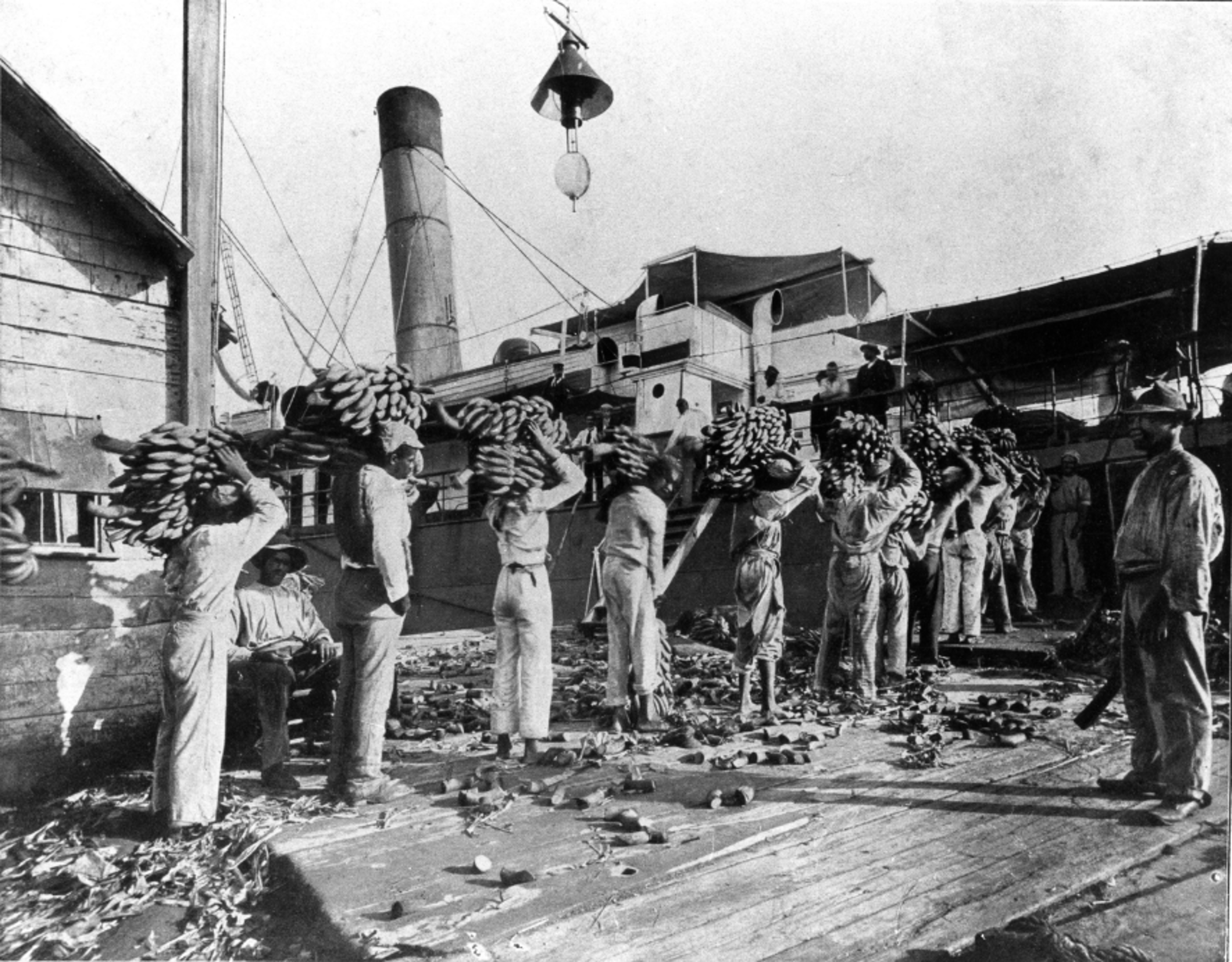
In 1928, 25,000 banana workers from the _United Fruit Company_—an American corporation operating as Chiquita today—decided to go on strike in Colombia. United Fruit Company had become a local monopoly by developing strong ties to the Colombian and American governments and building its own railway system to transport its bananas. The banana workers’ demands included a 6-day work week, payment with money rather than company coupons, compensation for work accidents, increase in wages for workers earning less than 100 pesos per month, and a demand that is still echoed today by the hundreds of thousands of gig-economy workers globally: to be recognized as employees…
_
artwork image: Santiago Pinyol_


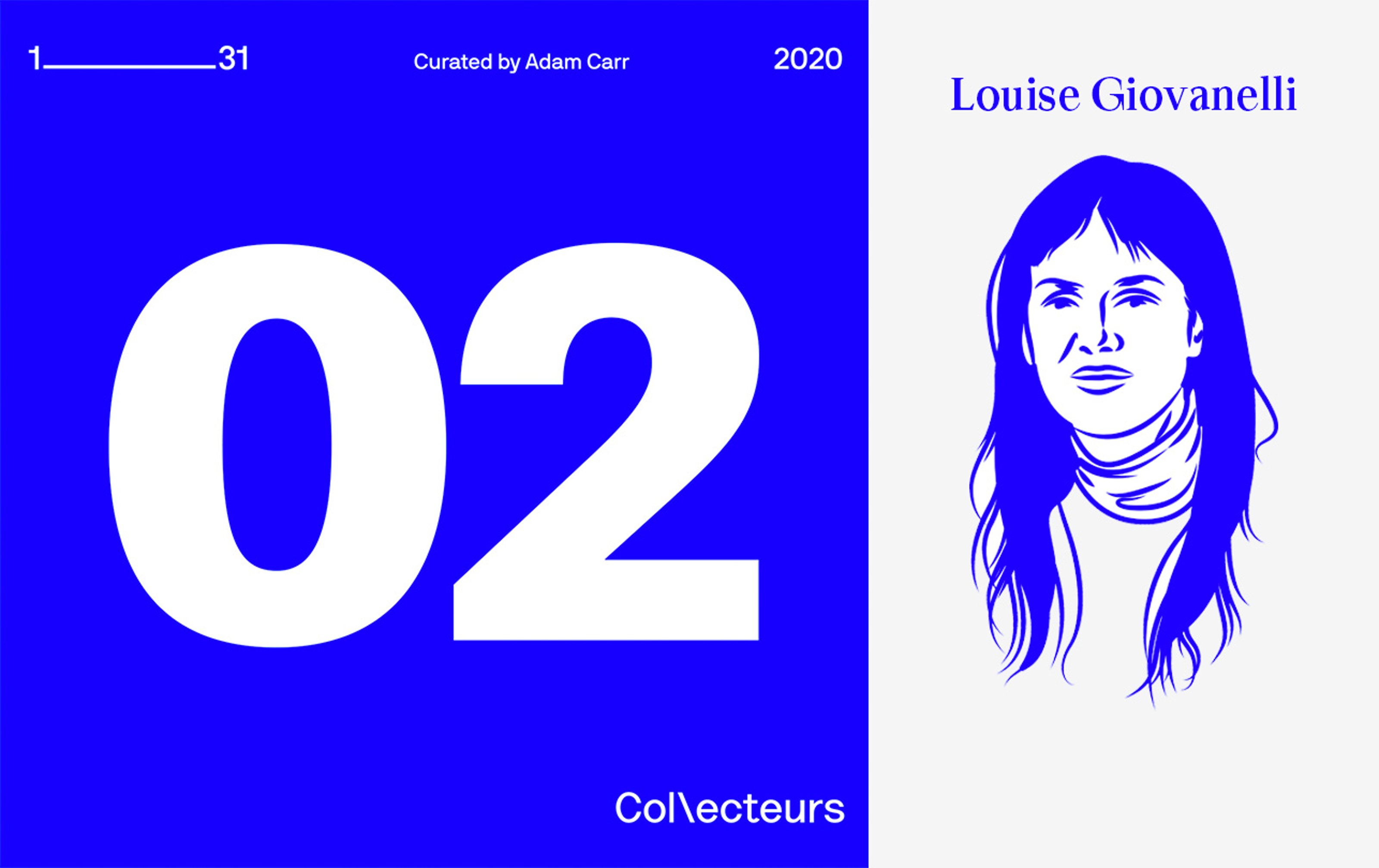

(oil on canvas)
Louise Giovanelli came to prominence in 2019. Her paintings are populated by a rich network of reference points that span from Greek Ceramics to Roman Architecture, and the history of painting to its present-day status. Giovanelli often works in a number of series side by side, as if to say the same thing in different ways. Number two in an ongoing series, Palisade II, 2019, is a starting point, tied to sculpture rather than the language of paintings. Giovanelli hand moulds acanthus forms in black plasticine which she then later paints to form seductive layers of form and tone yet also underscore the work’s title, forming a defensive wall, a stockade.


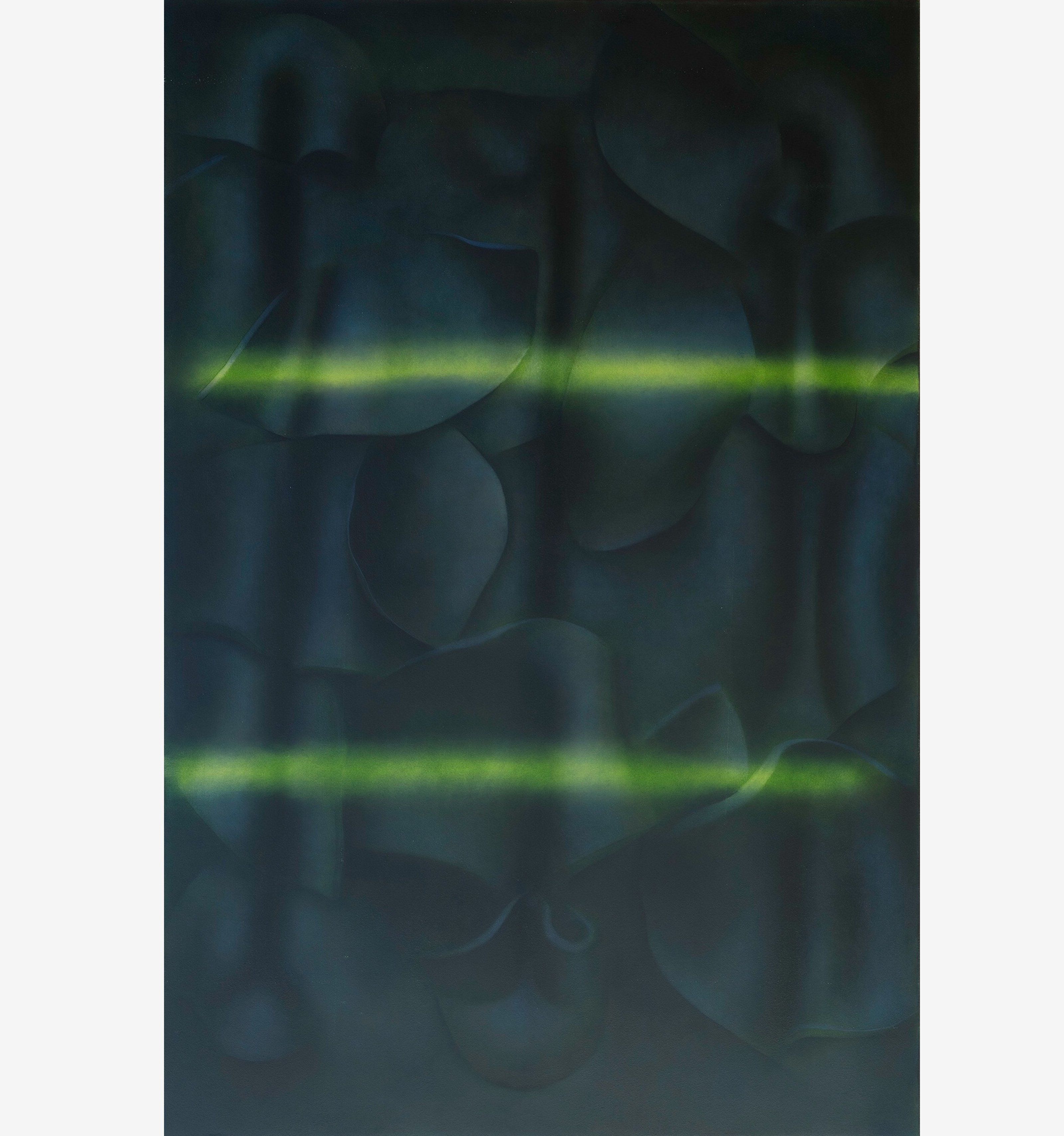
Louise Giovanelli – Palisade, 2019. Courtesy the artist.
“Louise Giovanelli’s works use paint to combine a timeline that stretches the 14th Century to the present day. Many of her pieces take references from early Renaissance masters – including Duccio, Giotti and Piera della Francesca – yet they appear decidedly contemporary, mining the aesthetics of our digital age and the framing of images akin to our smartphones. Often working in series, the language of painting she stakes out is articulated in similar yet different modes, as if saying the same thing in a different cadence.”
Courtesy the artist and GRIMM Gallery. Photo by Renato Ghiazza.

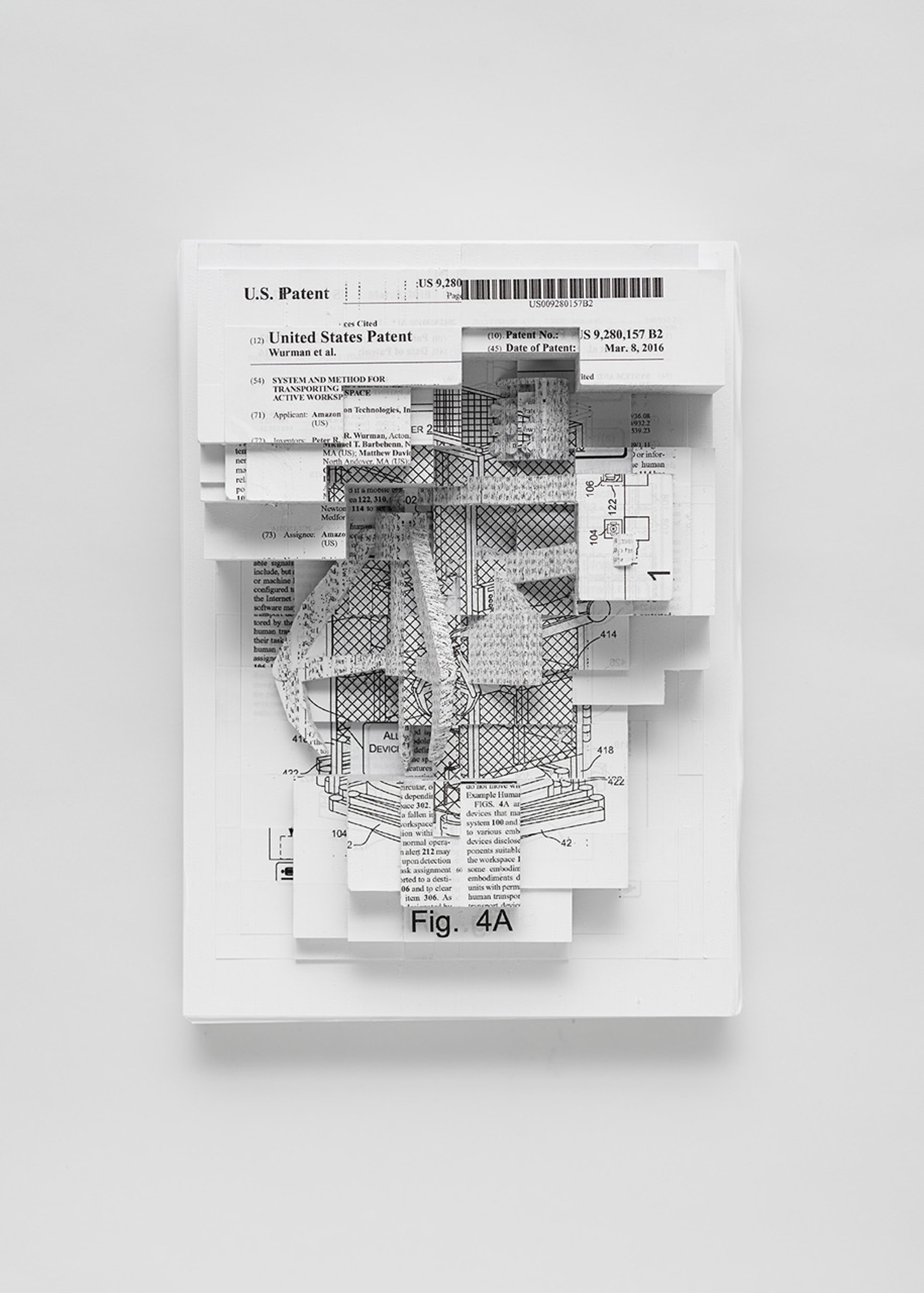
_
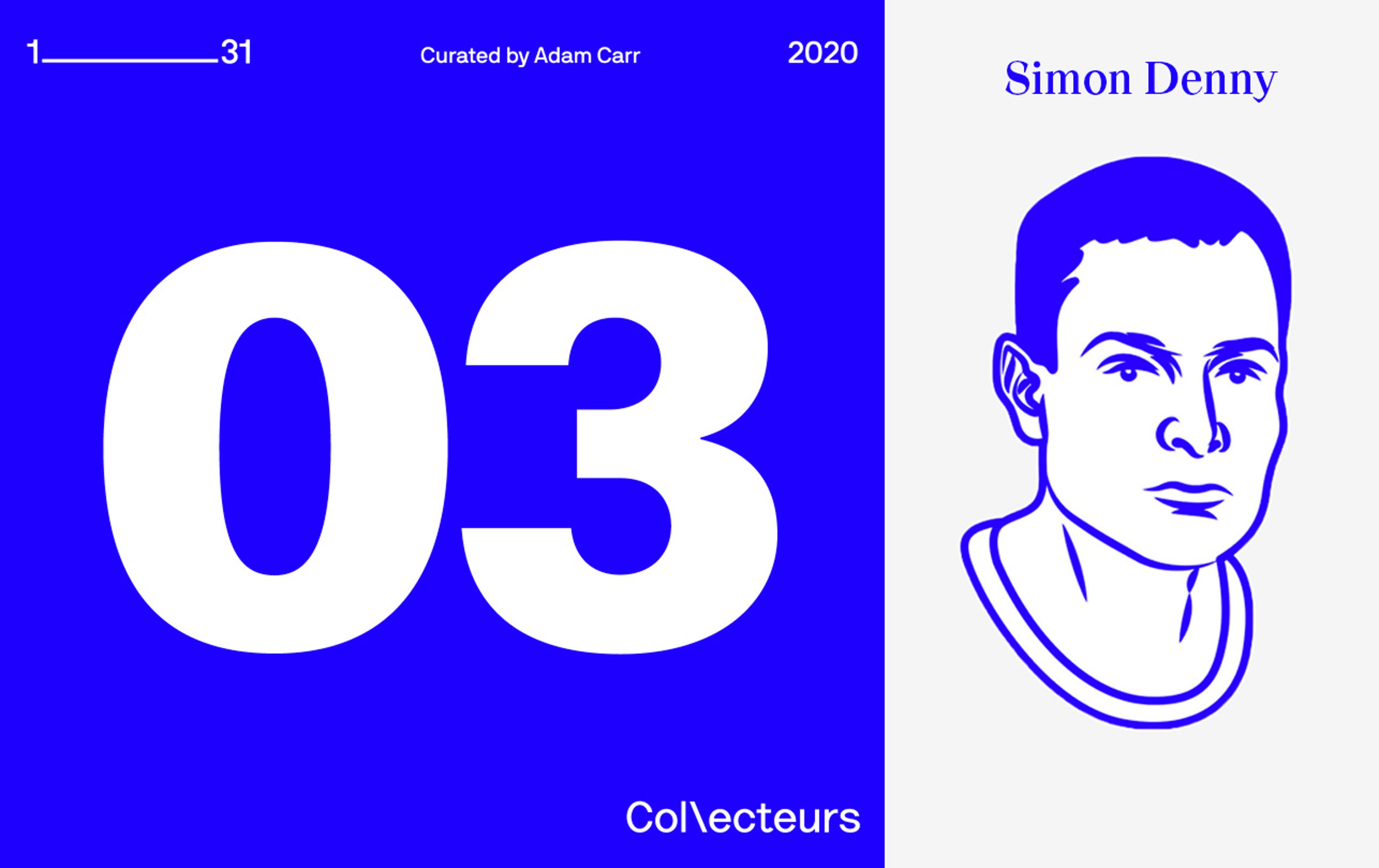

(inkjet print on archival paper, glue, custom metal wall mount)
Simon Denny’s Document Relief 3 (Amazon Worker Cage Patent) is the third in a series of 3D prints sculpted into a relief of the patented cage that Amazon filed with the United States Patent and Trademark Office in 2016. Amazon worker cages were designed to keep staff isolated from external elements in its vast warehouses. The cage would allow each worker to ‘drive’ around the warehouse while an attached robotic arm assisted with moving goods from shelves and placing them into a trolley beneath the worker. Amazon stated that the design had been an attempt to protect staff in a work environment that was increasingly populated by heavyweight robots and would have allowed employees to safely access areas of their warehouses that were otherwise off-limits because drones and robots were moving at high speeds. Each work in Simon Denny‘s series comprises 1250 sheets of paper and 55 copies of the Amazon Worker Cage Patent US9280157B2 sculpted into a relief of the patented cage using a recently outmoded paper “3D print” machine.


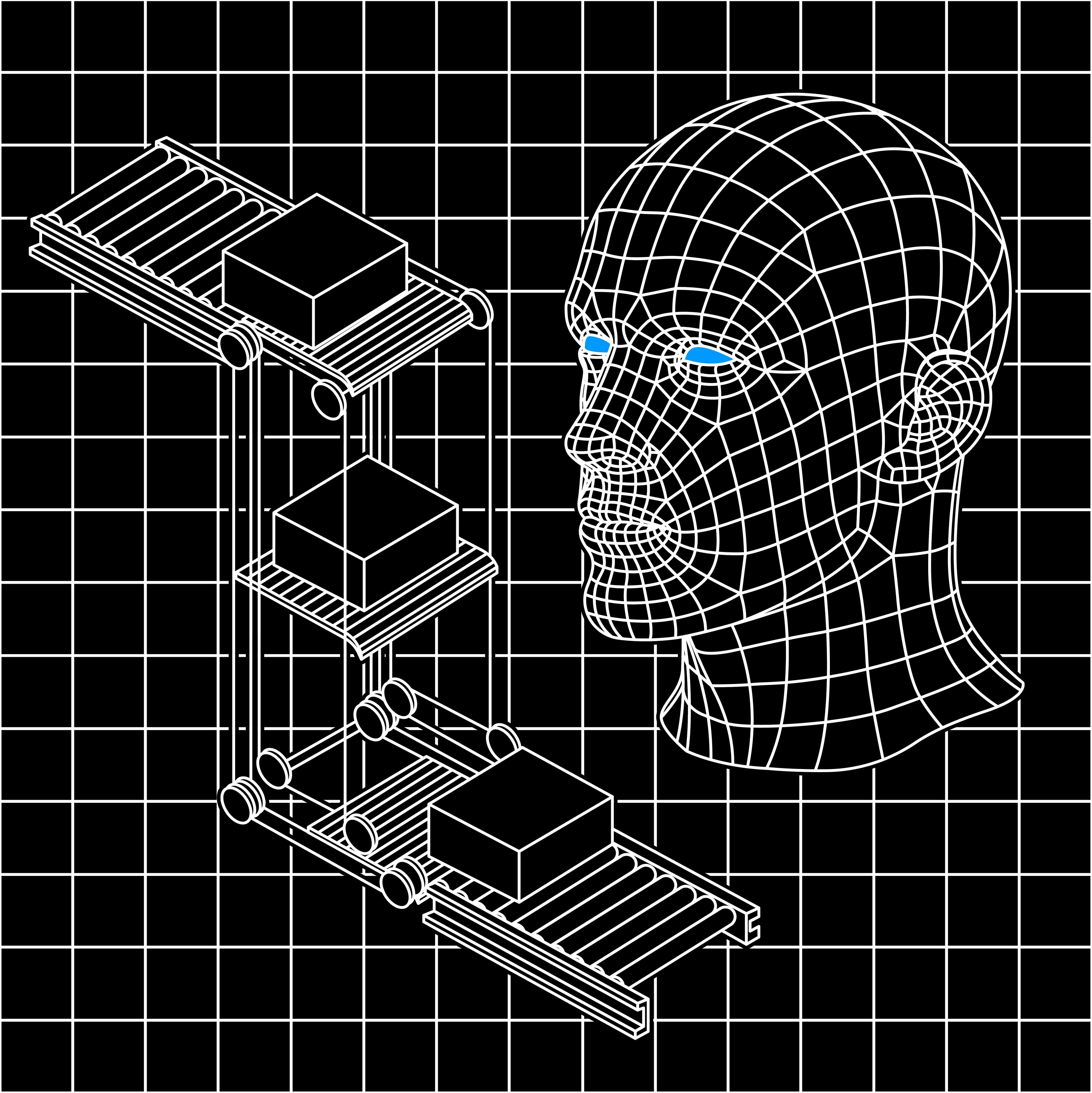
The future of work has millions of people on edge. As artificial intelligence seeps into our workplaces and the media promotes job automation, one way to grasp these changes is to look closer at the system reshaping work…
illustrations by Berke Yazicioglu
artwork image courtesy Simon Denny and Galerie Buchholz, Berlin/Cologne/New York




(wood, mirror, glass, metal)
A prolific artist since the 70s, Isa Genzken has worked with almost every medium to bring about works that are impactful and unique. Her sculptures, consisting of assemblages of materials, exist also in the architectural world as standing pillars in a possible collapse of materialistic production. Her sculpture Dan, 1999, plays with color field abstraction through an assemblage of fragmented mirrors; an illusion of transparency, appearing to be in harmony with the environment around it but hiding what’s within.



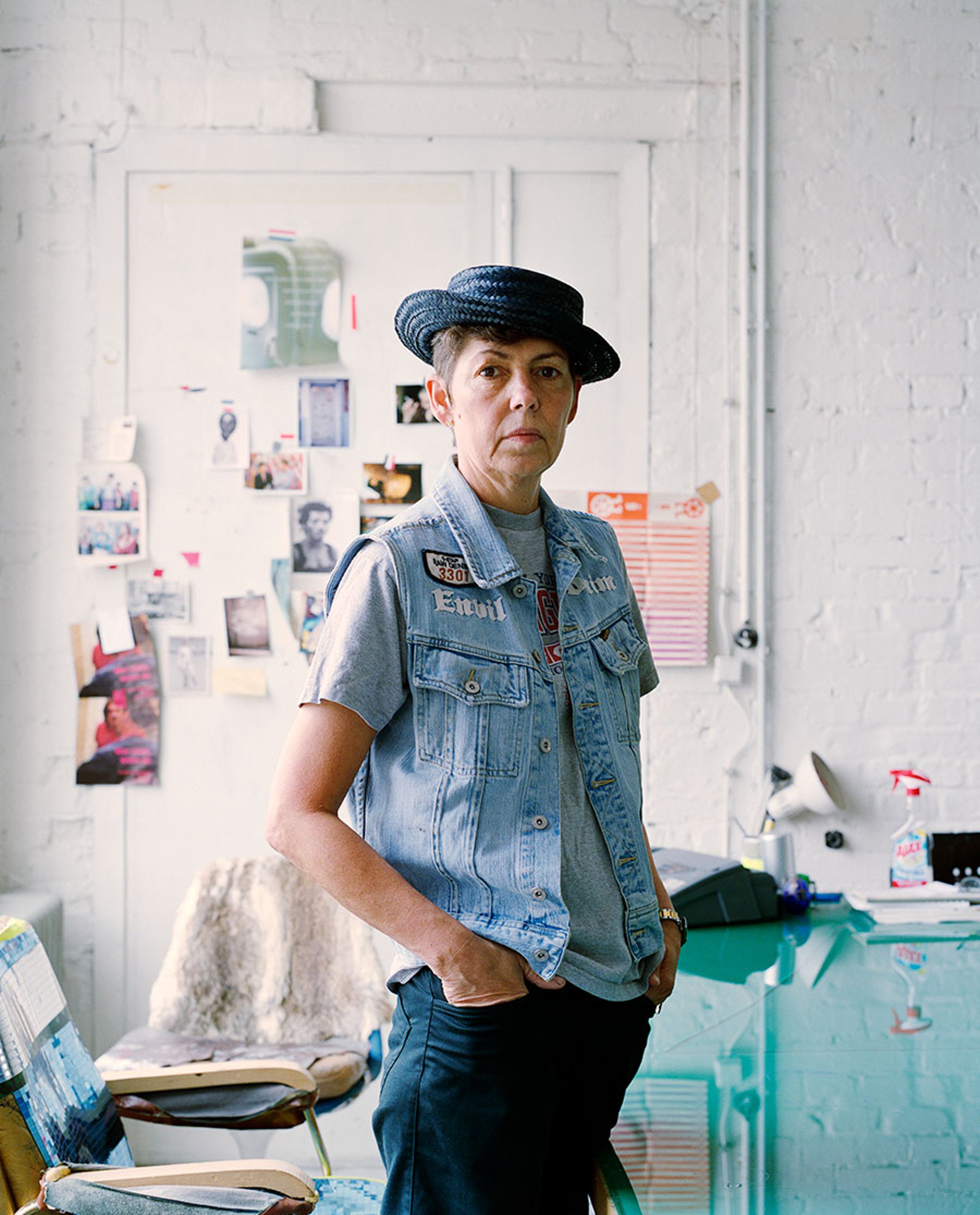
Isa Genzken in her studio in Berlin, 2003 by Albrecht Fuchs
“Referencing punk and subcultures, the surface of Dan is composed of an assemblaged array of banal everyday materials. The colour squares reference the history of art, geometric abstraction, and composition, but the regularity is broken by Genzken’s emphasis on the imperfection of the hand-made. This imperfection is reflected in Dan’s multiplicity…”
Copyright: VG-Bild Kunst & Grässlin Collection, St. Georgen



Alongside her two sisters Bärbel and Sabine, Karola Kraus was born into what would become one of Germany’s most important art collections of post-war Informalism. Originating in the 70s, the Grässlin Collection began when Kraus’ parents ended a Sunday visit at Erich Hausner’s studio by buying one of his sculptures.

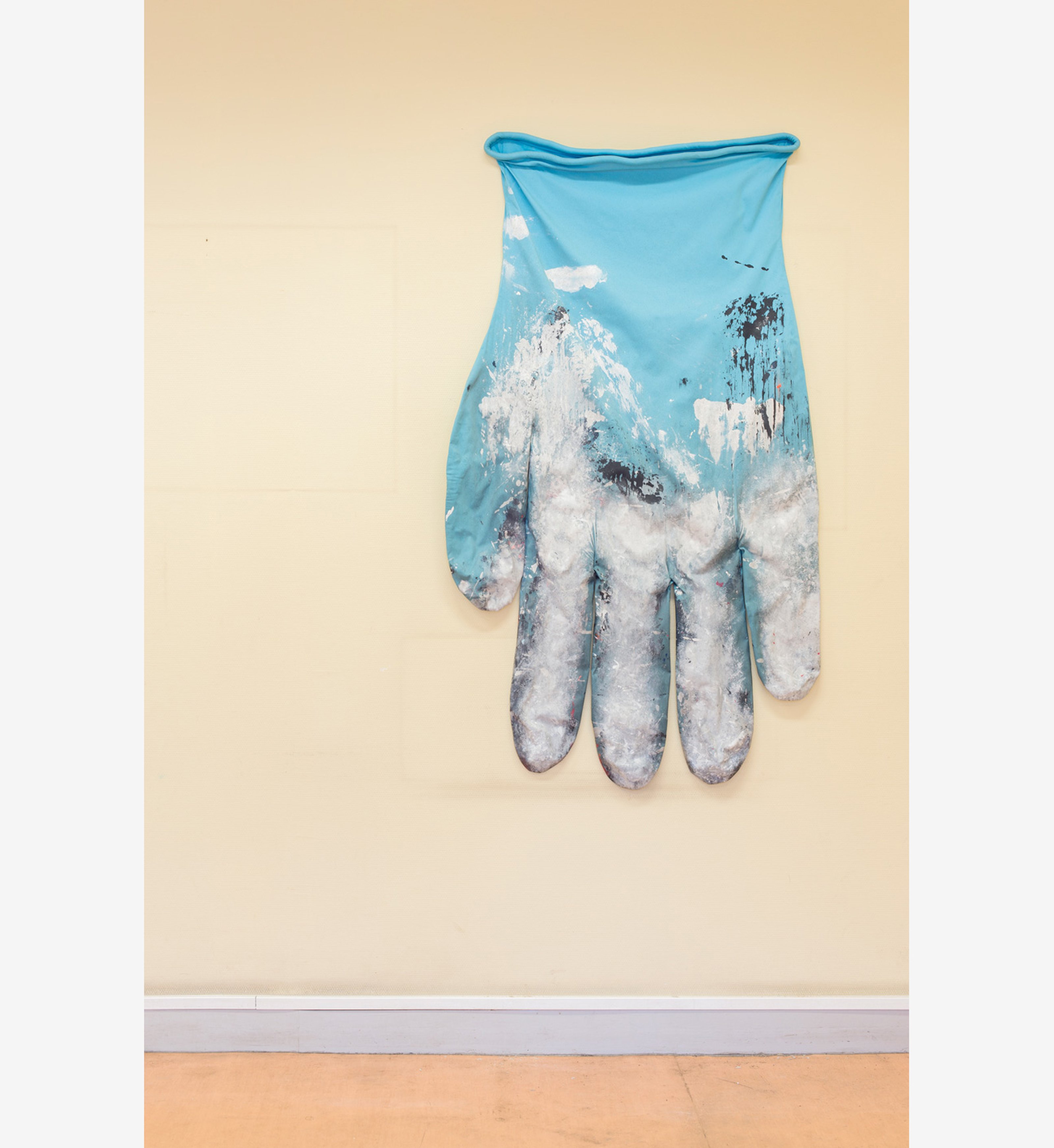


(dyed stretch cotton, sateen, acrylic paint, cotton piping, armature wire)
There is room for four fingers and one thumb, or five digits, in the work by Amanda Ross-Ho – Blue Glove Right #2, 2014. Often using scale shifts, Ross-Ho transforms everyday objects and detritus into monumental size. They are repeated, doubled and enlarged in an exhaustive rhythm and iteration. Although sculptural in form –perhaps photography is more at play here– zooming in on overlooked details to an almost forensic degree, mining the vestiges of the personal and universal.



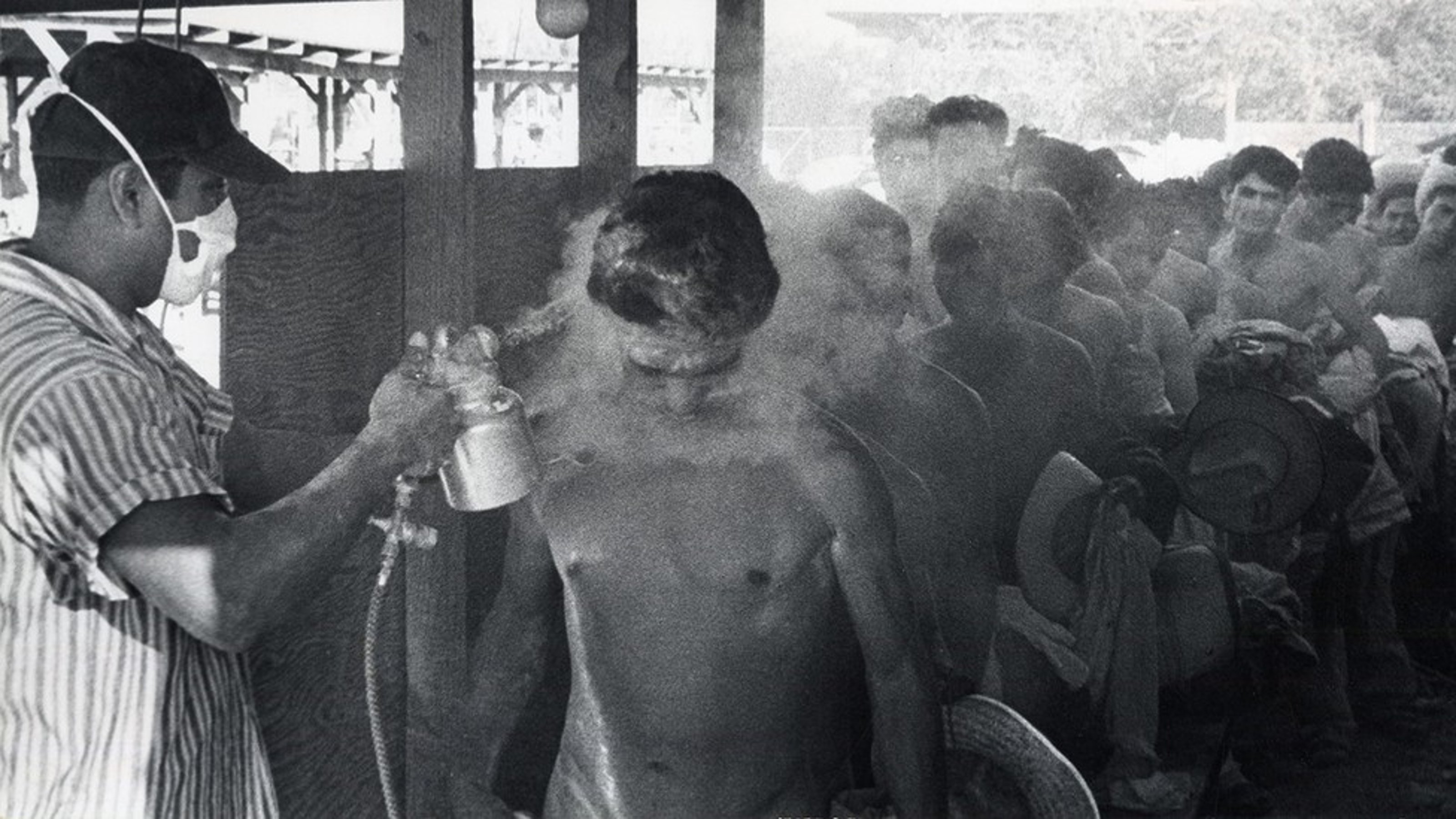
photograph: Mexican workers sprayed with toxic gas when crossing the border.
This article is the third installment of a collaboration between Collecteurs and Working Class History, a project dedicated to bringing to light the everyday actions of citizens; the working class. In light of recent racist reactions to the spread of Covid-19, and in solidarity with the #iamnotavirus campaign; we take a look back at racist reactions to epidemics, from the Honolulu Chinatown Fire of 1900 to the Bath Riots of 1917.

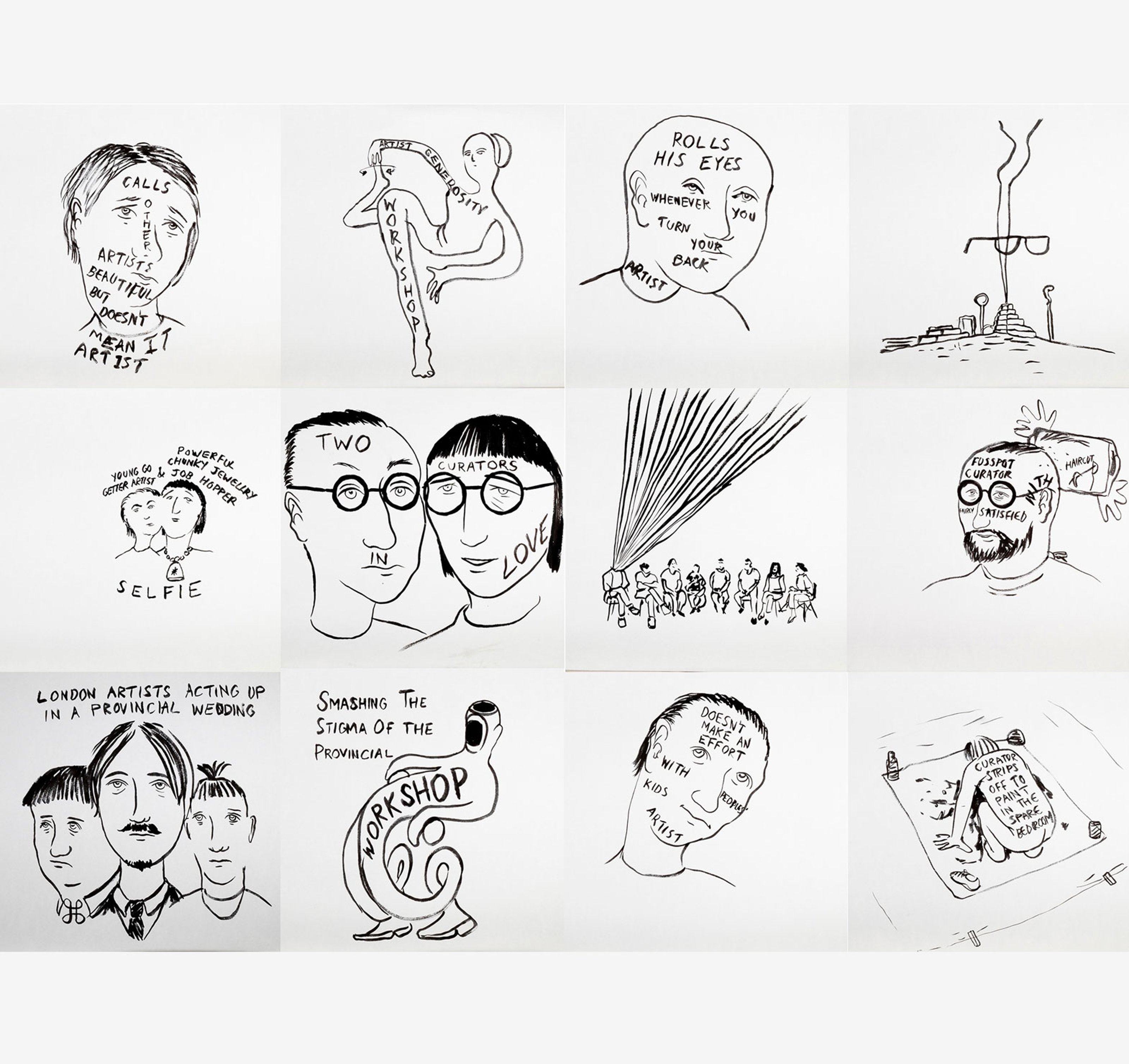
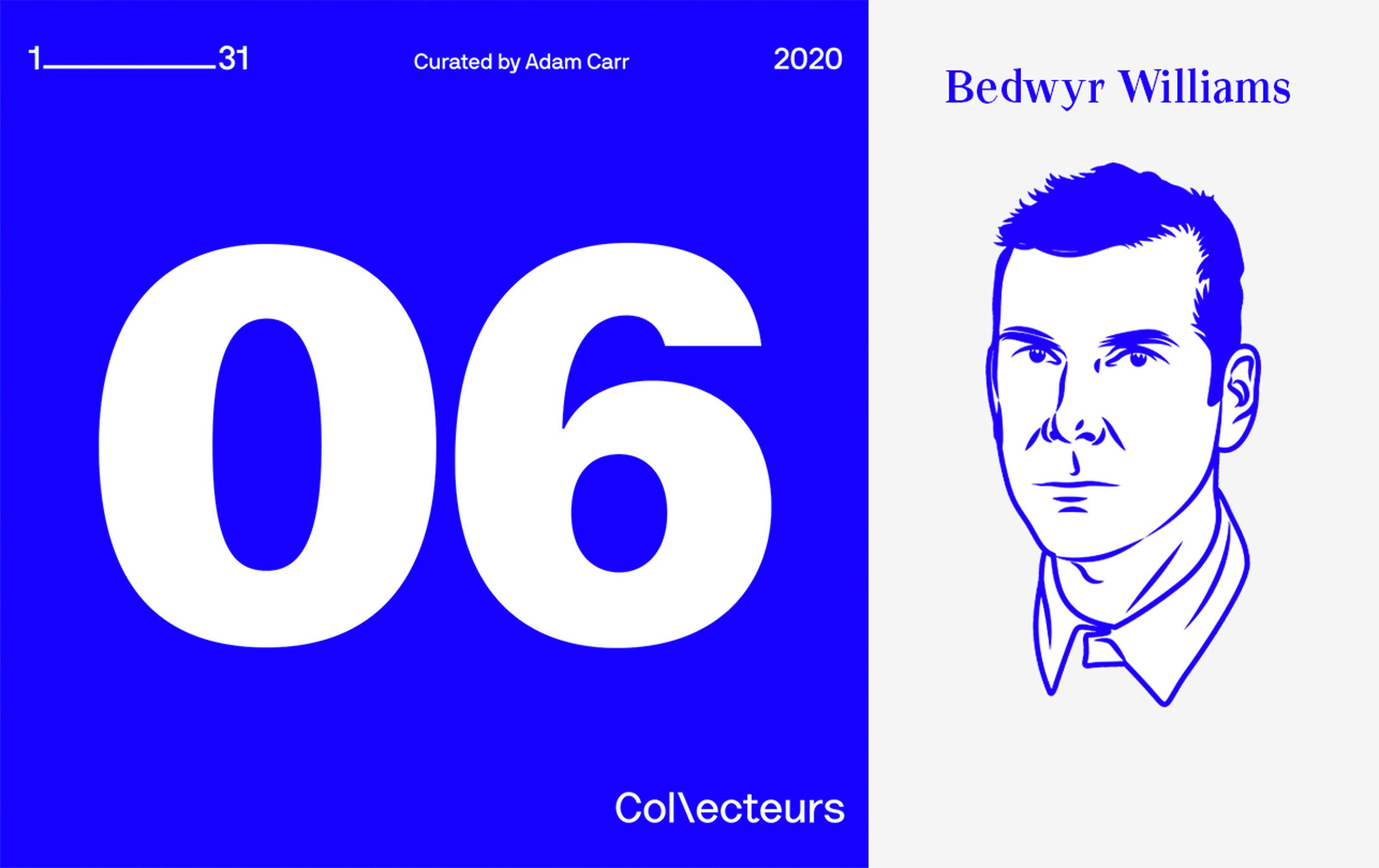

(ink on paper)
This work by Bedwyr Williams, who represented Wales in the Venice Biennale 2013, is one of a suite of six framed drawings which are part of an ongoing project by the artist. The works are initially presented on his Instagram account. The drawings feature scenes of people in some usual and unusual situations seen through the lens of Williams’ sardonic humor; personal yet universal observations connected to human experience, in particular to the art world. We might recognize the ridiculousness of ourselves in them.
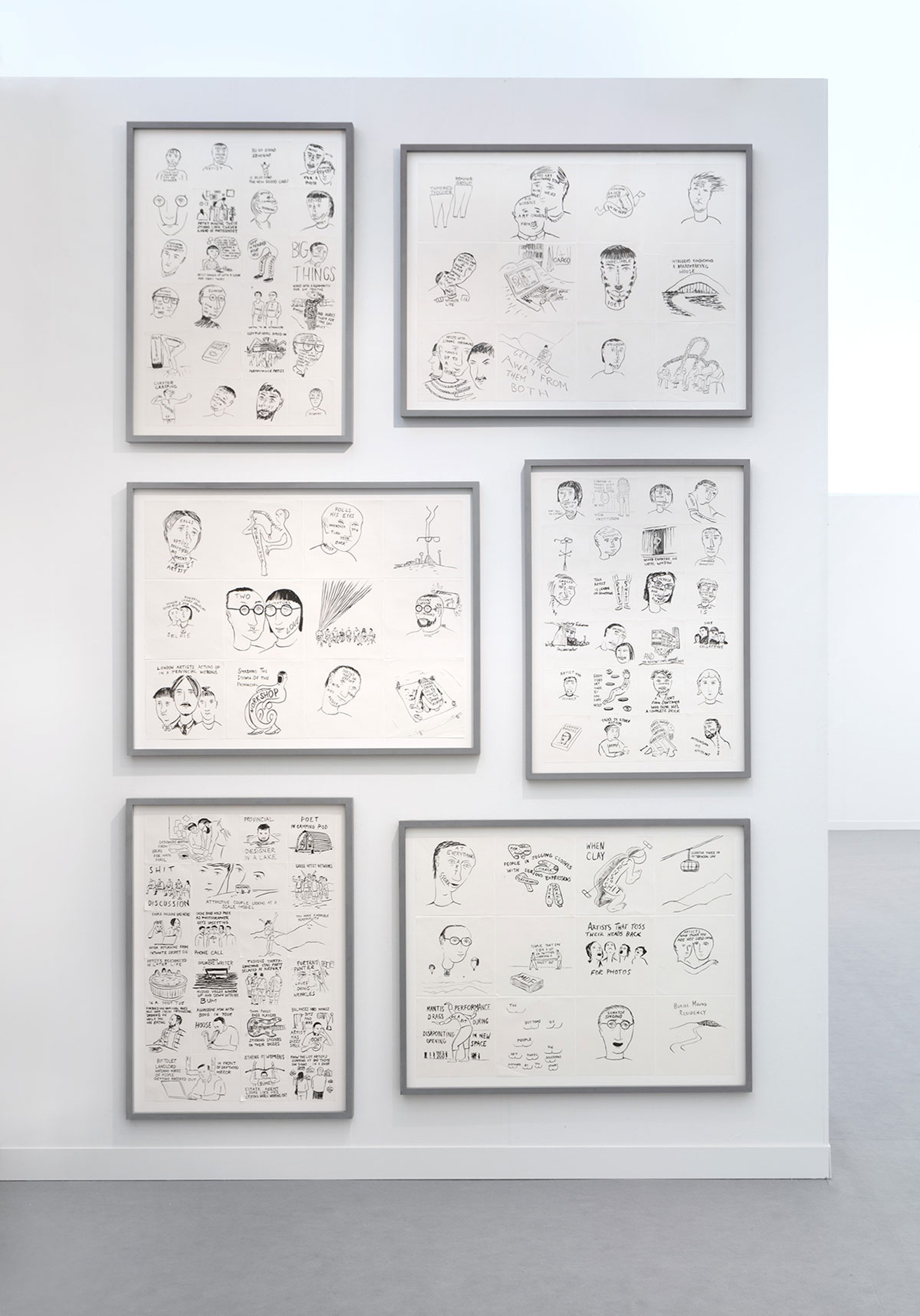
Six framed Bedwyr Williams works from the series, Frieze, 2019. Courtesy Southard Reid



“Bedwyr Williams: I think after a long time of tentatively making work that satirised what I came across as an artist a few years ago I thought I don’t want to do this obliquely any more. I want to say it simplistically almost like a teenager. To talk about curator breath, affected artists, fussy designers and their little shoes, etc. I was always told that you shouldn’t make work about the artworld which always seemed daft to me when people make art about art all the time. I don’t base the drawings on anyone, I usually look at the eyes I’ve just drawn and then I think ‘where have I seen someone like this before?’ Basel? An awful Sunday afternoon performance event? I’ve lost followers. I like wondering which drawing pushed them over the edge…”
Courtesy Southard Reid Gallery and the artist

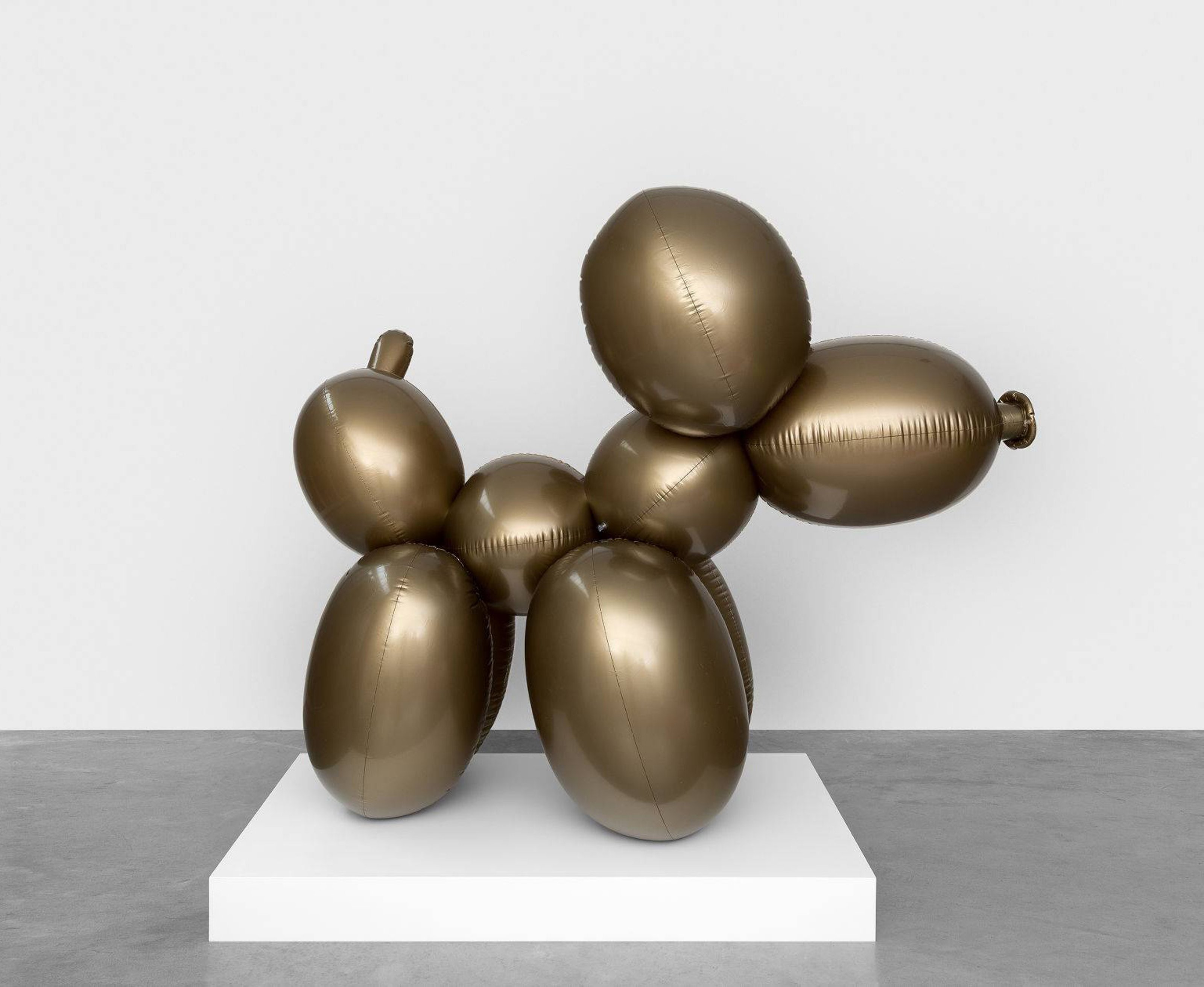
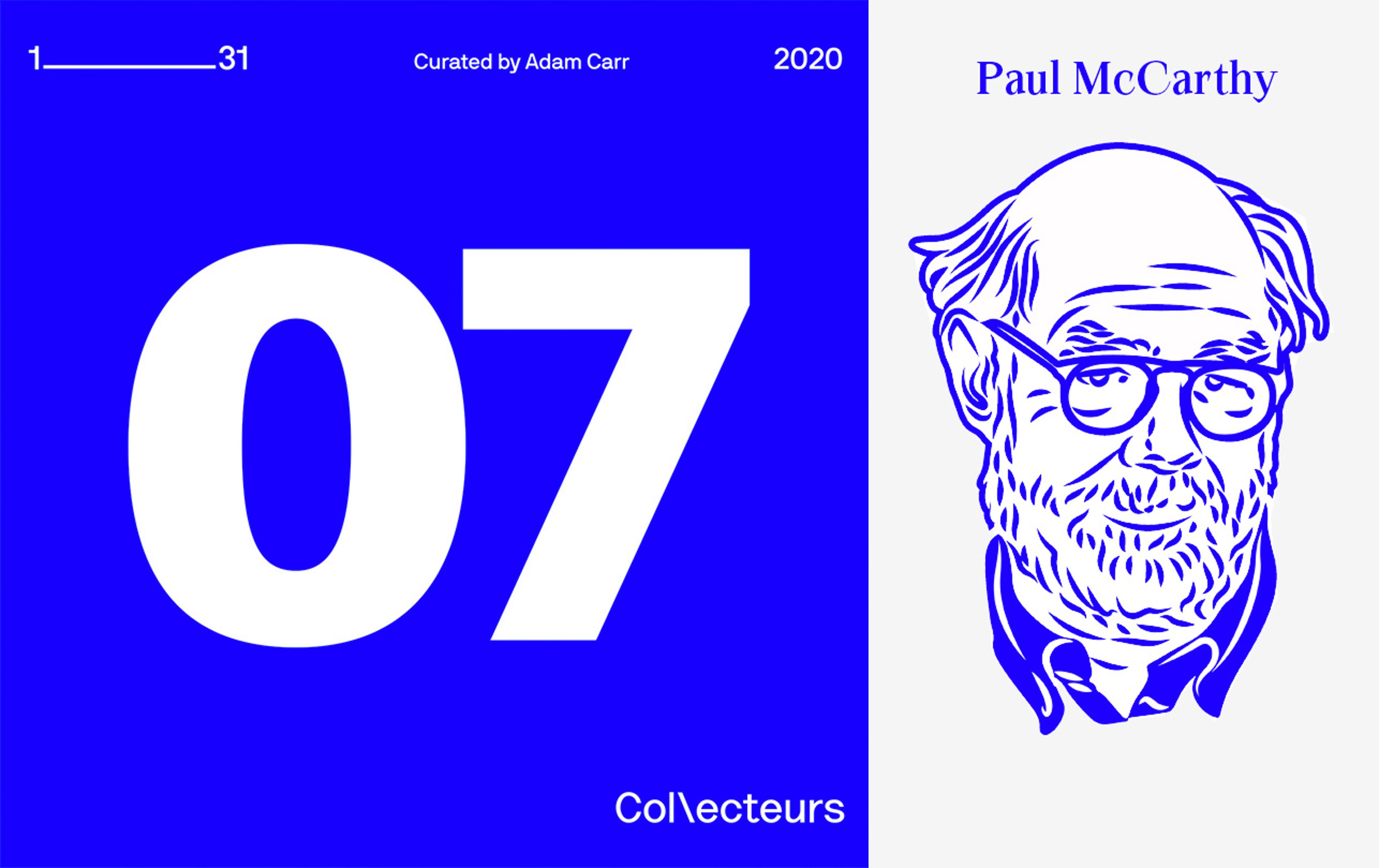

(Sealed PVC polyvinyl chloride plastic)
Provocative and grotesque, Paul McCarthy’s artworks explore and critique the human subconscious through pop culture imagery all the while cementing his position as a critical analyst of the mass media and consumer-driven American society. Here, with “_,_” McCarthy pokes fun at Jeff Koons’ infamous balloon dog sculptures, cheapening it through the use of plastic as the main material and a color without much allure. McCarthy is showing us the darker sides of consumerism, where the glamor and the varnish of an object of desire fades to reveal emptiness and the abject.



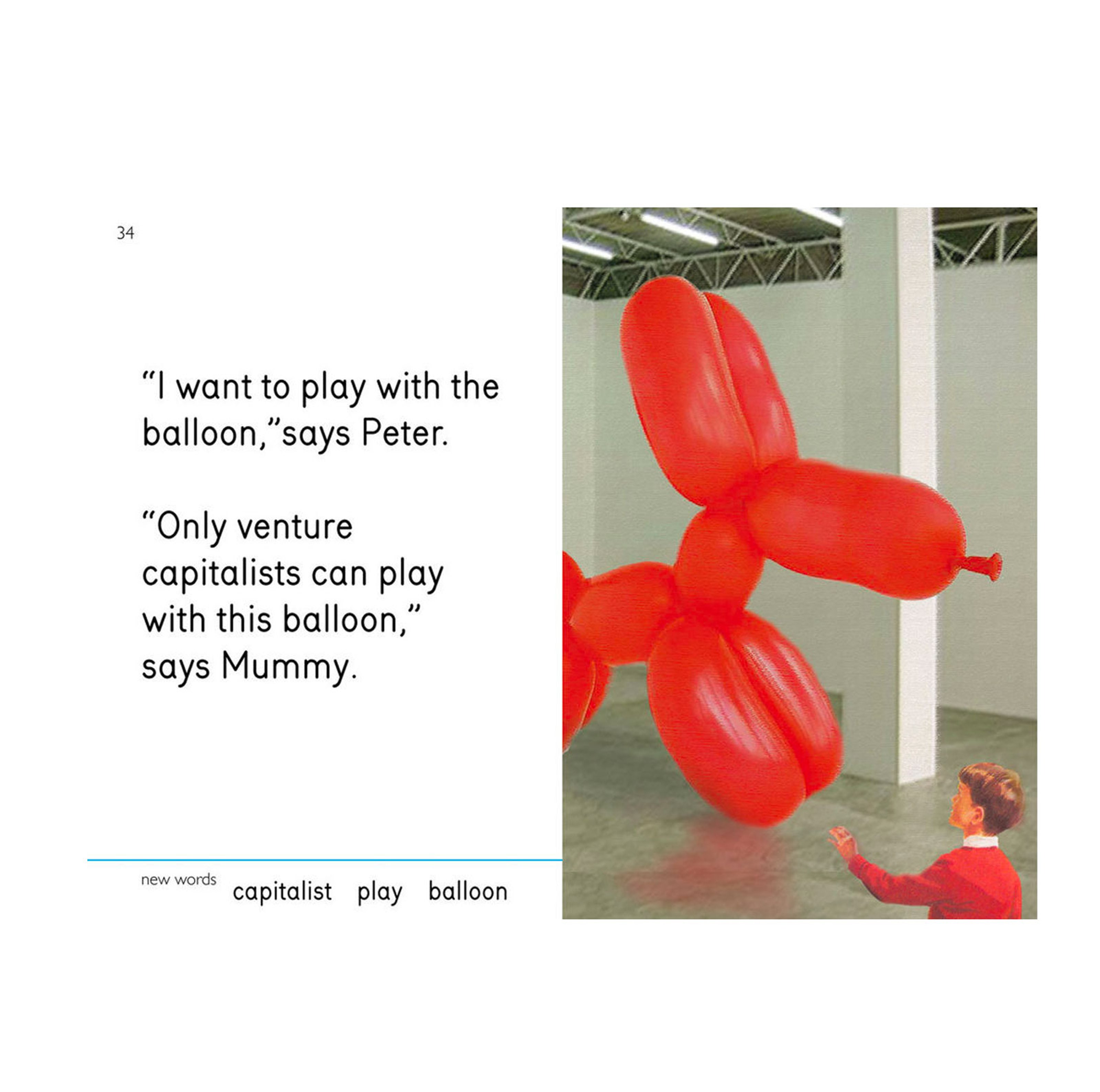
In 2014, artist Miriam Elia created We Go to the Gallery, a tribute to and a parody of the much-loved British Ladybird children’s reading books from the 1960s and ’70s. In it, she pokes fun at the contemporary art world—from oversized balloon puppies to giant genitalia—through two small children as they discover the real meaning of contemporary art with Mummy’s help…
Courtesy of Charles Riva Collection
Excerpt from “We Go to the Gallery” by Dung Beetle Books


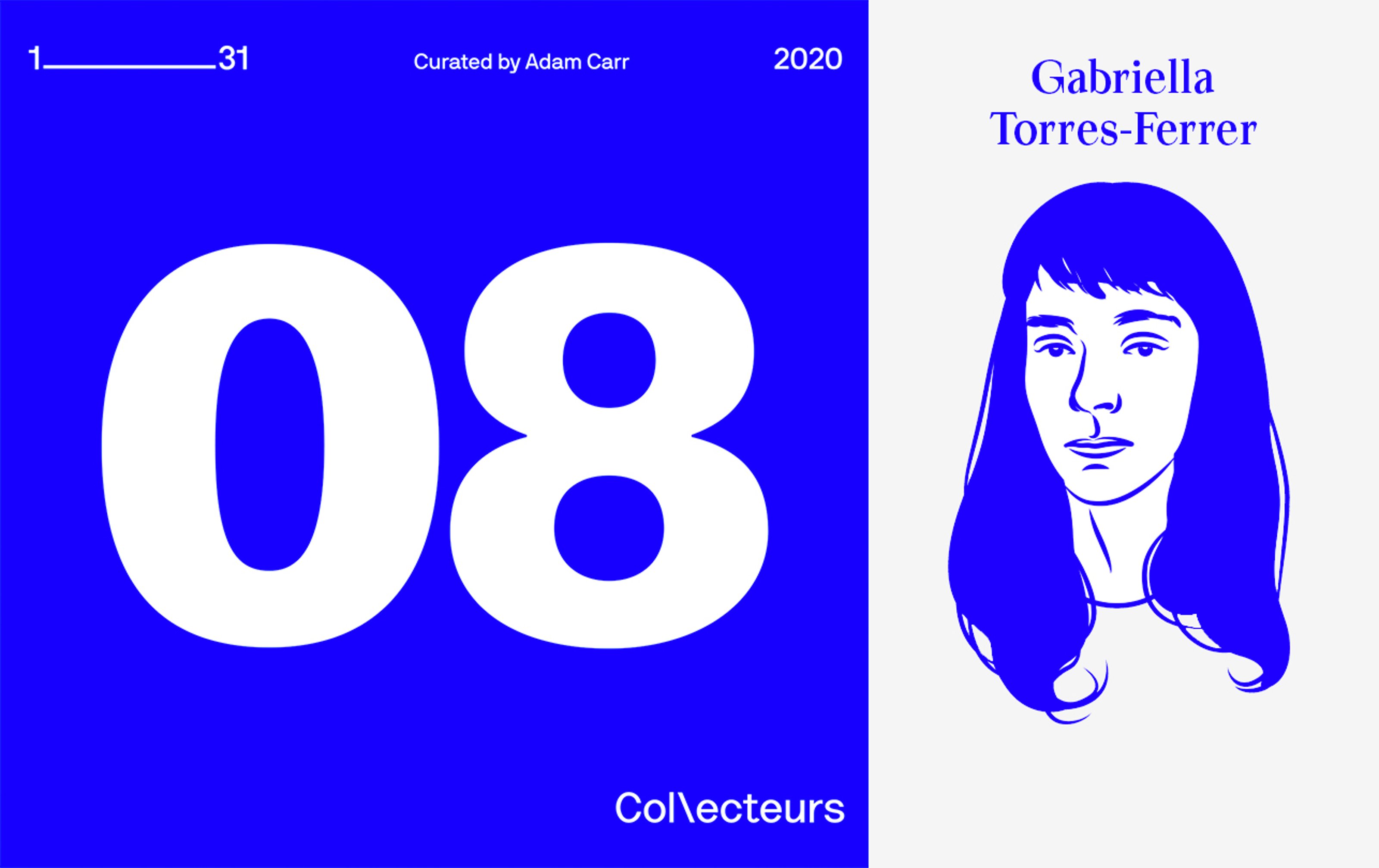

_(_Emergency blankets inflated with helium, movement detection sensors, digital environmental sounds)
For Gabriella Torres-Ferrer, the number eight represents the infinite or never ending pursuit of security and data breaches. We Are All Under the Same Sky, 2018 are sonic sculptural works created from sheets of lightweight emergency blankets shaped as clouds, which are inflated with helium and air. The clouds respond at different levels to visitors and spatial conditions. The visitors are provided with a motion sensor programmed by the artist to register human presence, which in turn activates a series of sounds fragments, all related to the registration and storage of data on the Internet. To what extent is the information we leave behind in the digital space utilized? How does our digital footprint determine the information which, in turn, reaches us? How is this influencing our behavior as a targeted consumer demographic?



“For me, the way out is both simple and profound: it’s just awareness–of oneself, others, and the environment–driven by earnest curiosity. This is why taking a pause, even a brief one, is so important—to actually refuse something, rather than react in a habitual way, takes a lot of attention to the thing it is you’re trying to refuse…”
Jessica Oralkan talks to author, artist, and Stanford professor Jenny Odell about her book, How to Do Nothing, technology and ways to escape the attention economy.
Courtesy of the artist and Embajada, San Juan. Sounds made in collaboration with Enityaset Rodríguez-Santos.


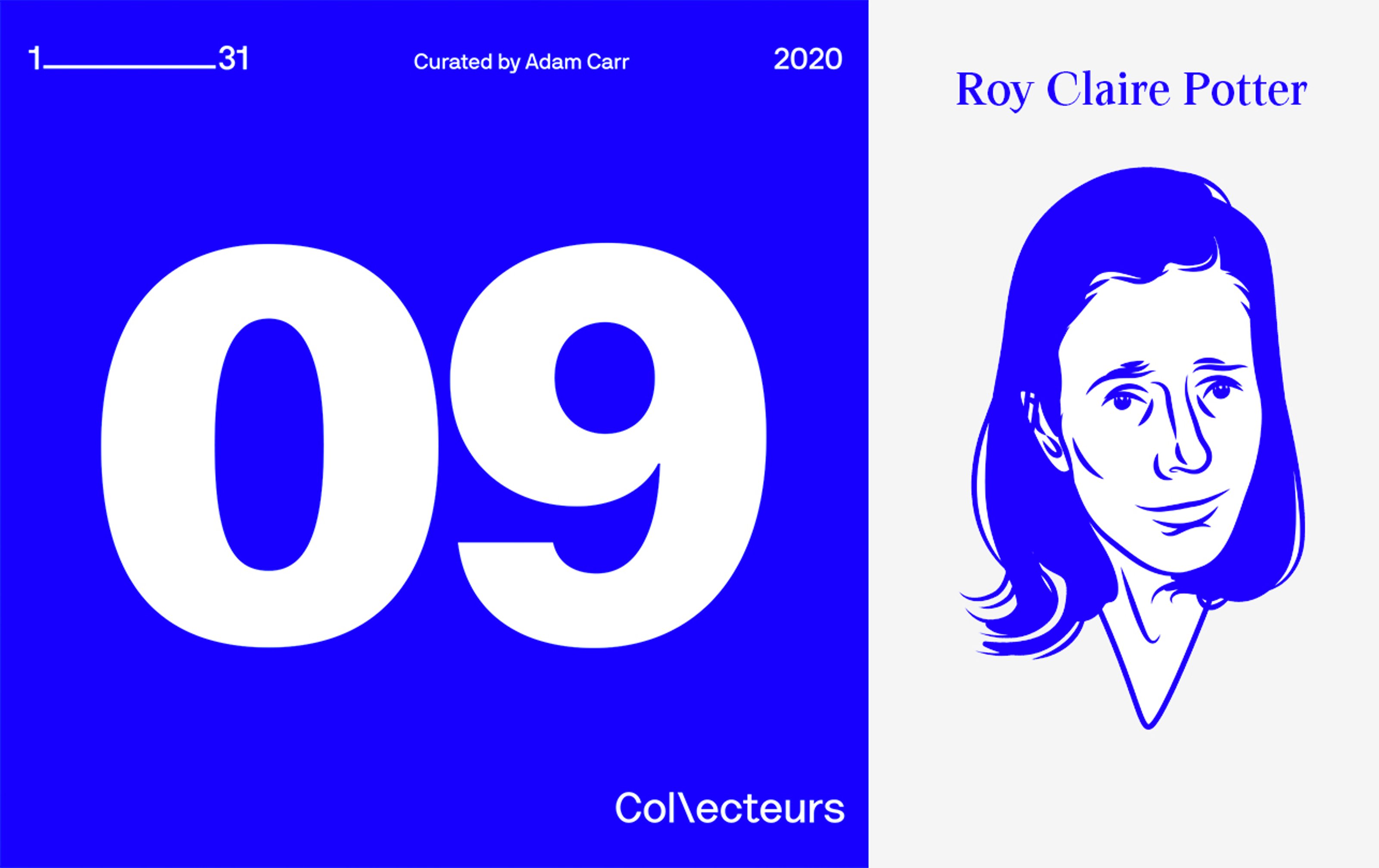

(nine-page designed document)
Roy Claire Potter is an artist who works primarily with writing, producing works for performance, publication, installation, and film with the recurring theme of social and intimate violence and its effects on coherent identity narratives. Their works are received by audiences of contemporary art, experimental music, and literature. ‘Lads of Aran’ is a nine page research document that traverses references, including Claude Lévi-Strauss, Robert J. Flaherty, and Triga Films.


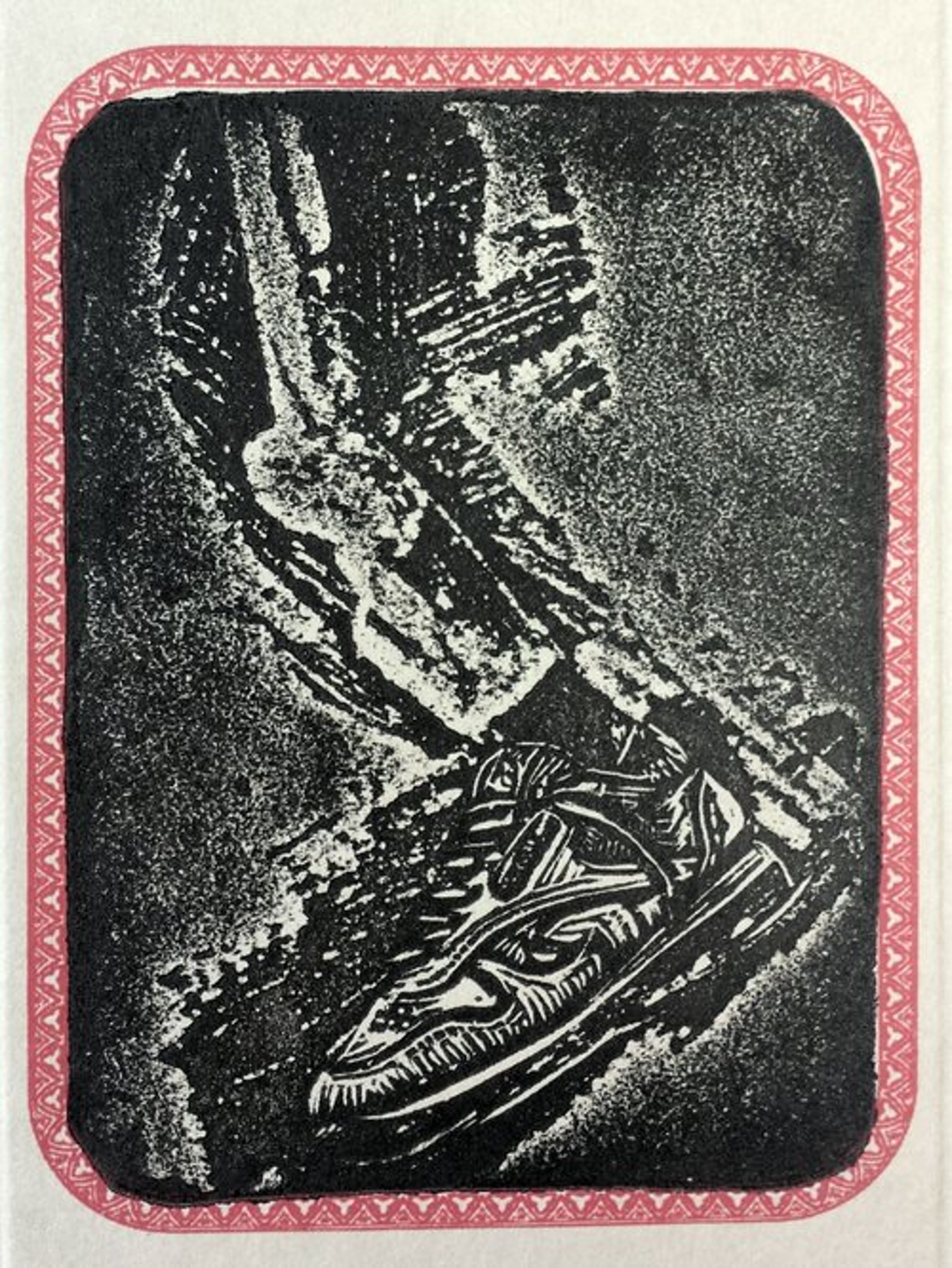
“He stands in front of the bedsheets, but he stands before the bluish light of a screen. In front of the bedsheets, before a camera, beside the computer is beside him. Quickly at first because he’s eager to start, fingers flexing and moving separately, pushing up into the glove, his hands flexing to get them on, get them on. Gloves fixed at the wrist, strapped. The strap makes them fit his hands then slowly rub together. Smell of a glove after smoking…”
An audio excerpt and transcript from Roy Claire Potter‘s CHAVSCUMBOSS, a poetic description of watching Youtube videos uploaded by a man with the same user name as the title.


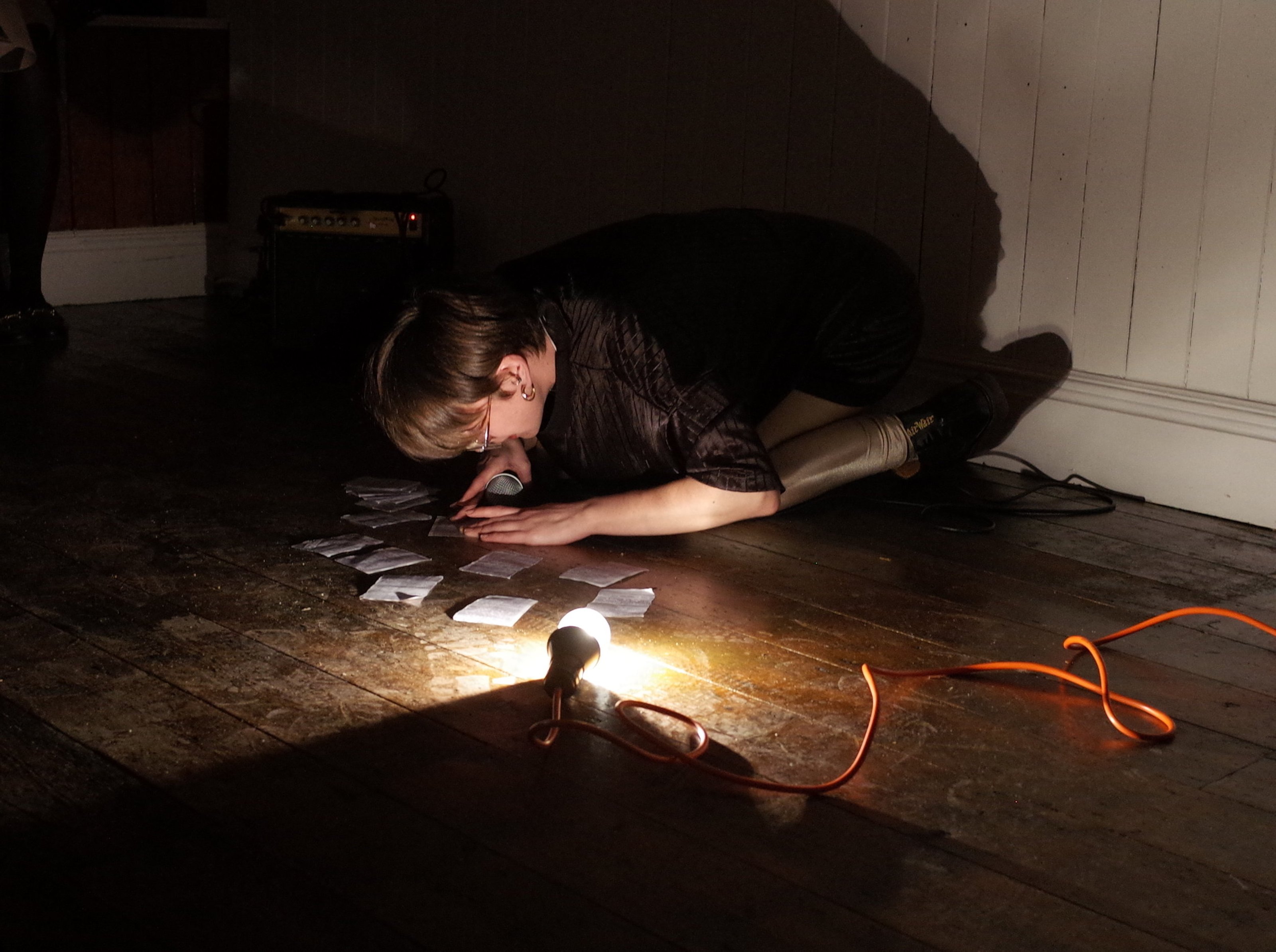
“The political landscape of 2019 led to a rehash of long established prejudices regarding regional attitudes to art, culture and politics — that experimentalism and queerness are somehow the exclusive domain of a metropolitan elite and beyond the man on the Cumbrian omnibus. By stark contrast, Potter’s work does the business of actually re-presenting the case for an aesthetic weirdness that has always been intimately boundaried and unbounded by traditional class and regional identities. It is some of the most vibrantly political work of the time…”
image: Roy Claire Potter – Touching, reading, 2016 (Performance, 20 mins)
Courtesy the artist

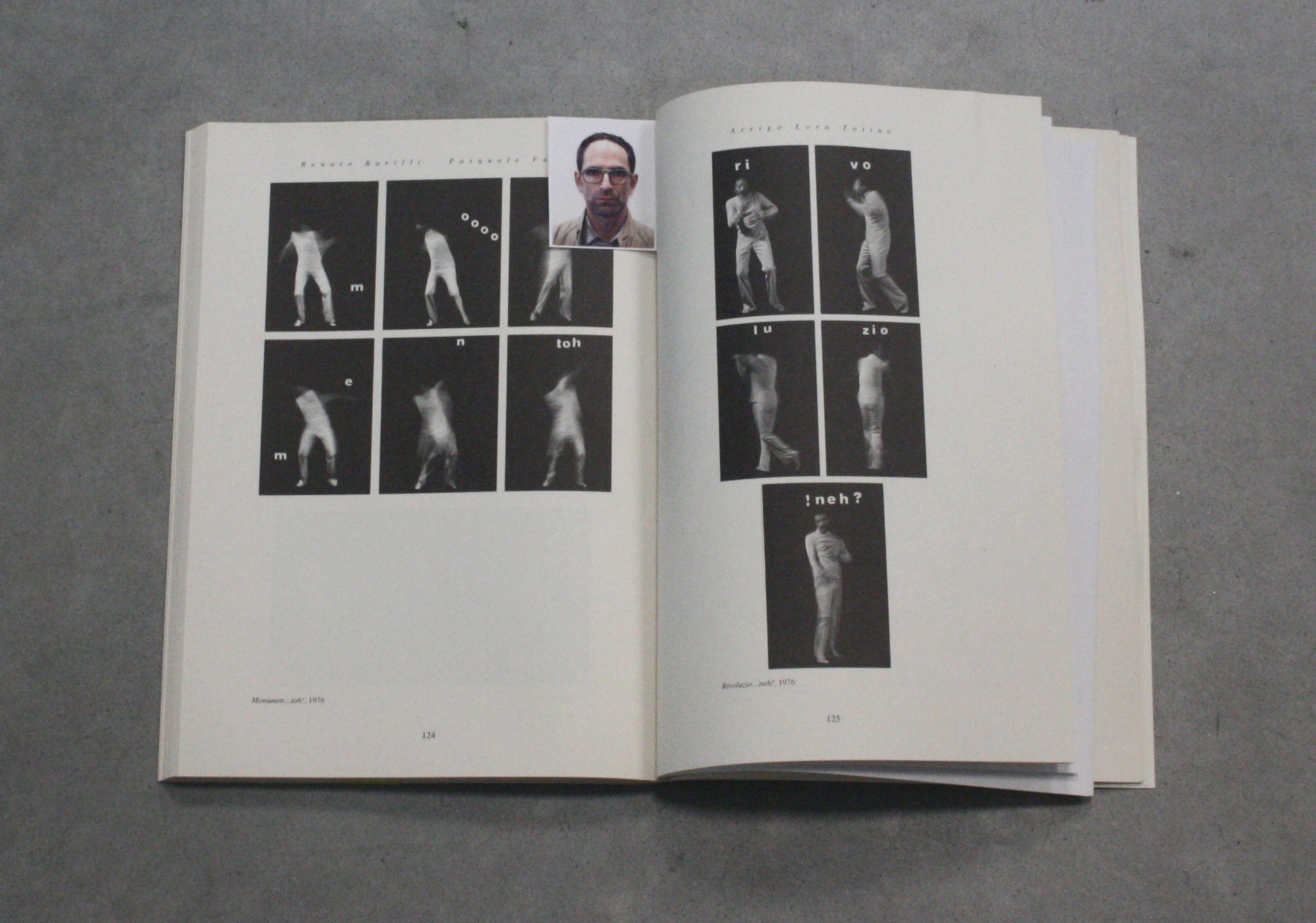


Jonathan Monk’s Lost in Your Head is the result of a 10-year project that saw the artist send passport photographs of himself to Collezione La Gaia which they then hid in the pages of books in their library. The work is part of a number by the artist that he has produced over the years that position a collector as part of the work itself, for example postcards sent to the Guggenheim in New York of the same place pictured in the day and in the night and SMS messages sent to a collector describing the weather at the time of sending.
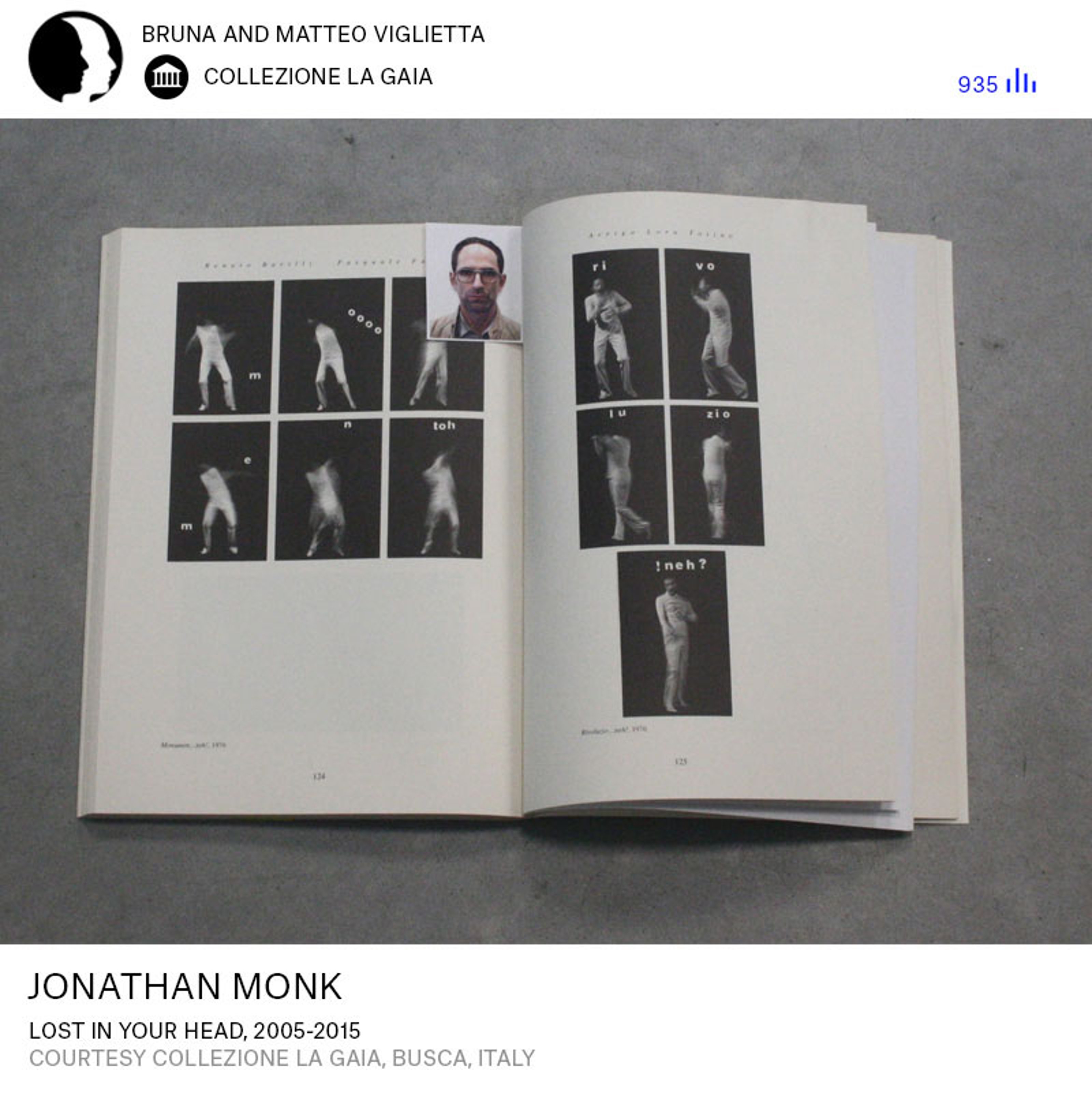


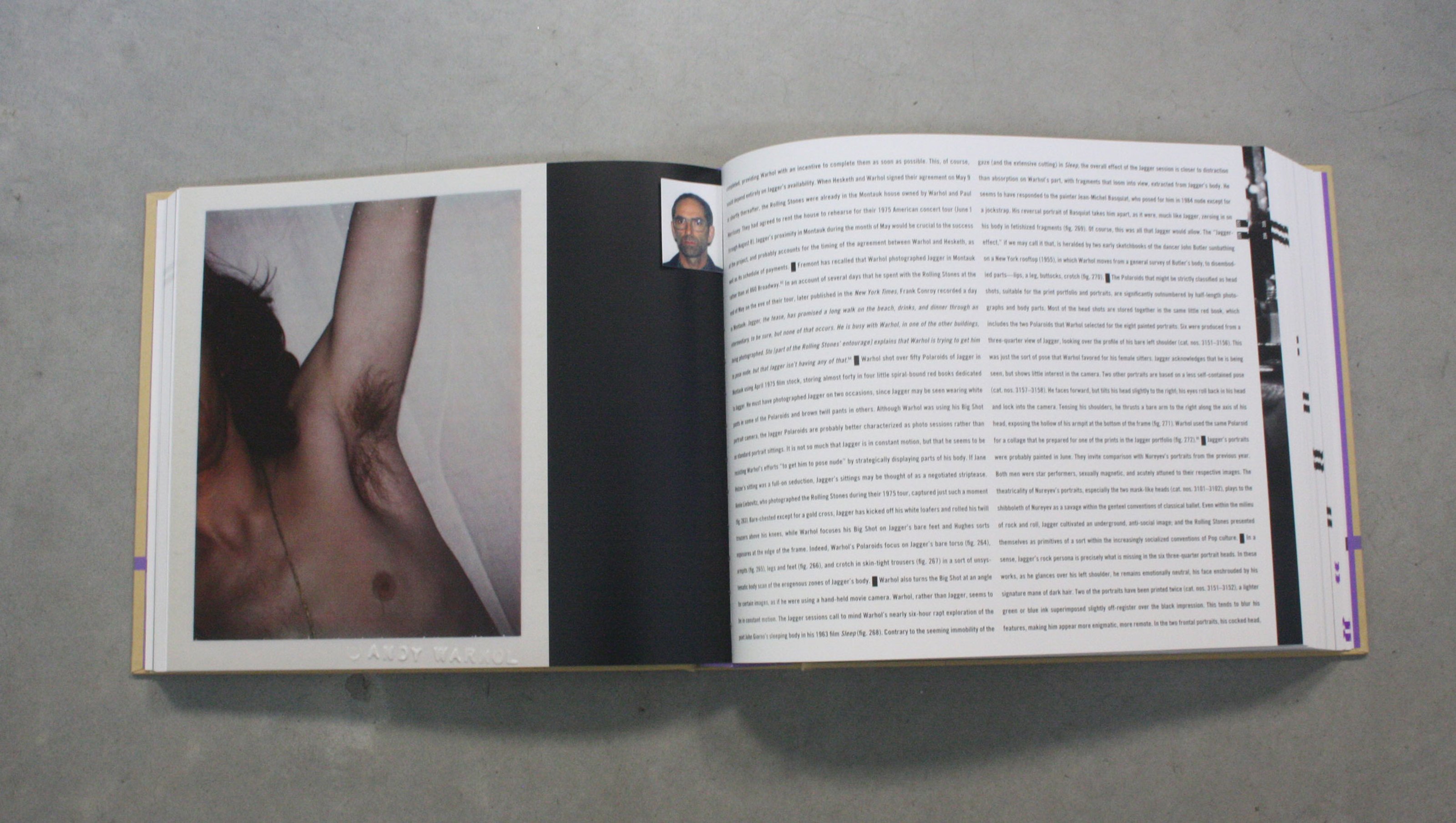
This conversation began in 2005 and was initially published in the magazine W Art: arte contemporanea. It was continued for and published in the following publications: Neue Review, Janus Magazine, Newspaper Jan Mot, FITAC (International Forum on Contemporary Art Theory), UOVO, A_rttuner_, MOSTYN.org and updated in 2020 for Collecteurs for the exhibition 1-31…
Courtesy the artist and Collezione La Gaia

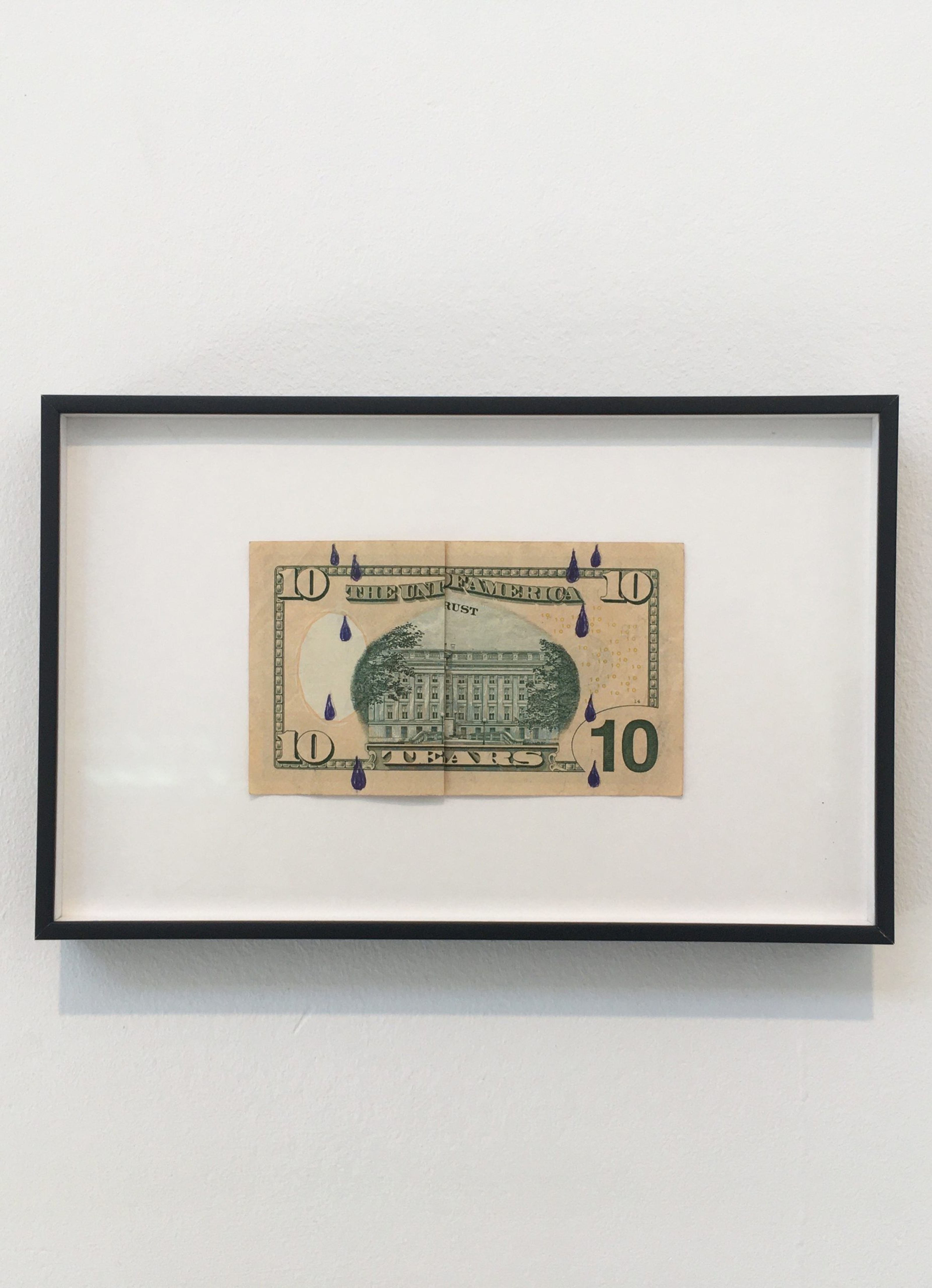
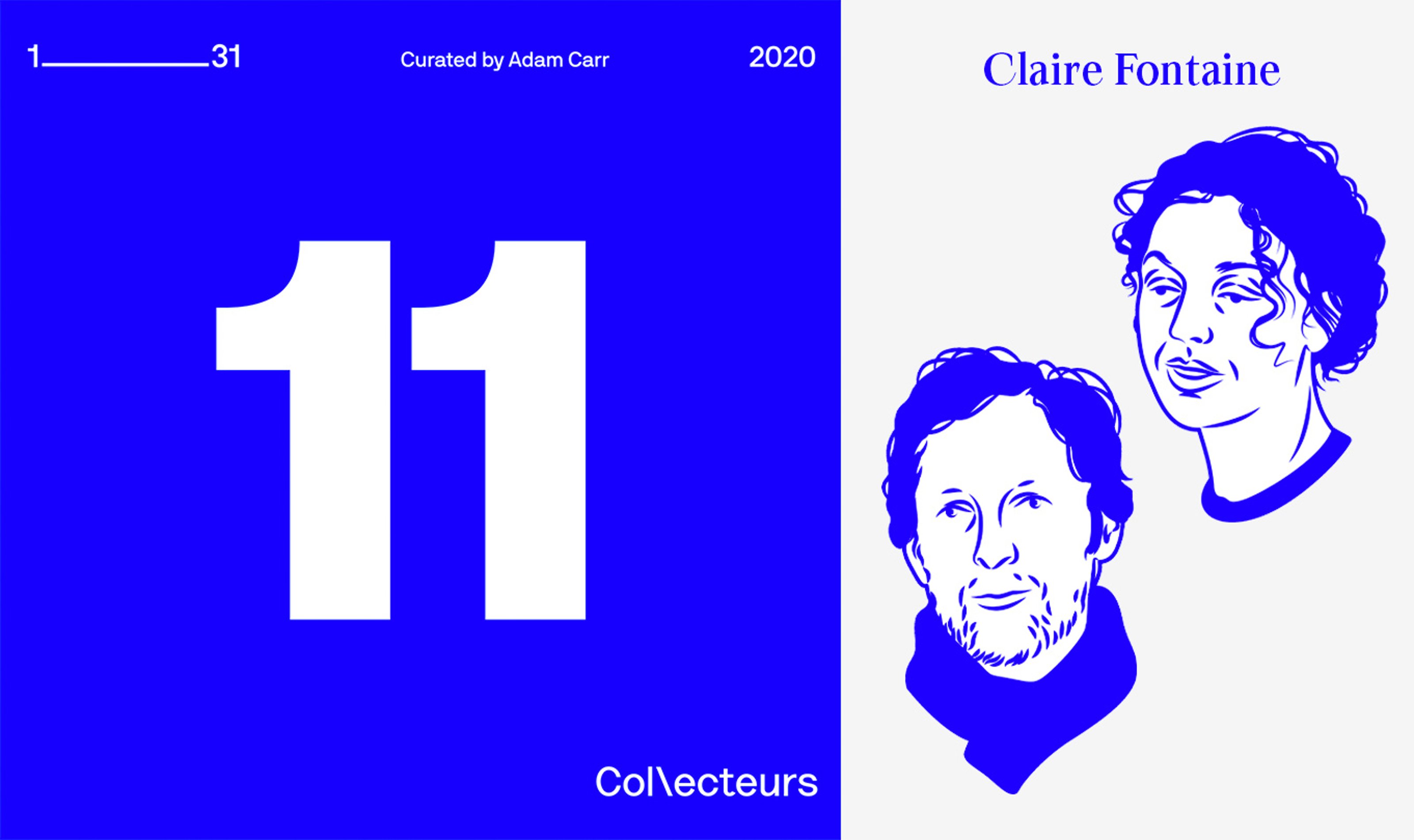

There are ten tears and one fold in this unlimited edition of Untitled (Rust & Tears), 2012 by Claire Fontaine – a carefully folded 10 dollar bill that makes the words “rust” appear, (when the t of “trust” disappears under the fold) and “tears” (the letters that remain visible from the word “ten dollars”). This simple trick transforms the banknote into a messenger of the pain inflicted by US economic policies. The blue drops scribbled in a fountain pen on its surface, suggest the false liquidity of money turning into rust and tears.

Claire Fontaine – Untitled (same war time zone), 2016-18
Evrim Oralkan discusses freedom, deep transformation, and the existential value of art in conversation with the artistic collective, Claire Fontaine.

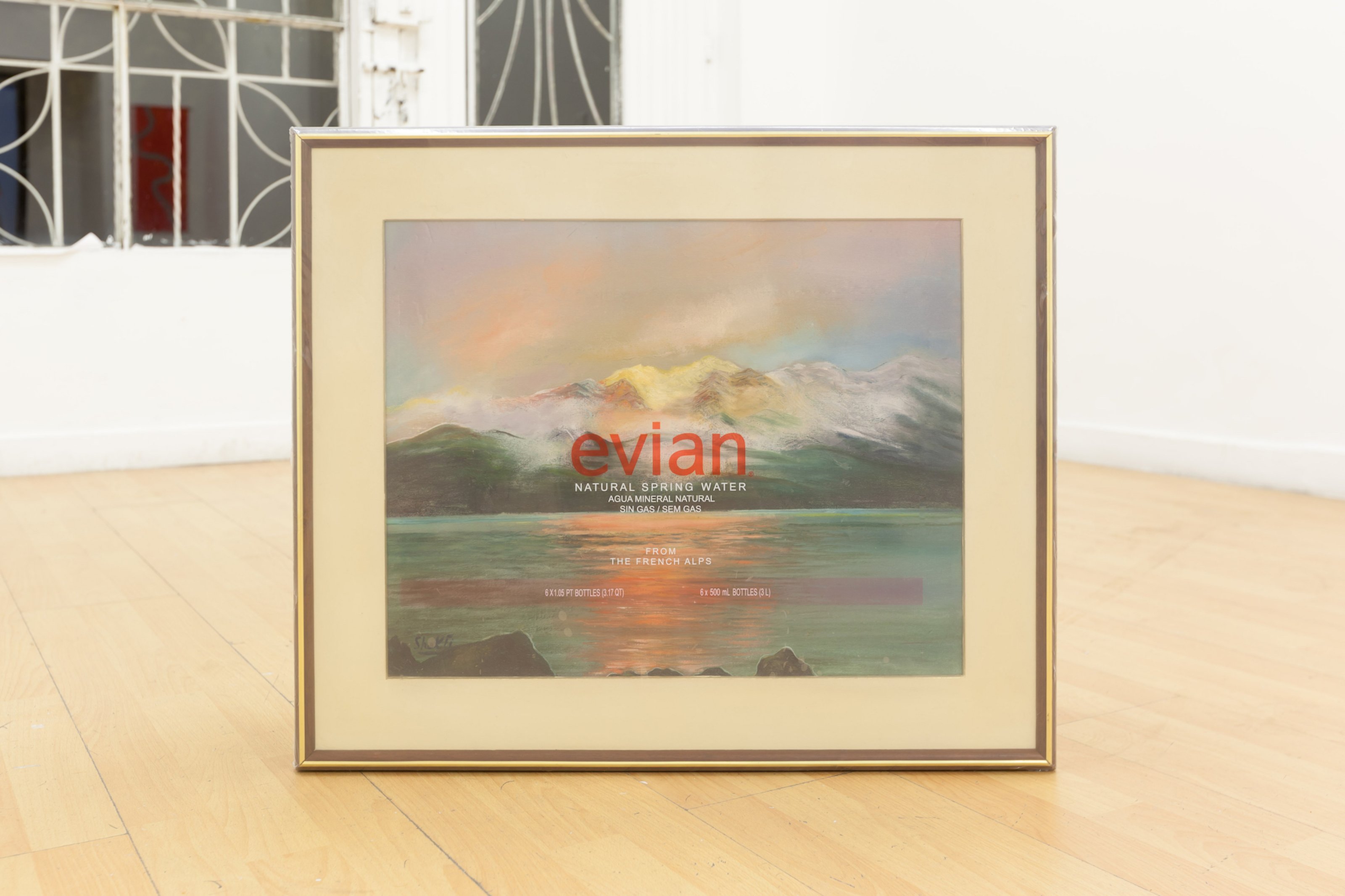
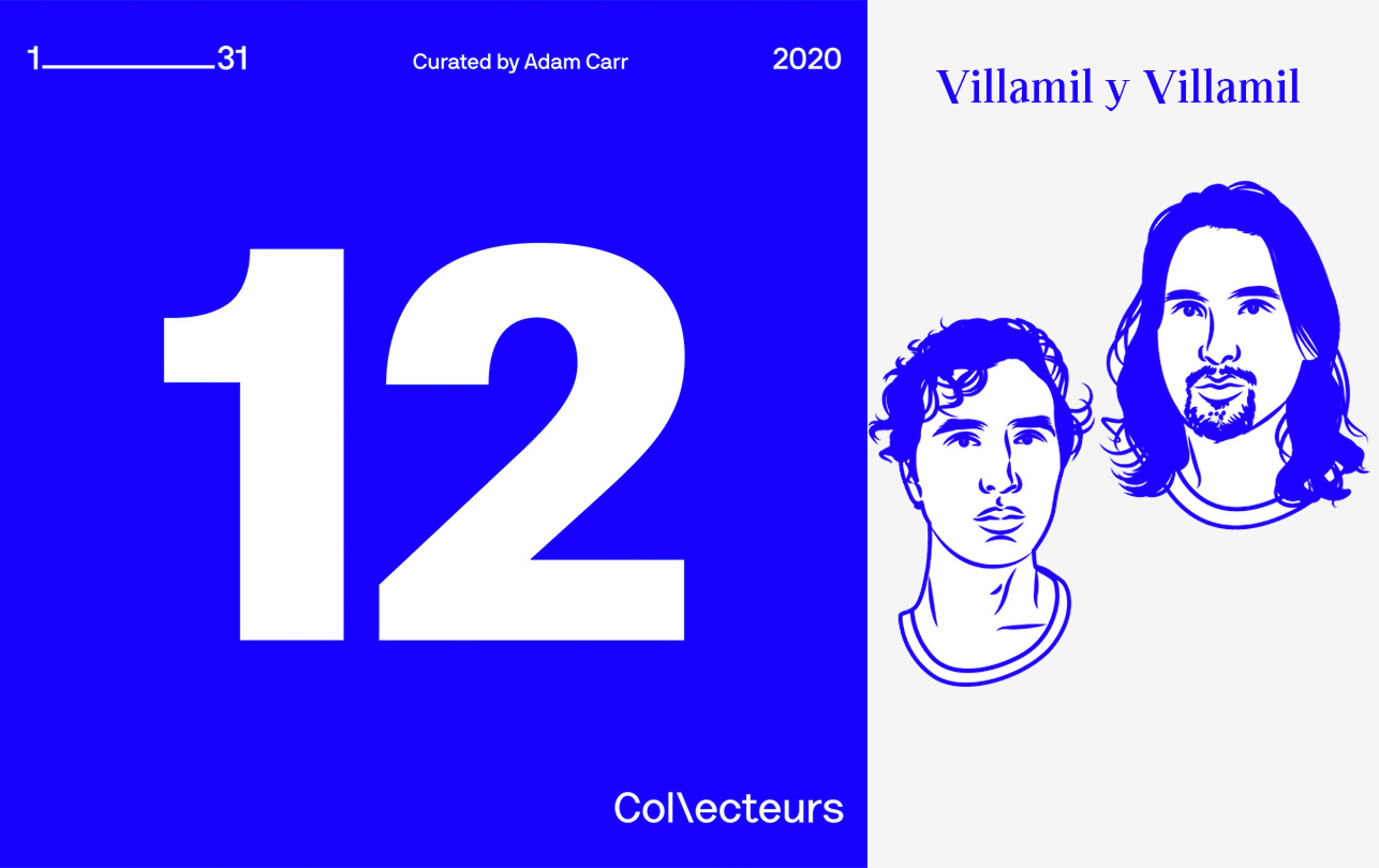

(12 frames and a painting packed in shrink plastic)
Villamil y Villamil is a collaborative duo formed by artists and brothers Felipe Villamil and Sebastian Villamil. The work 12 Pack exemplifies a central concern for the artists which is connected to processes of hybridization manifested in official and unofficial markets, where symbols of mass culture are appropriated and reinterpreted cyclically. The piece is composed of twelve frames, including one found oil painting, which are packed using the same method used for the wrapping of water bottles in supermarkets. The work points to the relationship between different forms of representation of nature, especially in the selling and trading of goods worldwide.
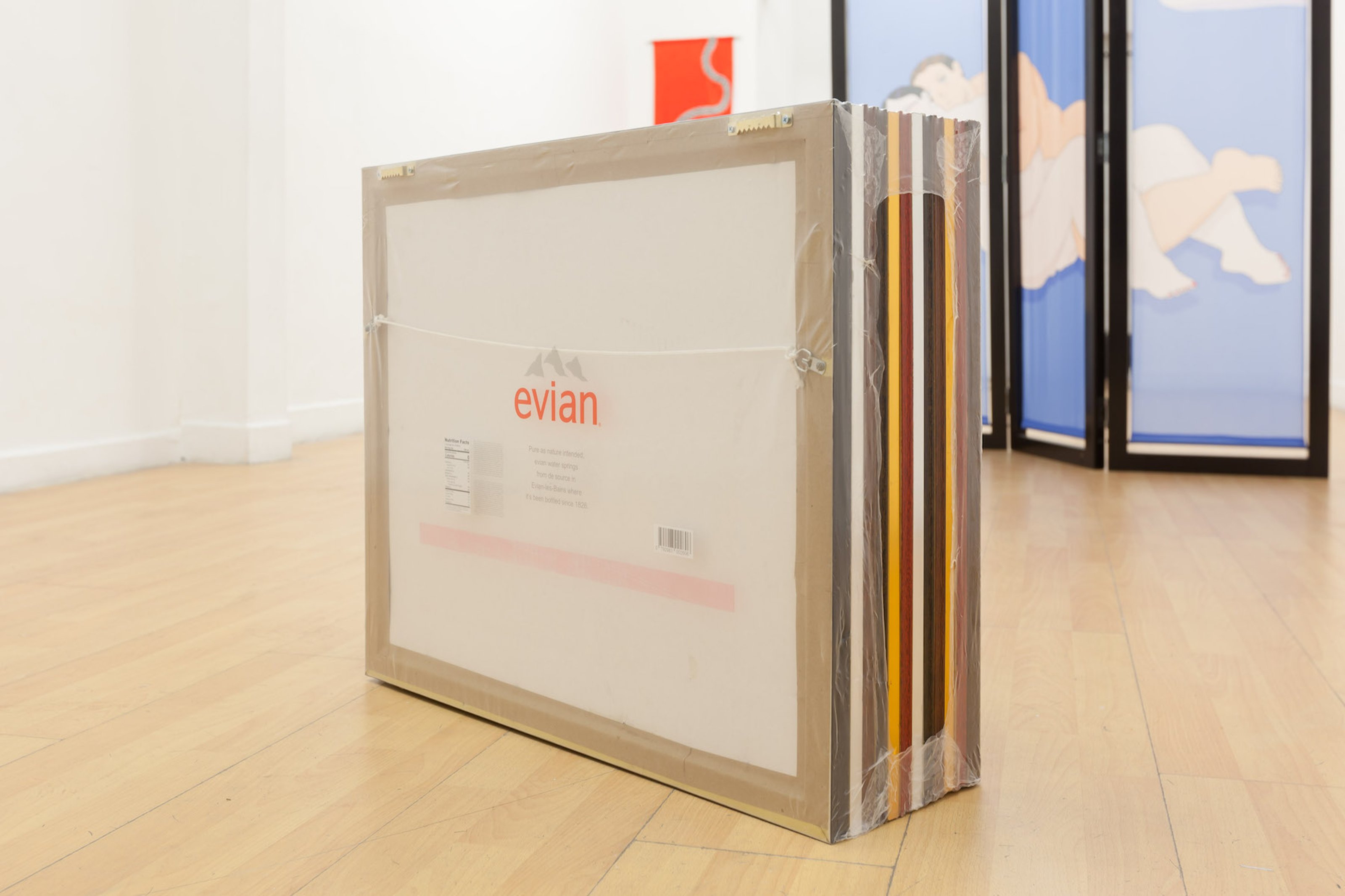


“If global emissions are not reduced significantly over the next few decades, it’s likely that much of the Arctic will start to look permanently like the image of an unknown location depicted in the found painting used in Villamil y Villamil’s 12 Pack, 2018: snow-sprinkled hills and open water under a blue sky. In the short term, it could be good news for a handful of companies who want to ship their products around the world more quickly than before. Some might even use their exploitation of the newly opened routes to boast that they are cutting their emissions by transporting their goods shorter distances. In the medium and long term, however, it constitutes bad news for everyone – shipping companies included…”
Artwork Photo: Santiago Pinyol
Courtesy of NUEVO MIAMI

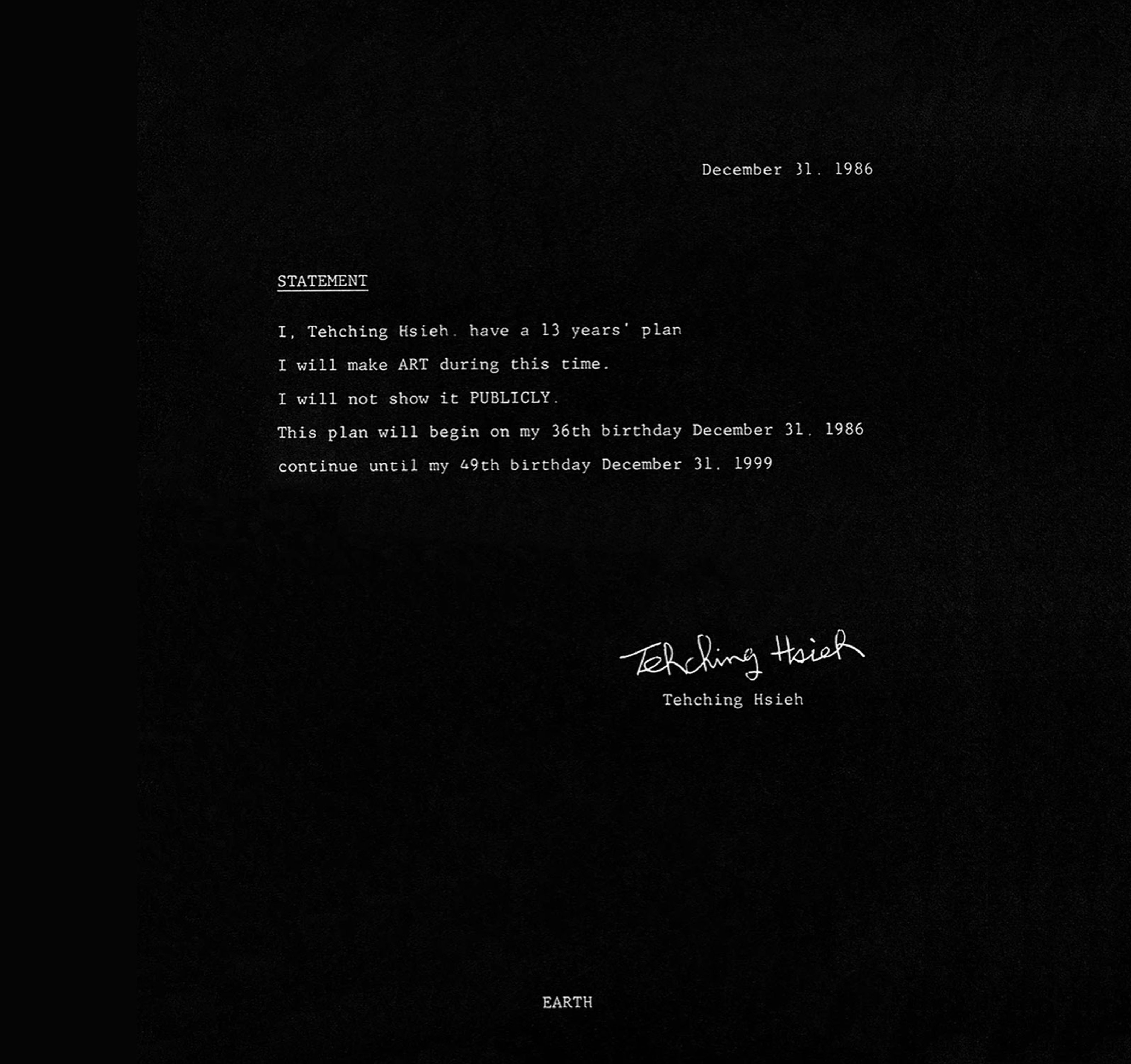
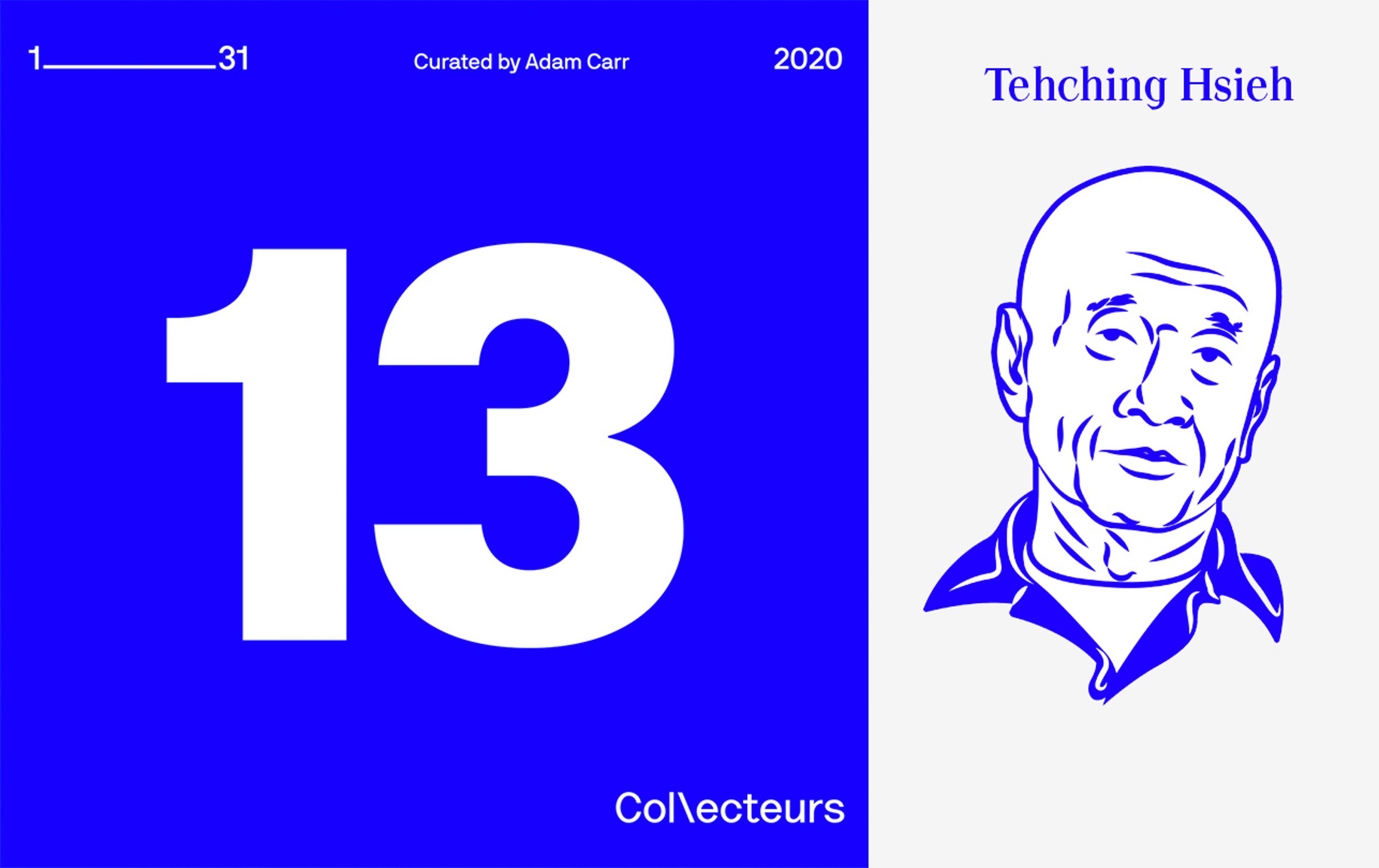

Tehching Hsieh’s last and longest performance began on his 36th birthday, 31 December 1986, and lasted until his 49th birthday, 31 December 1999. Unlike his earlier One Year Performances which meant to leave a record of time behind, he declared not to show anything publicly for a period of 13 years, to “live in a longer duration of time to respond to art.” Thirteen Year Plan is a bold attempt to exist under the radar, without any expectation, and ultimately claiming one’s own a sense of freedom_._

Tehching Hsieh – Time Clock Piece (One Year Performance 1980–1981)
It’s hard to believe that one of the greatest performance artists alive could have completed only six works in the span of his 21 year career. But Tehching Hsieh isn’t your average artist… Upon his arrival to New York, Hsieh began doing what he could to get by, working as dish washer and construction worker all the while exploring how to “change life into art.” Jessica Oralkan speaks to Tehching Hsieh about being an outsider and the importance of going back to life to find the art.

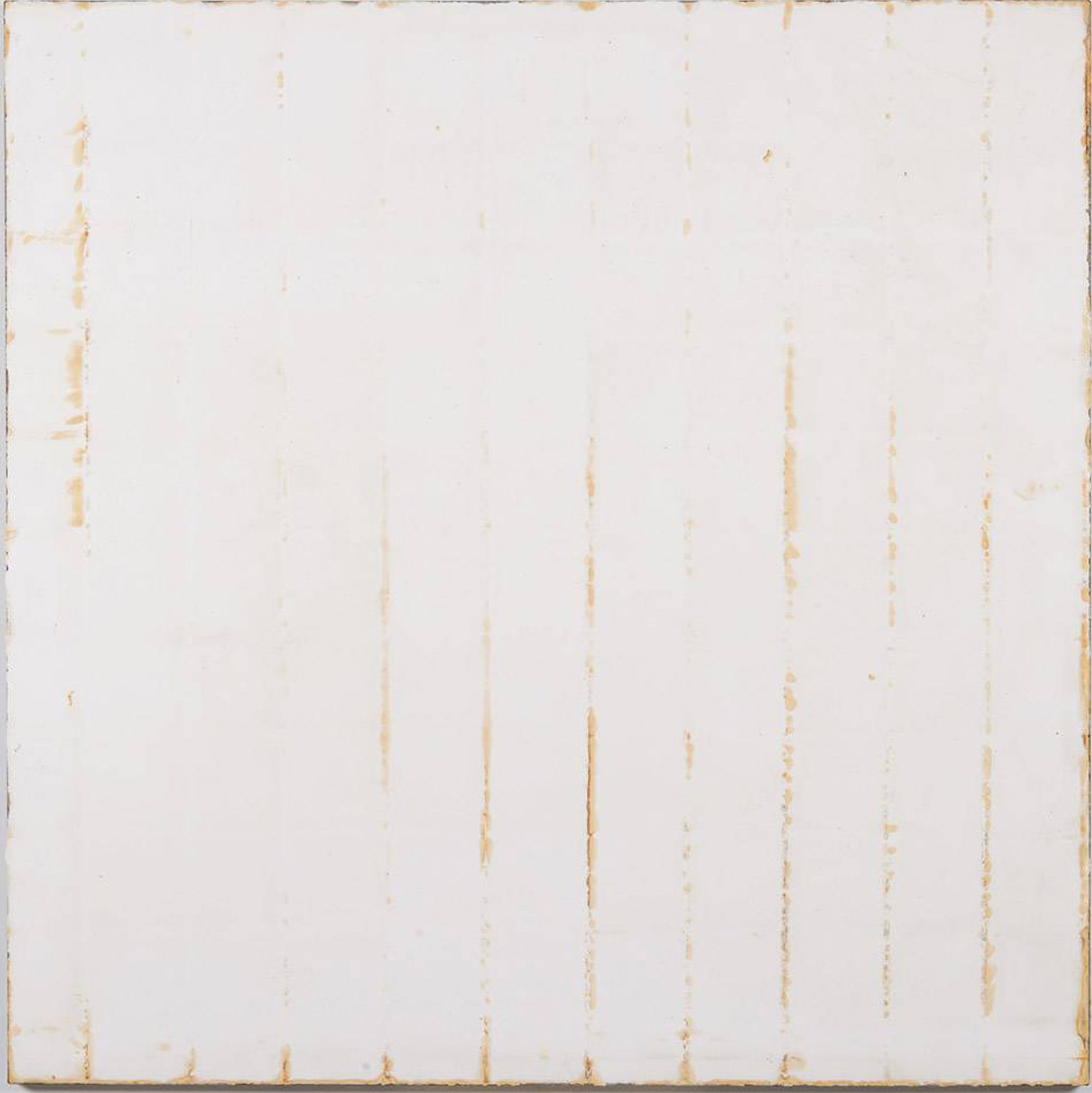
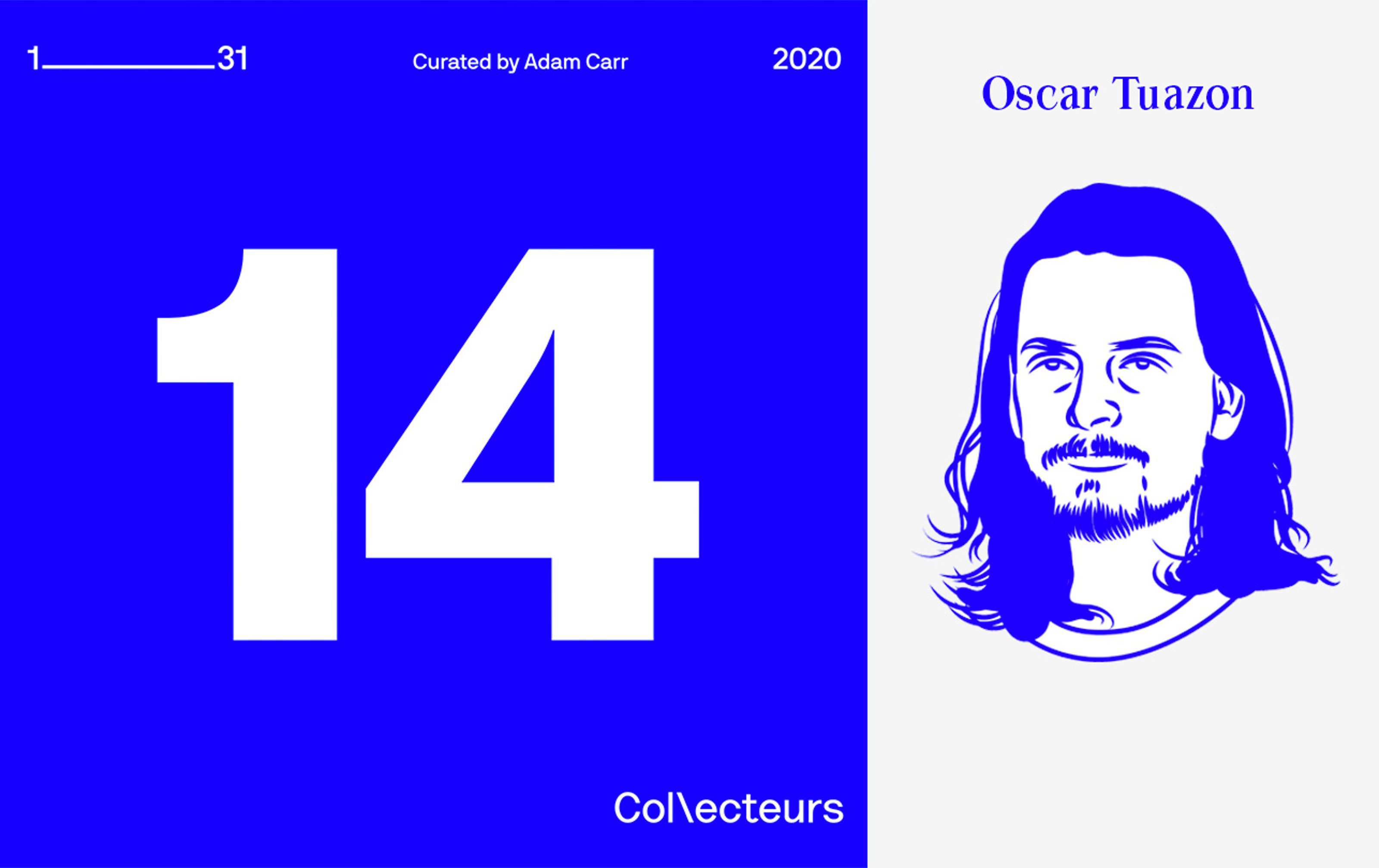

There are 12 lines plus two outer edges in Oscar Tuazon’s work Dictations from Outside, 2014. Conflating sculpture and painting, the piece is part of a number involving a square of plaster being placed over a steel diagonal grid. Through their process of making, the water in the wet plaster has rusted the steel to leave a pattern on the surface of the work.
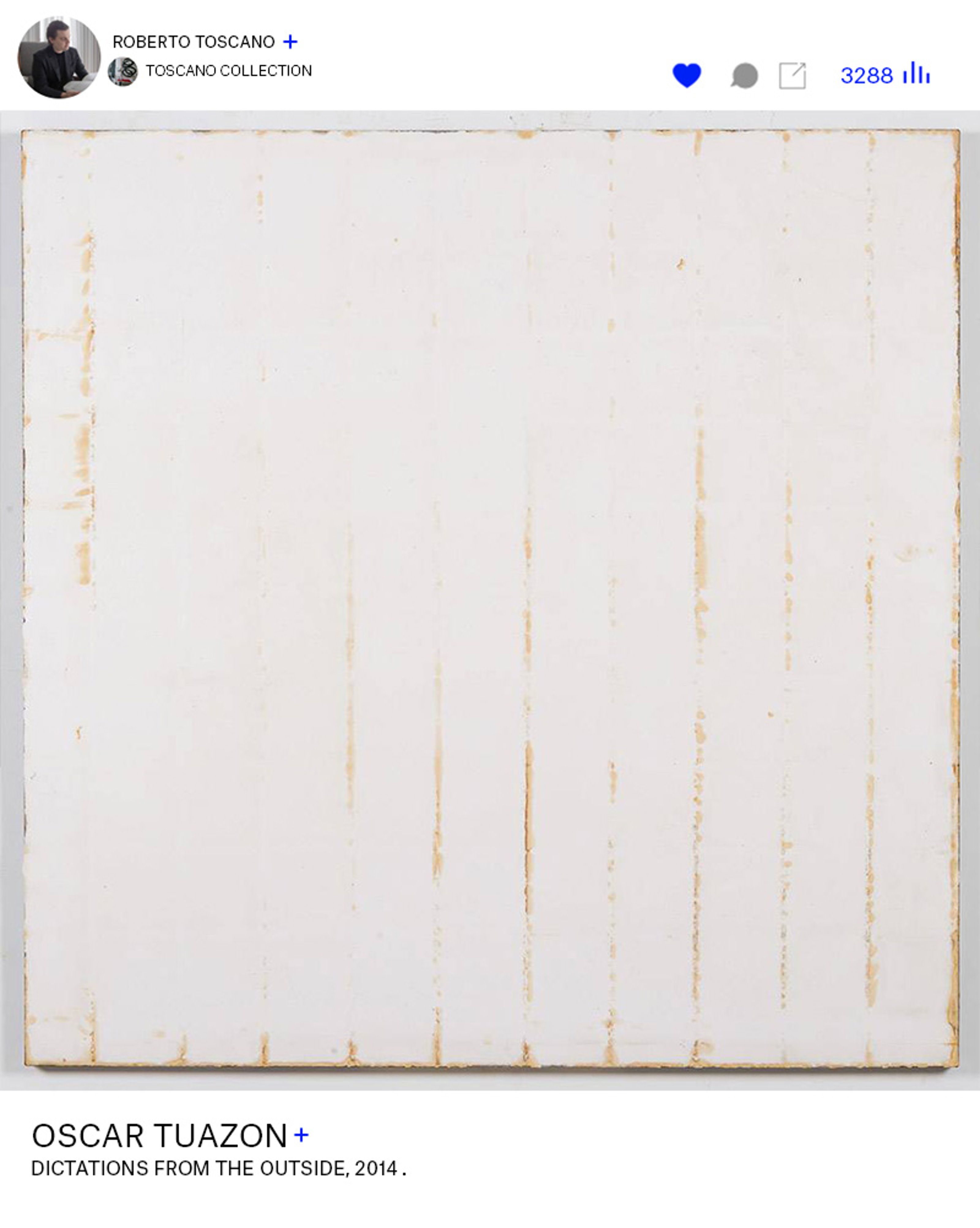



artwork: Oscar Tuazon – Rainbender (LAWS), 2018. Courtesy Luhring Augustine.
Building your own home is probably one of the most human dreams that we share as a species. How it should look like or which functions it might fulfill are naturally a personal matter, but most do have an idea of how the place, in which they would like to live, work, and prosper, should look like. And so it is unsurprising that capitalism has appropriated the dream and has been selling it like candy. As financial institutions played with the capitalist promise of creating one’s own home by selling mortgages, they ignored that the financial market couldn’t realistically cover the risks taken, including the value given to buildings and houses. At least we are now able to diagnose the reasons for the financial crisis of 2007 and 2008 as this…




(condom, SPF 15 sunscreen)
Drawing inspiration from kitsch, everyday objects and bodily fluids, Puppies Puppies employs the readymade as a vessel for revealing personal histories. In “Untitled, 2014,” she fills a condom with SPF 15 sunscreen, creating a physical body without the actual body present, while telling a complex story about love with just two simple materials.
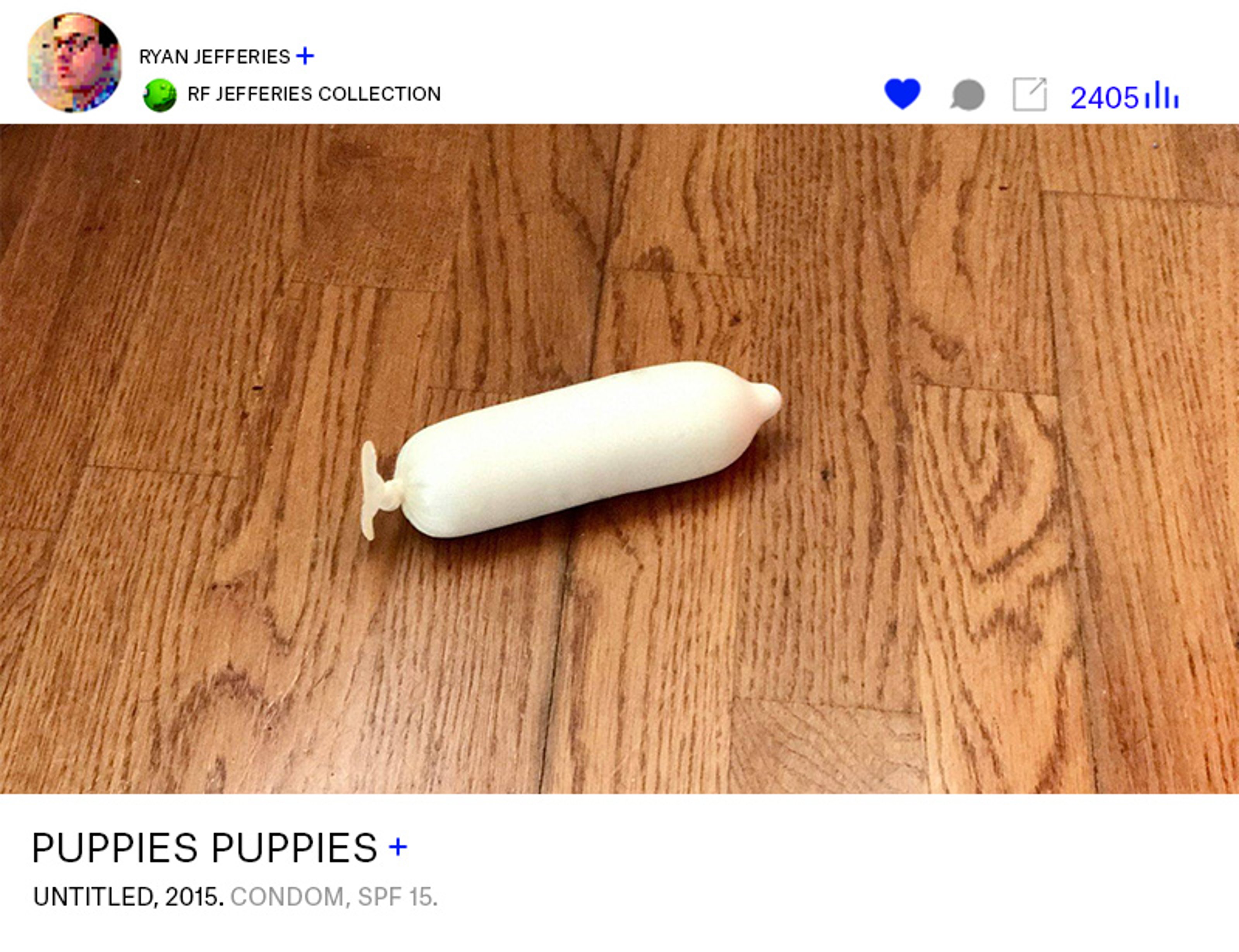



image: Rink Foto, White Night Riots, Gelatin Silver Print 1979. Courtesy of the artist and Grey Art Gallery, NYU
On the fourth installment of Collecteurs’ collaboration with Working Class History, a project dedicated to bringing to light the everyday actions of citizens, we take a look into stories of LGBTQ resistance. Featured on this article are stories on the White Night Riots in San Francisco in 1979, and the story of Mexican revolutionary Amelio Robles Ávila—who stuck his gun in the face of individuals who mis-gendered him until they acknowledged him as male.


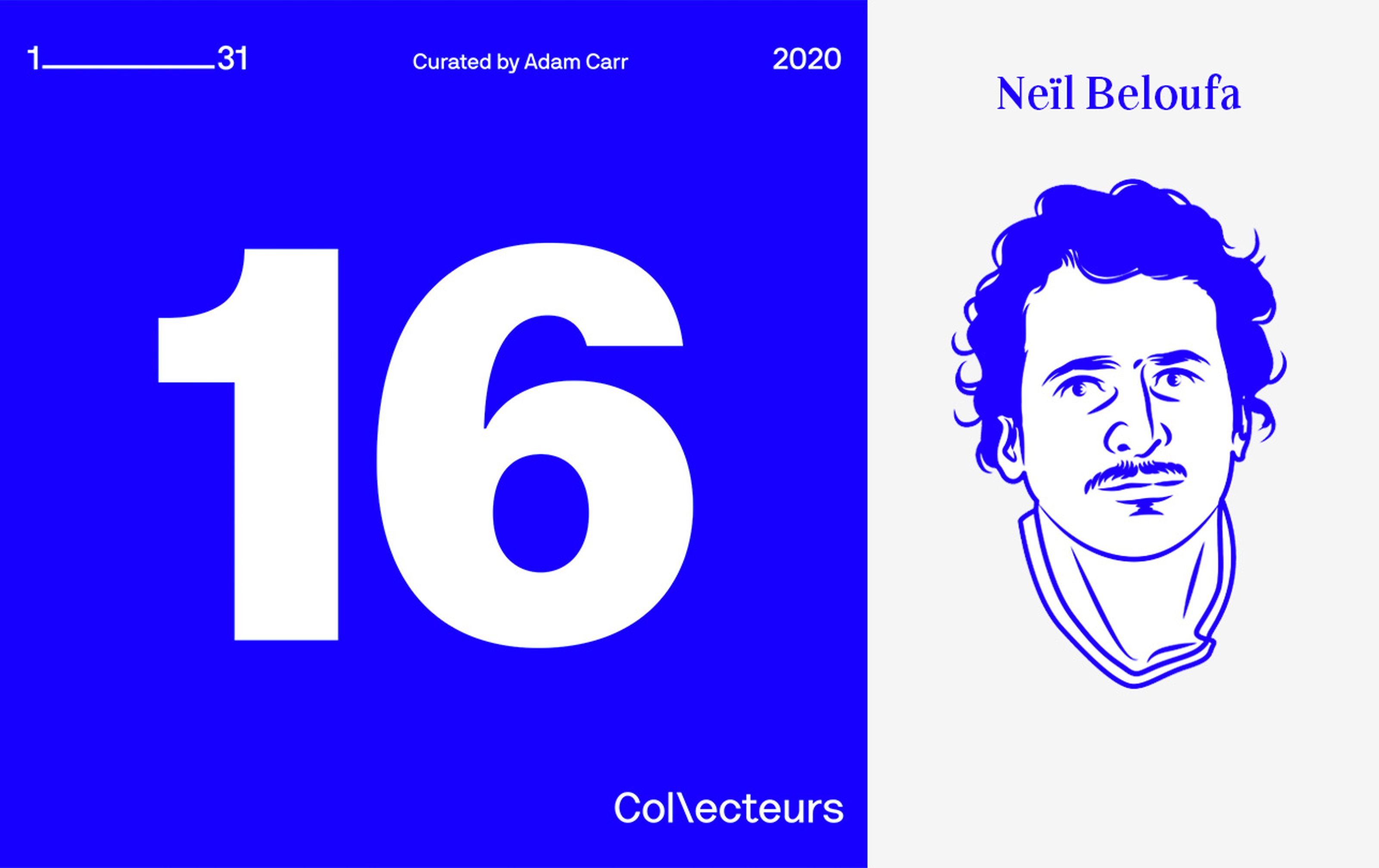

Neïl Beloufa assembles systems in order to destroy them. Through his work in video and installation, Beloufa investigates when fiction bleeds into truth, utilizing the artifice of documentation to reveal the contradictions within authoritarian systems. He finds inspiration in failure; of his own and of structures. In Constellations, 2014, Beloufa assembles a system of discarded cigarette butts, likened to stars in a constellation. It is a bleak, sarcastic interpretation of a constellation, where the fire of the stars has long burned out.
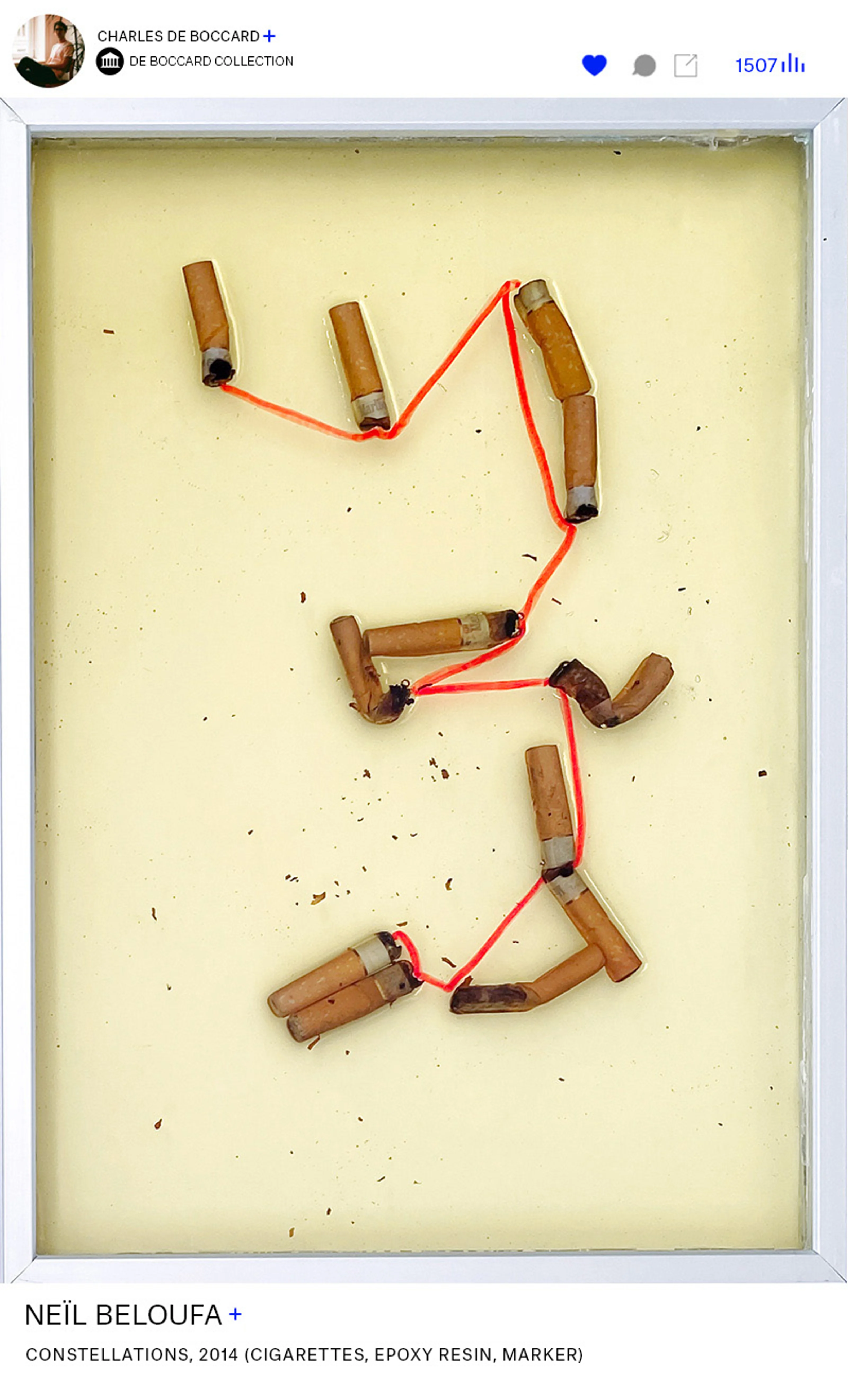


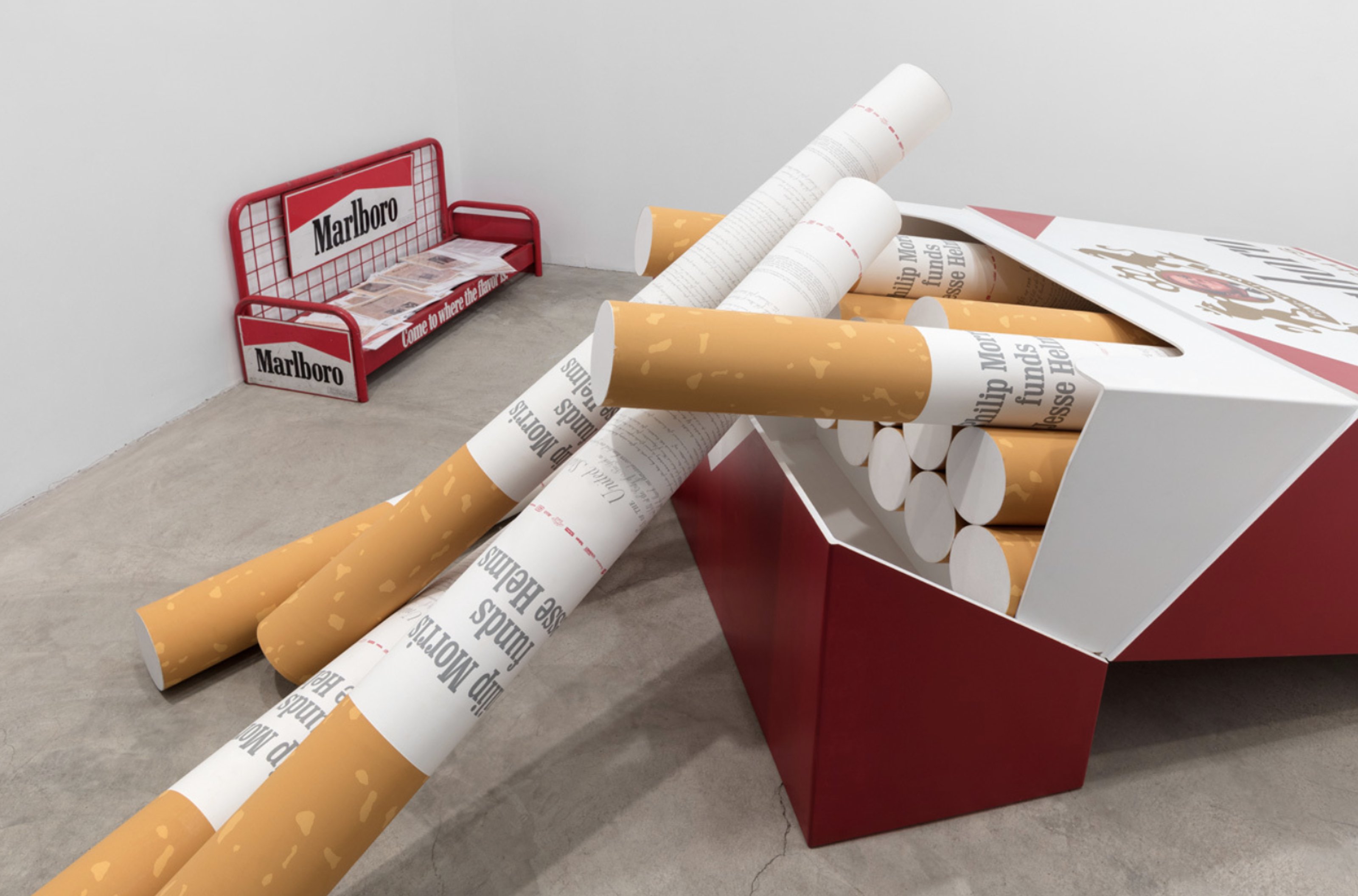
“Philip Morris, the maker of the world’s most popular cigarette, Marlboro, is credited with being an early pioneer in corporate giving. In fact, for four decades, countless arts institutions across New York City had long considered them the most reliable source of corporate funds. However, a handful of artists and health advocacy groups have long taken a more skeptical view of Philip Morris’ donations and what its motives actually were.”

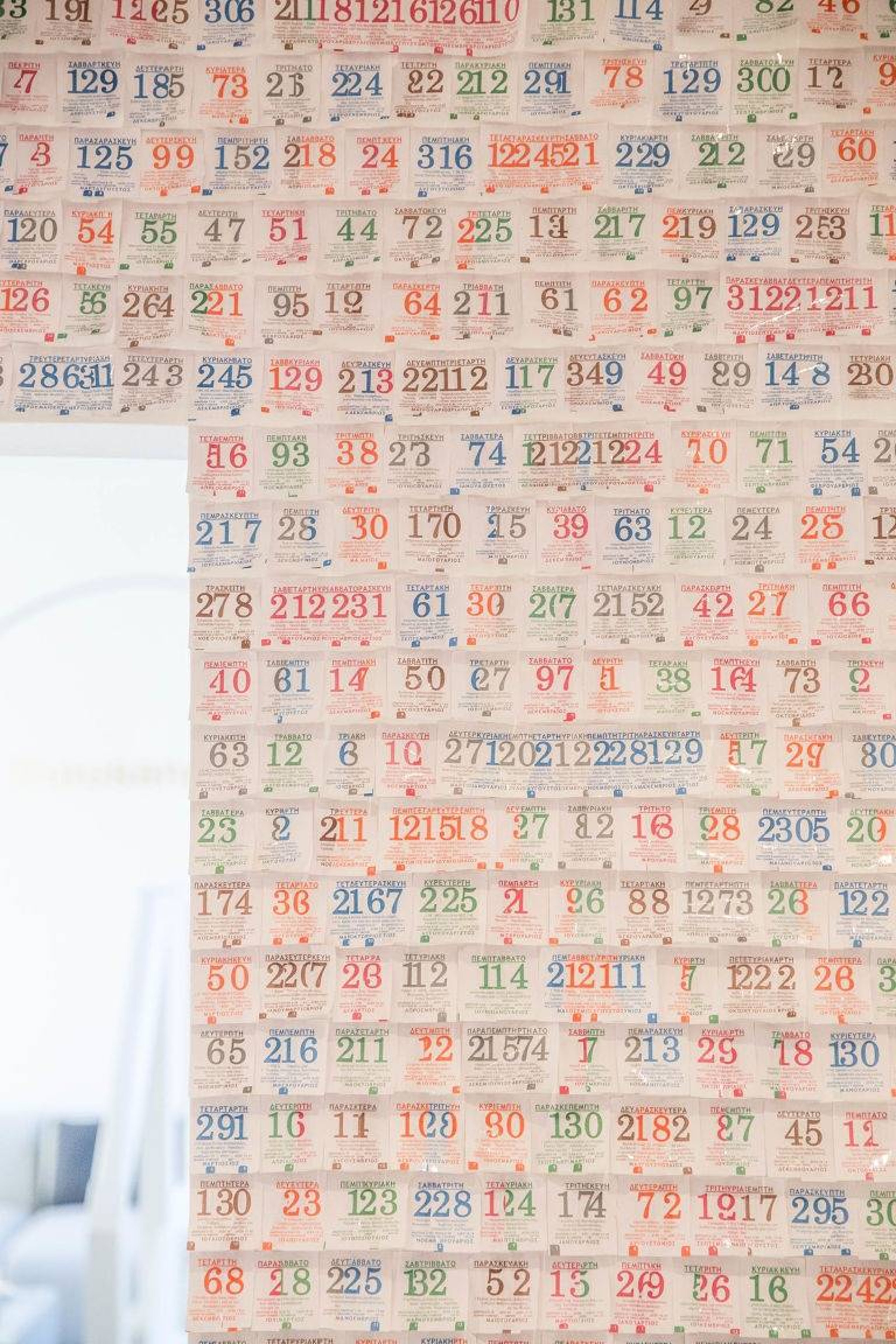


Chrysanthi Koumianaki is an artist based in Athens. Her work examines the value of currencies through symbolic systems, manipulating visual languages. “One Swallow Doesn’t Make a Summer” is an assemblage of 3,500 calendar pages on walls, with pages overlapping to create an appearance of imaginary calendar dates and numbers. Time—in the form of the calendar—is dissected, only to be reconstructed again. The work separates the syllables of a day and a month and reconnects them in a playful way, attempting to reimagine how everyday life would be structured without these limitations. The artist proposes that language has the power to change commonly accepted structures and further suggests that renaming may give them new potential and offer us the ability to reconsider rules, norms, and ultimately, power structures.




image: Chrysanthi Koumianaki – A band called Phaistos or Nestor or Mycenae, 2017. Installation view at Phenomenon 2 organized by Kerenidis Pepe Collection in Anafi
Collectors Iordanis Kerenidis and Piergiorgio Pepe are in conversation with Chrysanthi Koumianaki, whose work they collect, for Collecteurs:
“To stick all these calendars, I was meeting, for some time, a close friend repeatedly in the evenings. She was coming to my place right after work for a couple of hours every day. We were cutting and stitching calendar pages in order to reach an amount of 3,500 new pieces that would cover a wall in an exhibition, but at the same time we were chit-chatting. Thinking about this, I gradually began to ask myself: was it, at the end, a certain task that required an amount of working hours to be completed or was it an opportunity to catch up with my friend? When we discussed this after some time, she also felt that it was a sharing between two people rather than a job that had to be done.”
Courtesy Kerenidis Pepe Collection.

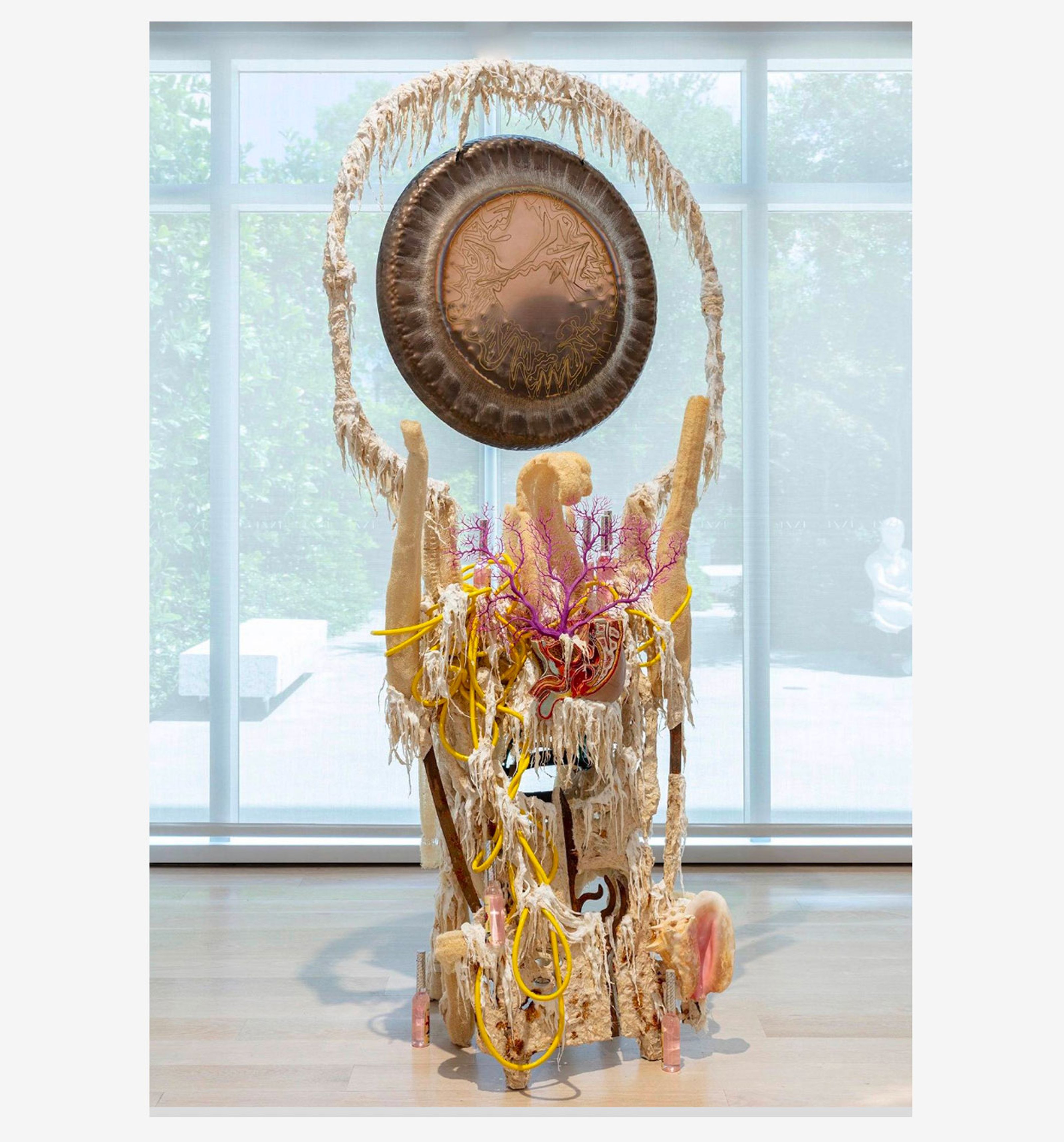


Guadalupe Maravilla is a multidisciplinary artist working with performance, sculpture and videos to invoke healing properties of the arts as a ritualistic practice. His work centers around the anxieties of migration and stress experienced by undocumented immigrants as well as the manifestations of these anxieties on the body. It is all originating from his experience of fleeing El Salvador when he was eight, alone, to escape from the Salvadoran Civil War. His sculptures titled Disease Throwers represent an illness of the body, either on himself or his loved ones, with a purpose to heal these embodiments of trauma.




Collector, Jack Benmeleh’s mother and artist, Guadalupe Maravilla, both had colon cancer; the artist survived the disease but Jack’s mother did not. The work derives from the artist’s struggle to beat the illness and the treatment he went through, including a lengthy period spent in the jungle with healers and shamans.
“I felt extremely connected to the work and thought that it was very poignant. In a way, I picked the work but it also picked me. I wanted to see the work in person to see if we could acquire it because it made me very emotional and I’ve never had this type of an experience with a work before. I didn’t know if I could look at it everyday when it reminded me of my mother so much. ”




Alejandro Cesarco has worked with literature, interpretation, translation, adaptation and memory as central themes for his artworks. For his Footnotes series, he relates “the reader/viewer with the detective, the crime with the text, and the author/artist with the criminal” and asks the viewer to investigate these footnotes removed from context as lost communications between missing parties.
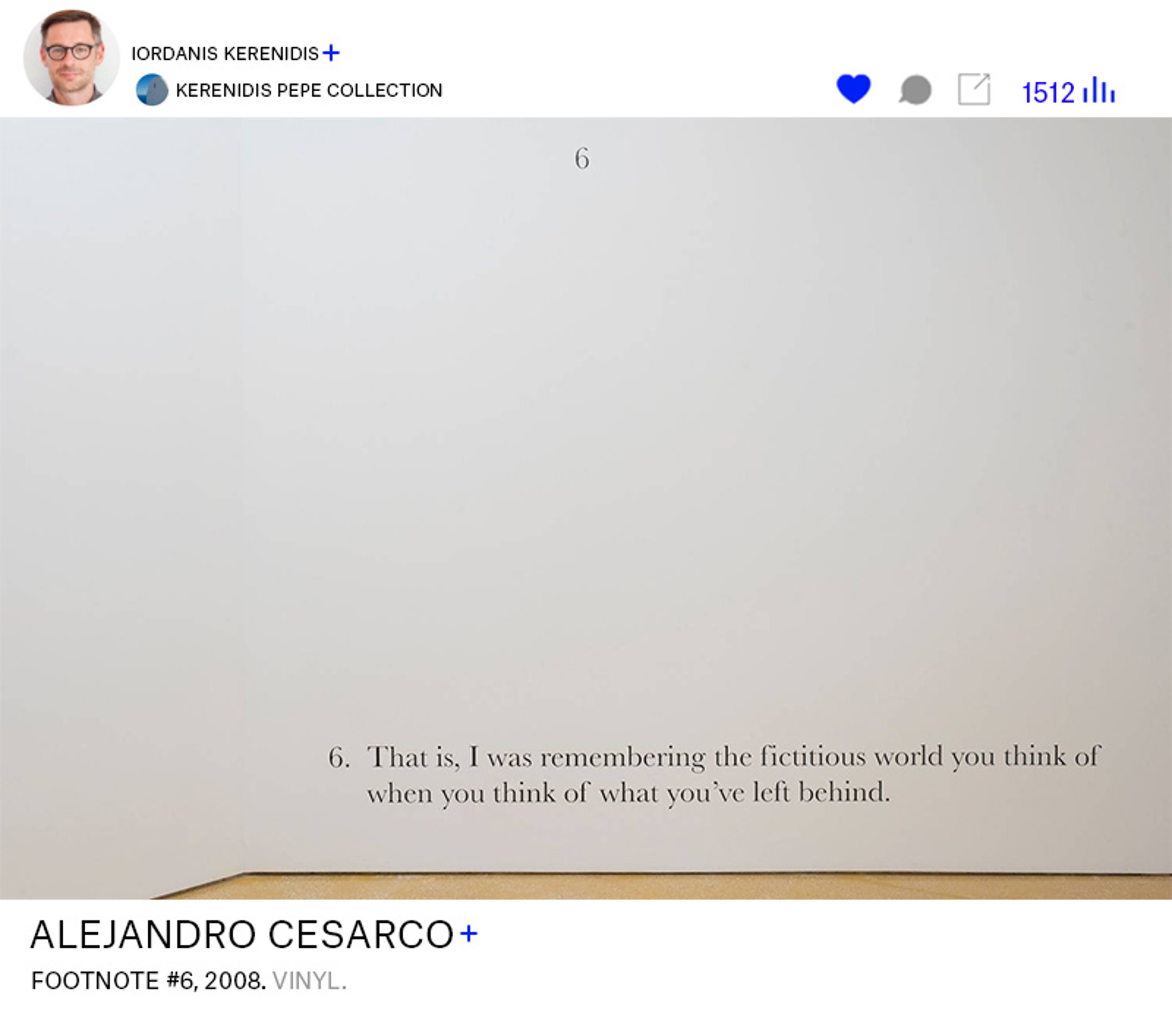


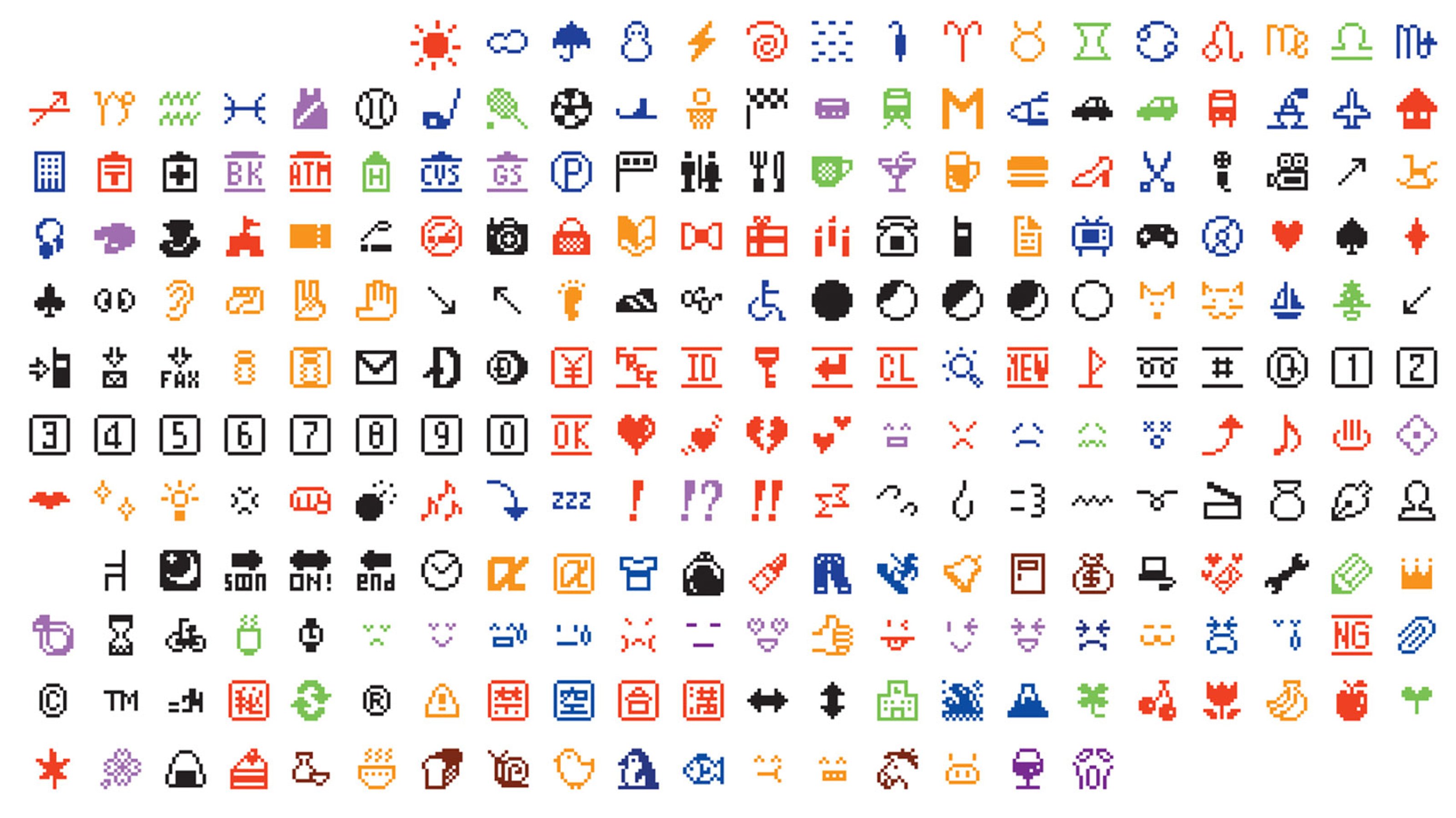
Think Emoji are just a passing trend of the Instagram age? Back in 1881— roughly 100 years before the birth of the emoji as we know it today— emoji’s ancient ancestor, the emoticon, was first published in the American humor magazine, Puck. Made up of punctuation marks and other typographical characters conveying joy, melancholy, indifference, and astonishment, the emoticon was then categorized as ‘typographical art.’ After many quiet decades, it wasn’t until the 1990s that the humble emoticon made its resurgence in chat rooms across the world as an integral part of internet-speak.


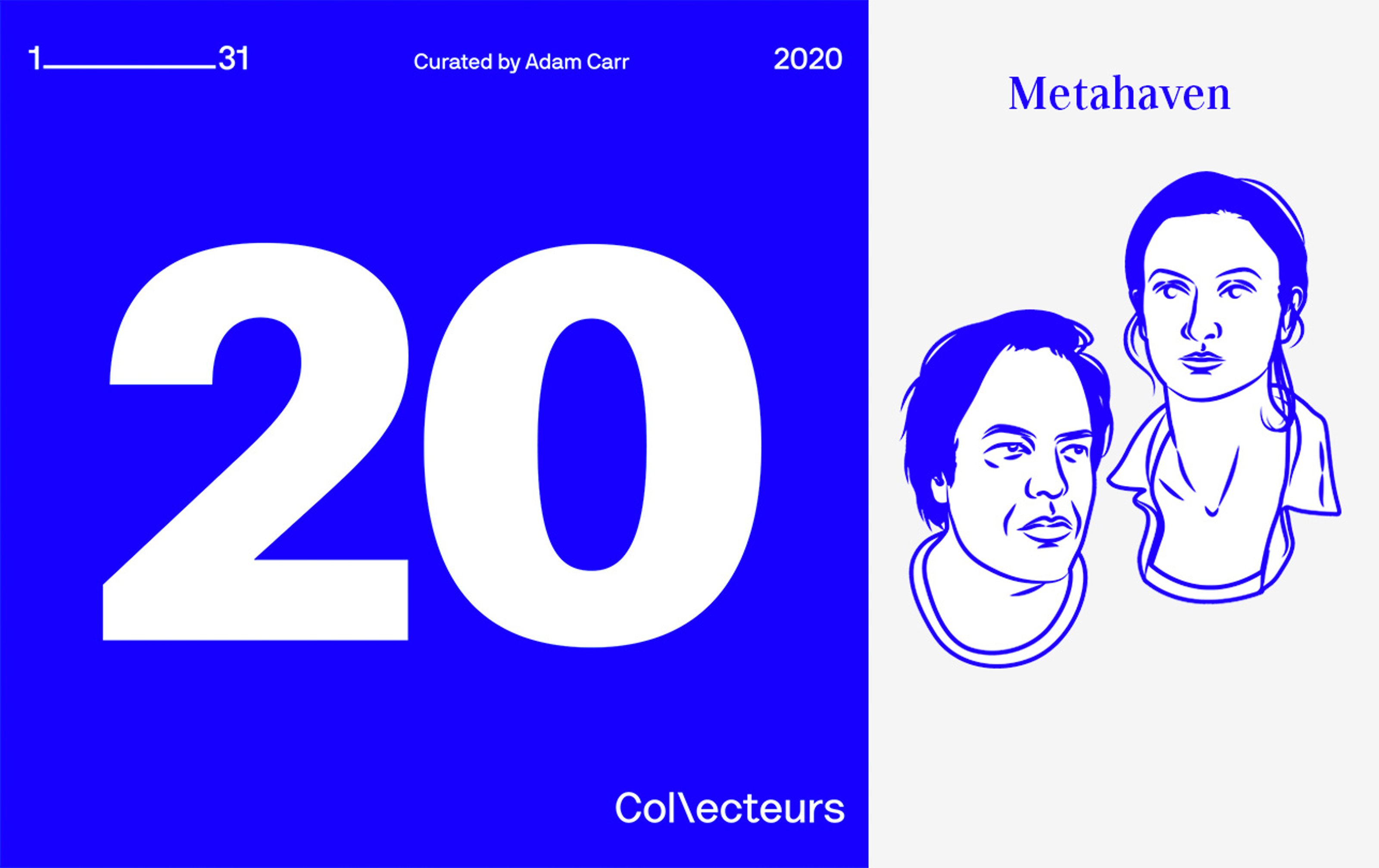

(jacquard weaving)
Metahaven has explored film, textile, texture, narrative, and scale in their more recent work. As in the installation of Eurasia (Questions on Happiness), which premiered at the ICA London in 2018, viewers would sit on a large hand-tufted carpet on a stage and view the film from the platform, with a black-and-white mural as a backdrop. After Eurasia, Metahaven went on to create a series of smaller textile works alongside the exploration of scale: one that would speak to the same concerns as their other works, yet obliquely and intimately. Now You Know You Now displays floating bodies or stones, round and sharp at the same time. The work draws on a graphic language but intentionally lacks contrast; all elements are simultaneously present and fading. Hence it is not a “statement” of sorts. The title is present as a single-line subtitle at the bottom, set in Sword, a typeface designed by Kazuhiro Aihara. Other weavings in this series include Mise-en-anthroposcene, One And The Other, and Skyrofoam.


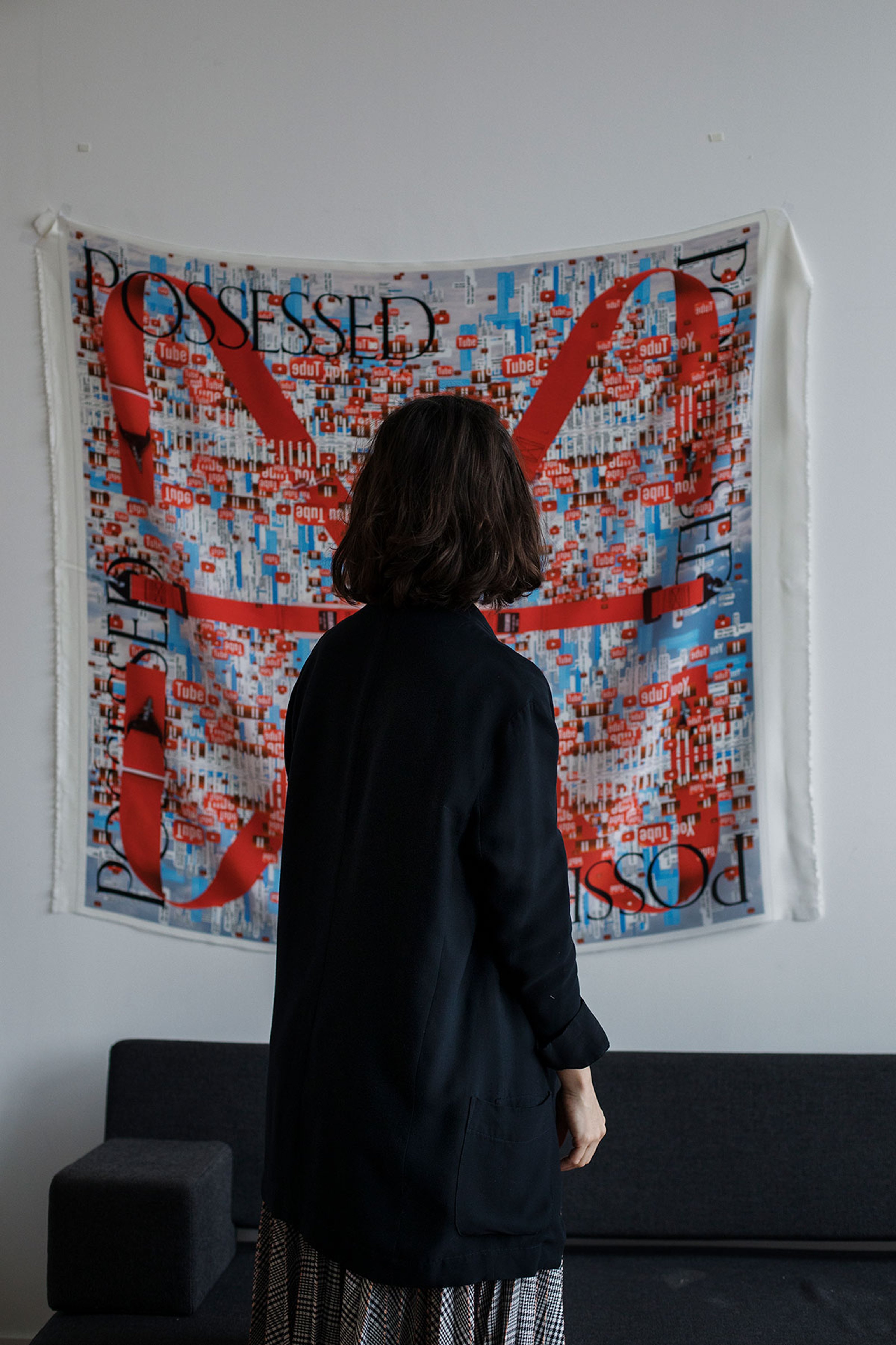
Metahaven: “Art does not, in a material sense, contribute to a solution, and at the same time does not operate independently from these problems, or outside their consequences. What is very interesting about poetry, for example, is the minimalism of its ecological footprint in relation to its ends, the enactment of art with and within the listener. You can collapse artworks into poems and poems then are like a .zip format for art as a whole.”
Artwork: Courtesy private collection, Berlin – P__hoto: Gustavo Murillo Fernández-Valdés
Interview photos: Christoph Mack for Collecteurs

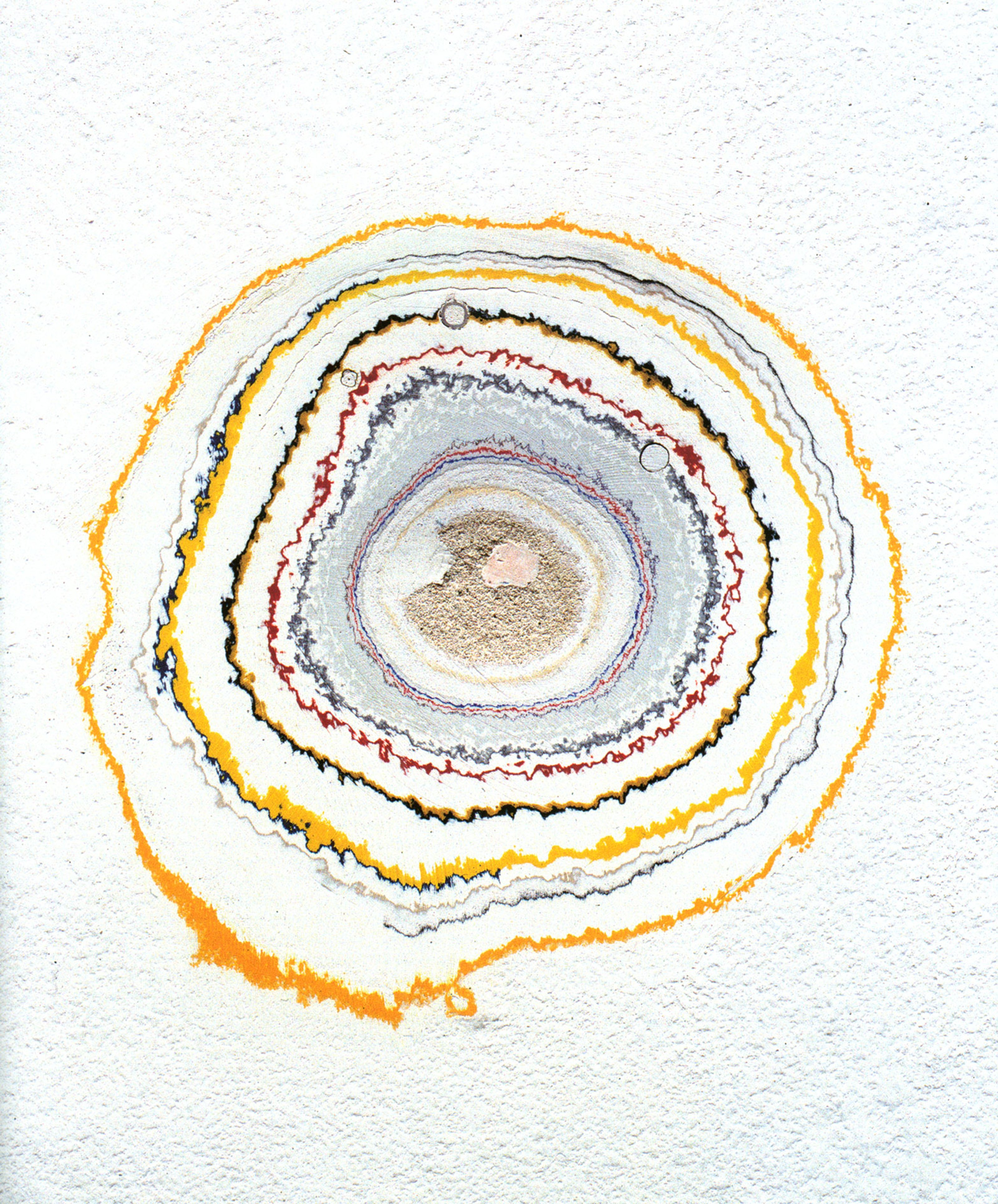
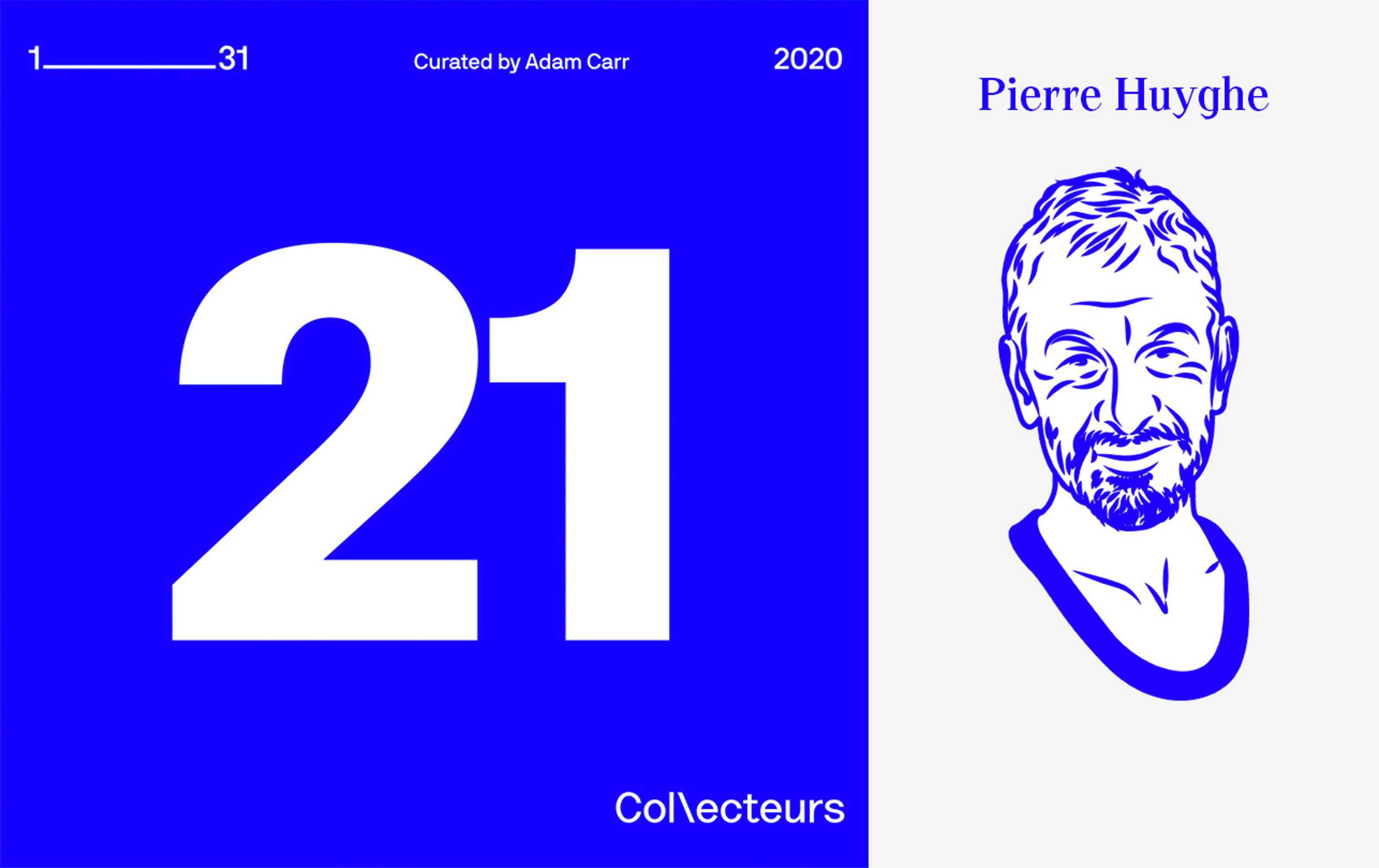

Pierre Huyghe works primarily with film and installation to create scenarios that exist on the line between fantasy and reality. In his Timekeeper series–started in 1999–Huyghe intervenes into a selected gallery space, sanding down the wall to reveal past exhibitions, similar to growth rings in a tree. With this work, Huyghe makes allusions to geographical history while looking into the history of the “white cube,” a space designated to be a blank slate, without a connotation of time.
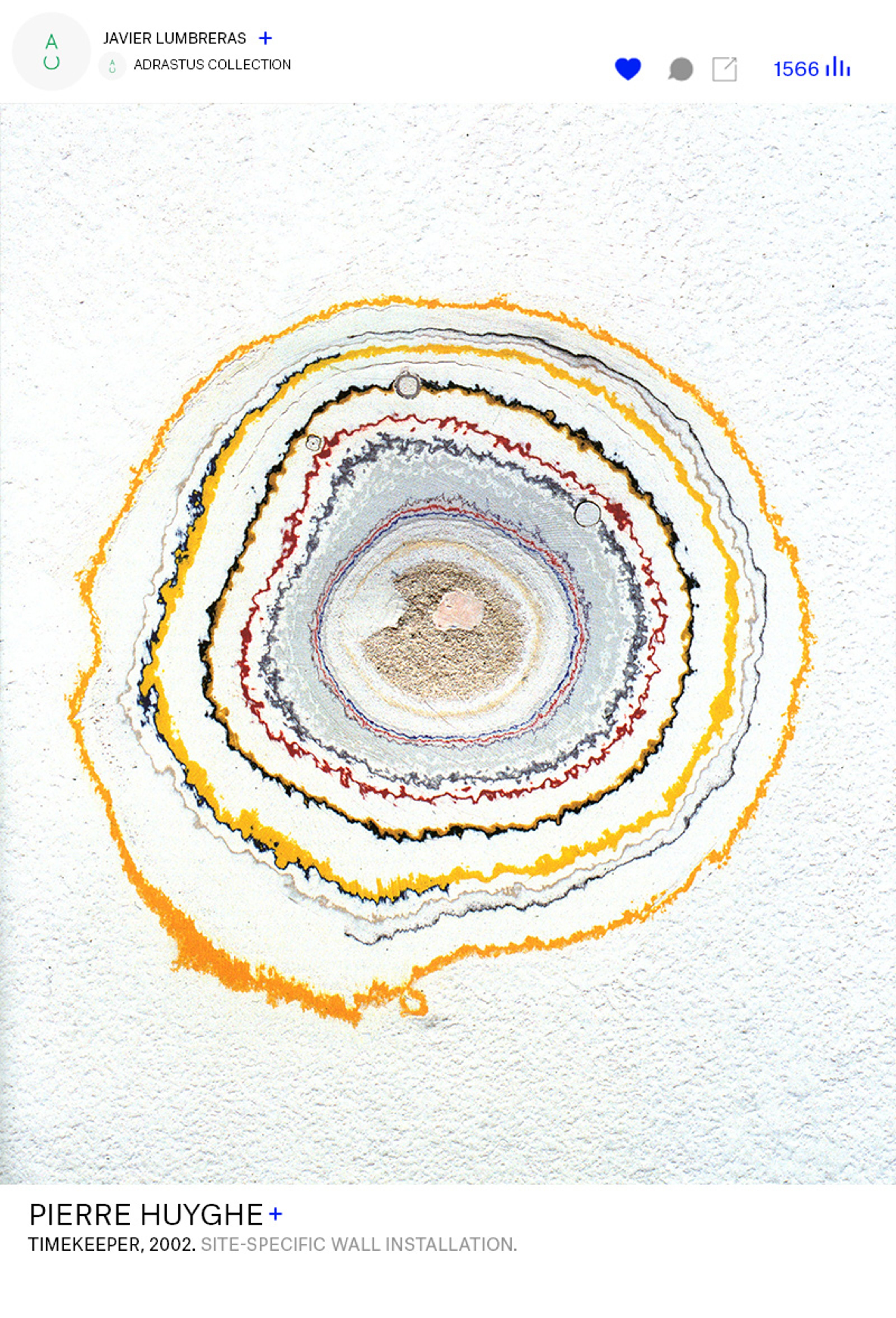


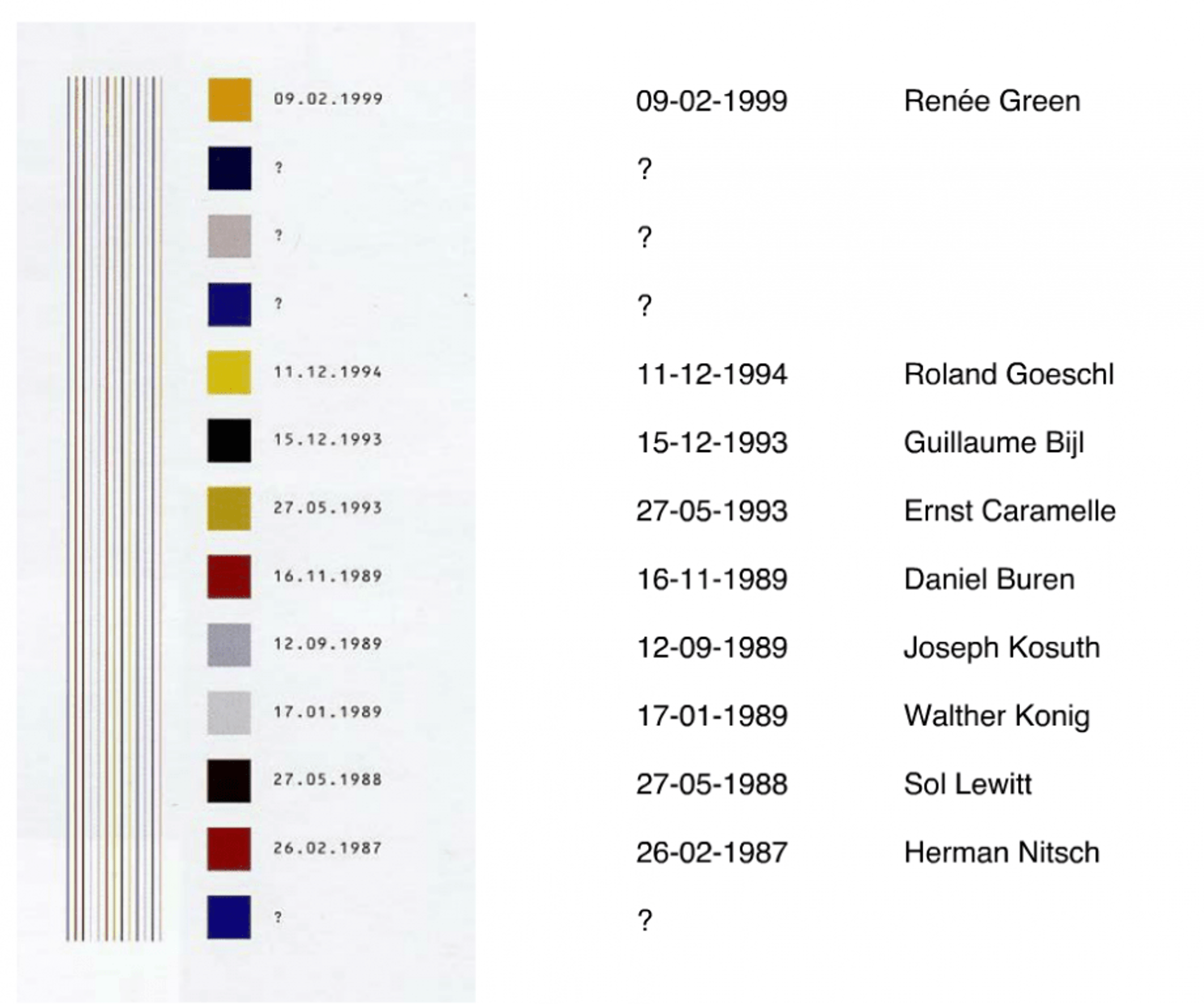
“The white walls of contemporary art galleries are meant to look timeless, but, as Pierre Huyghe’s Timekeeper shows, there is a lot of history just beneath the surface. Huyghe brings that history into view by gently sandpapering the wall, revealing layers of paint underneath.
Like a geological cross-section, the history of the exhibition’s space is revealed by Timekeeper, because it uncovers and shows the successive layers left behind by previous actions, or wall paintings. This work from the Adrastus Collection reveals time and space in a single unit, allowing different artists to coexist as a kind of retrospective.”
Courtesy Marian Goodman Gallery and Adrastus Collection

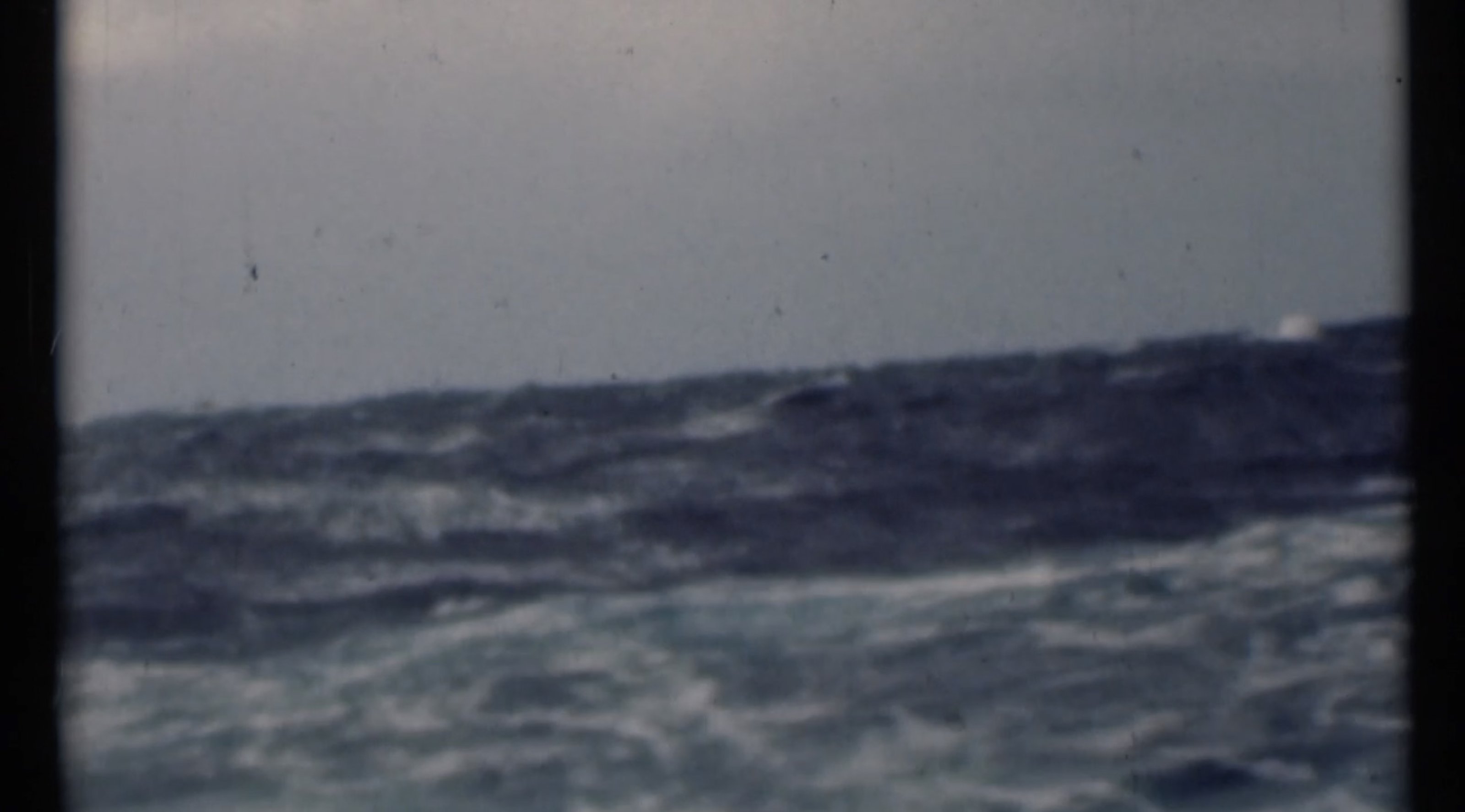
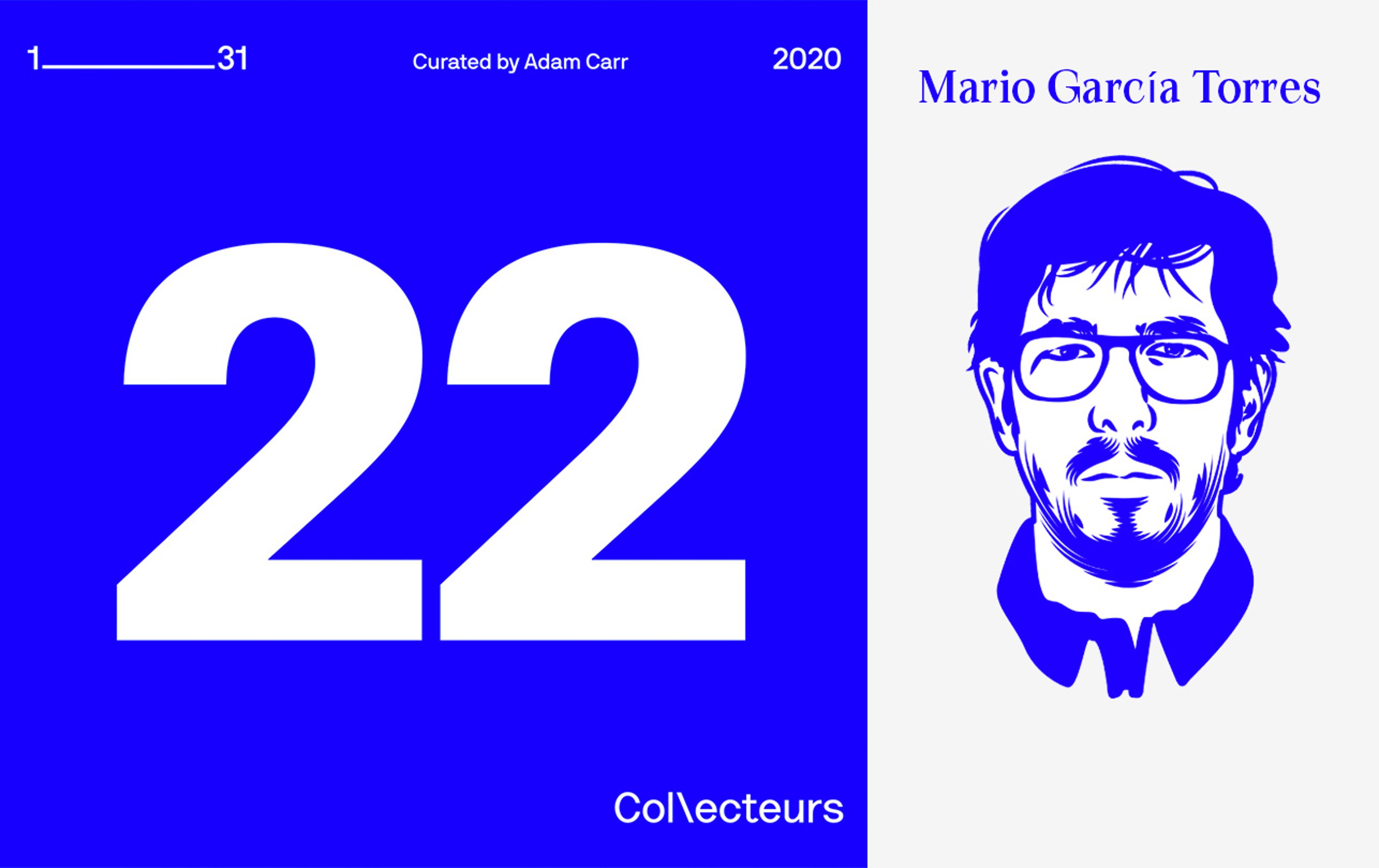

(Video, 11 sec.)
Mario García Torres is interested in time. Most of his works involve intensive research and his approach is detective-like. He treats art history as medium and material, investigating it to unearth half-finished stories and resolve half-truths and unfinished business. It is the moment of artistic creation and everything that underpins it that Torres seeks to suspend as he moves through a variety of disciplines. ‘Tanta Vida, e Um Só Corpo, Muitos Dias e Um Só Olho’ (2013-19) is an 11 second video, but it should be watched at least twice.



“This text is a proposal for a thought-experiment. Its intention is to question the traditions of exhibition-making which, today, seem natural and eternal. The white-cube format developed in the 20th century is still considered the equivalent of a “neutral” space, even after scores of texts and criticism about the falseness of this neutrality. Art likes to posit itself as an area of radical change, a place where tradition can be challenged and advanced – but what of the conventions present within its own structure?”
Courtesy of the artist and Jan Mot, Brussels; joségarcía ,mx, Mexico City/Merida; Taka Ishii, Tokyo; neugerriemschneider, Berlin; Galeria Franco Noero, Turin.
Illustration by Berke Yazicioglu

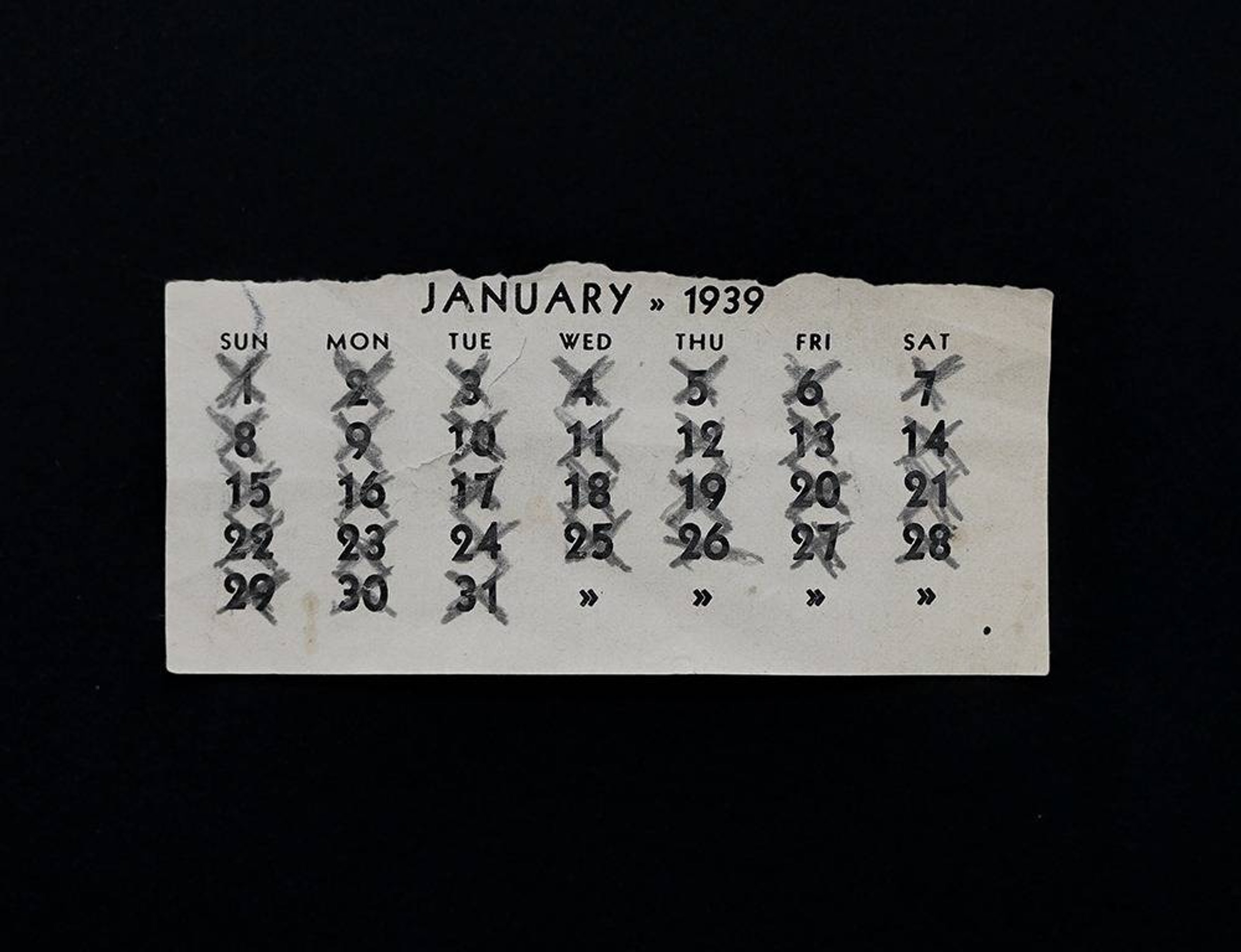
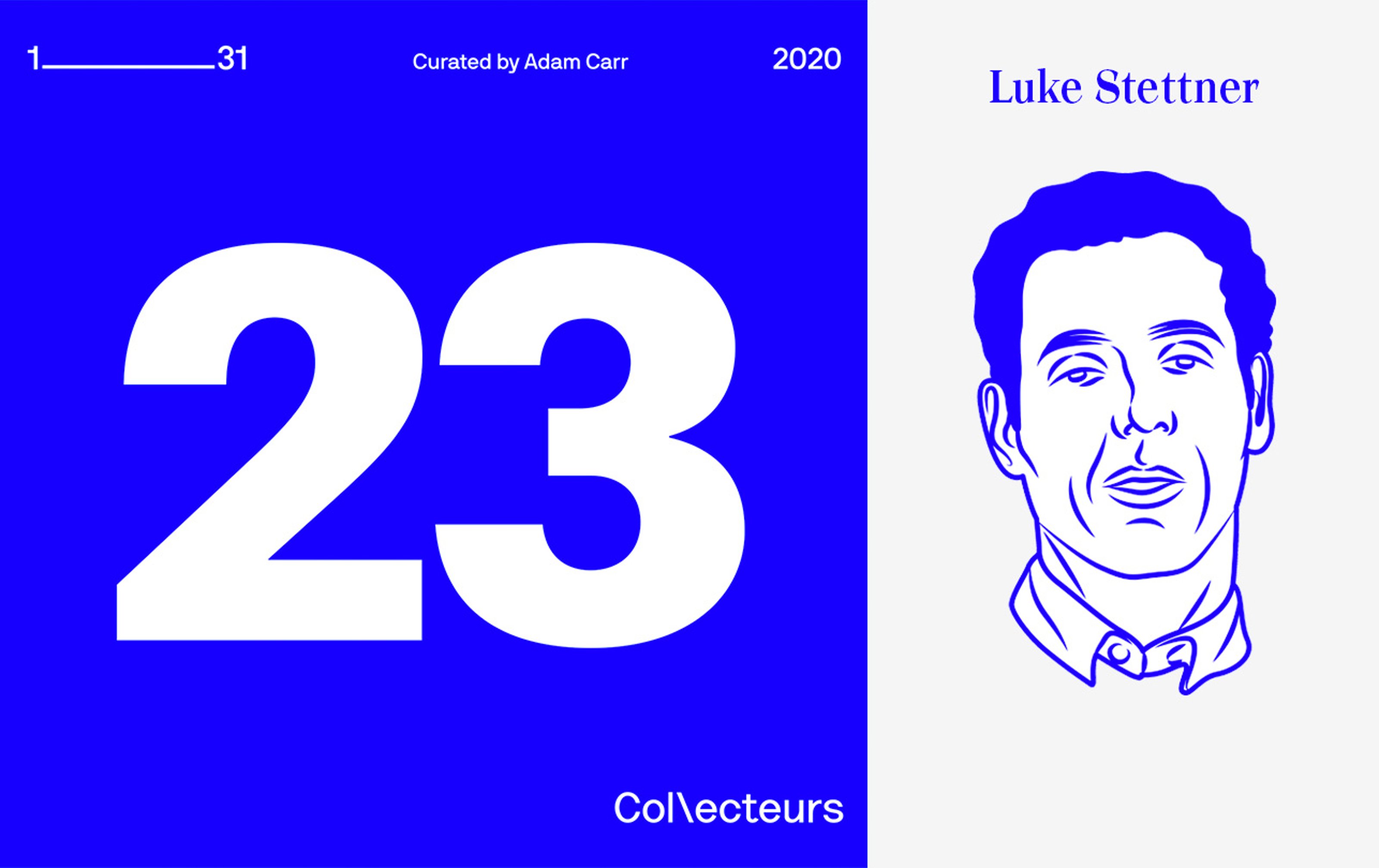

Calendar Page (Lydia Ausstein) was displayed in January 2019 in the exhibition called RI VE RR HY ME SW IT HB LO OD in Kate Werble Gallery which was strongly connected to muteness and linguistic affect. The displayed work Calendar Page was one of the belongings of Stettner’s relatives who escaped from the Nazis_._ Luke describes the disconnection exists not only between continents but right inside of his own history that the members of his family who survived the holocaust never spoke a single word about the massacre of his great grandparents in Auschwitz_._
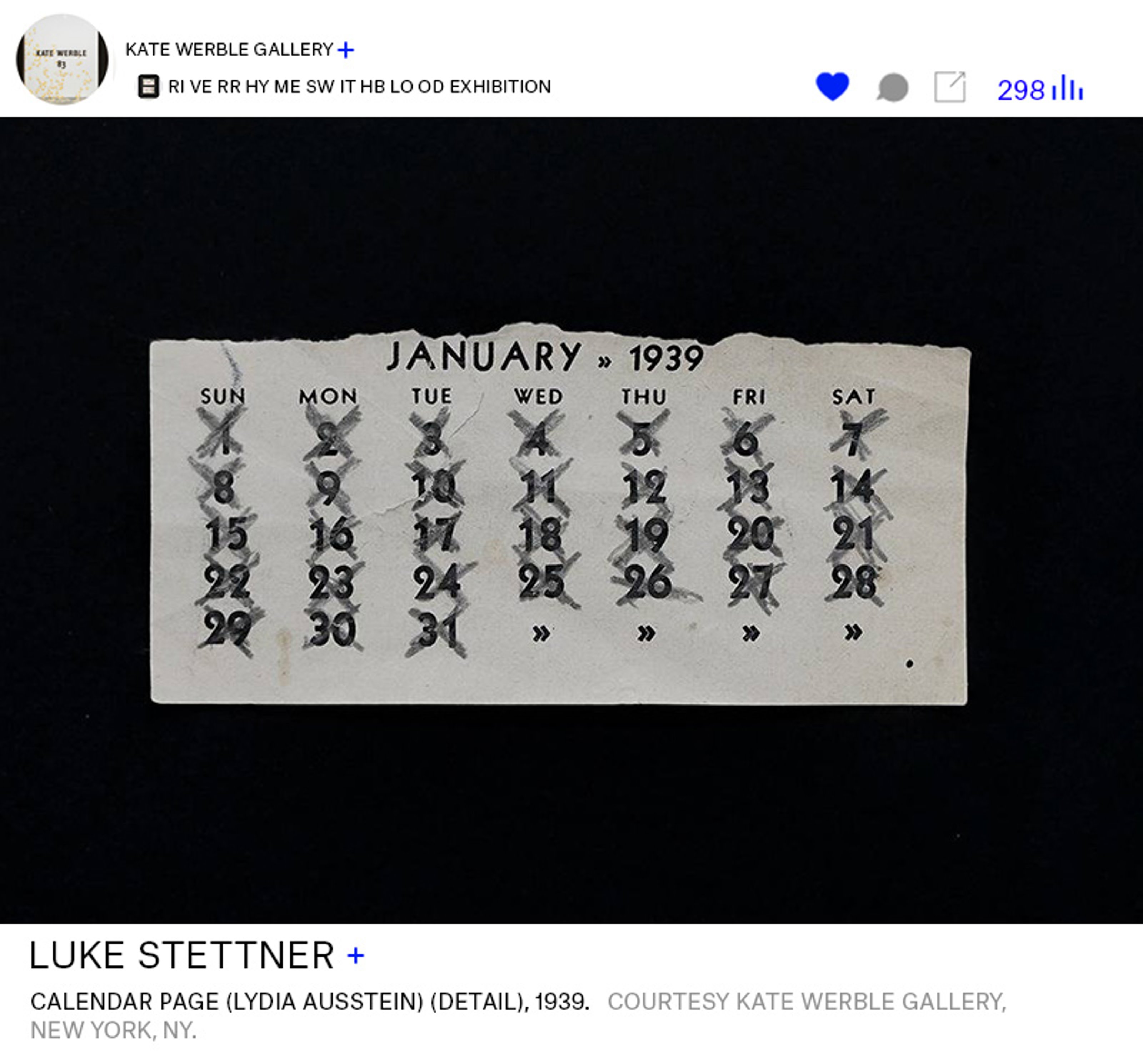


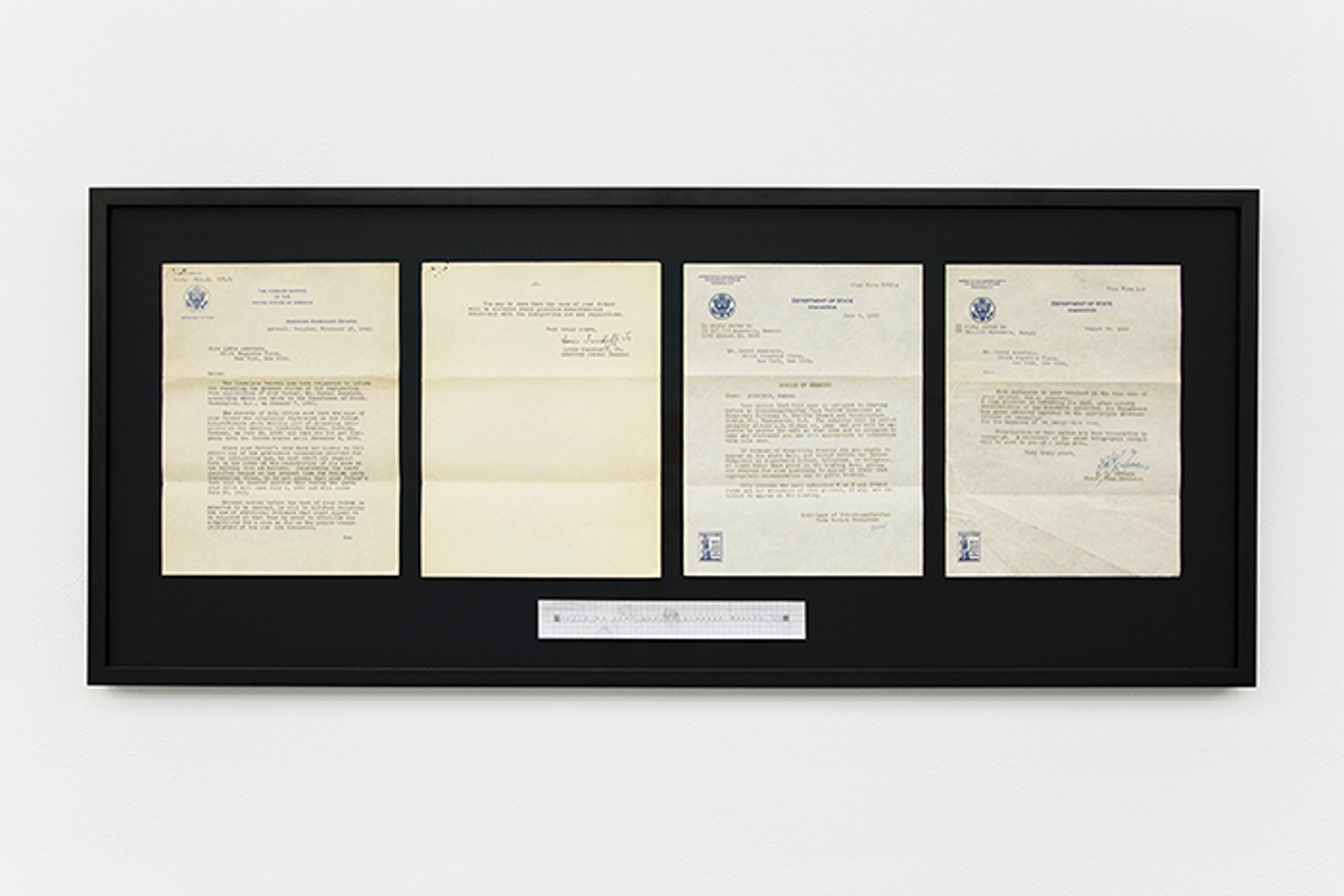
Artwork: Luke Stettner – Immigration Visa Application (Samuel Ausstein), 1940-1942. Courtesy Kate Werble Gallery.
Dates and excerpts taken from correspondence with the Department of State regarding Luke Stettner’s great-grandfather’s Visa status. He was killed at Auschwitz a month after his Visa had been approved.



Behrouz Boochani, born in Ilam, Iran (1983) is an Iranian-Kurdish journalist, human rights defender, poet and film producer. He is currently detained on Manus Island, an island in Papua New Guinea that is used as a de facto prison for asylum-seekers heading to Australia. Boochani is in his seventh year of imprisonment without charge. His memoir, No Friend But the Mountains: Writing from Manus Prison, won the Victorian Prize for Literature and the Victorian Premier’s Prize for Nonfiction in January 2019. The book was tapped out on a mobile phone in a series of single messages over time and translated from Persian to English.
Hoda Afshar’s video work ‘Remain, 2018’ addresses the invisible histories and the human rights of asylum seekers in Australia. Filmed on Manus Island, an immigration detention facility in Papua New Guinea, the work delivers a powerful depiction of the prolonged mistreatment of detainees including Behrouz Boochani.
Hoda Afshar and Behrouz Boochani in conversation.
Courtesy Kate Werble Gallery.

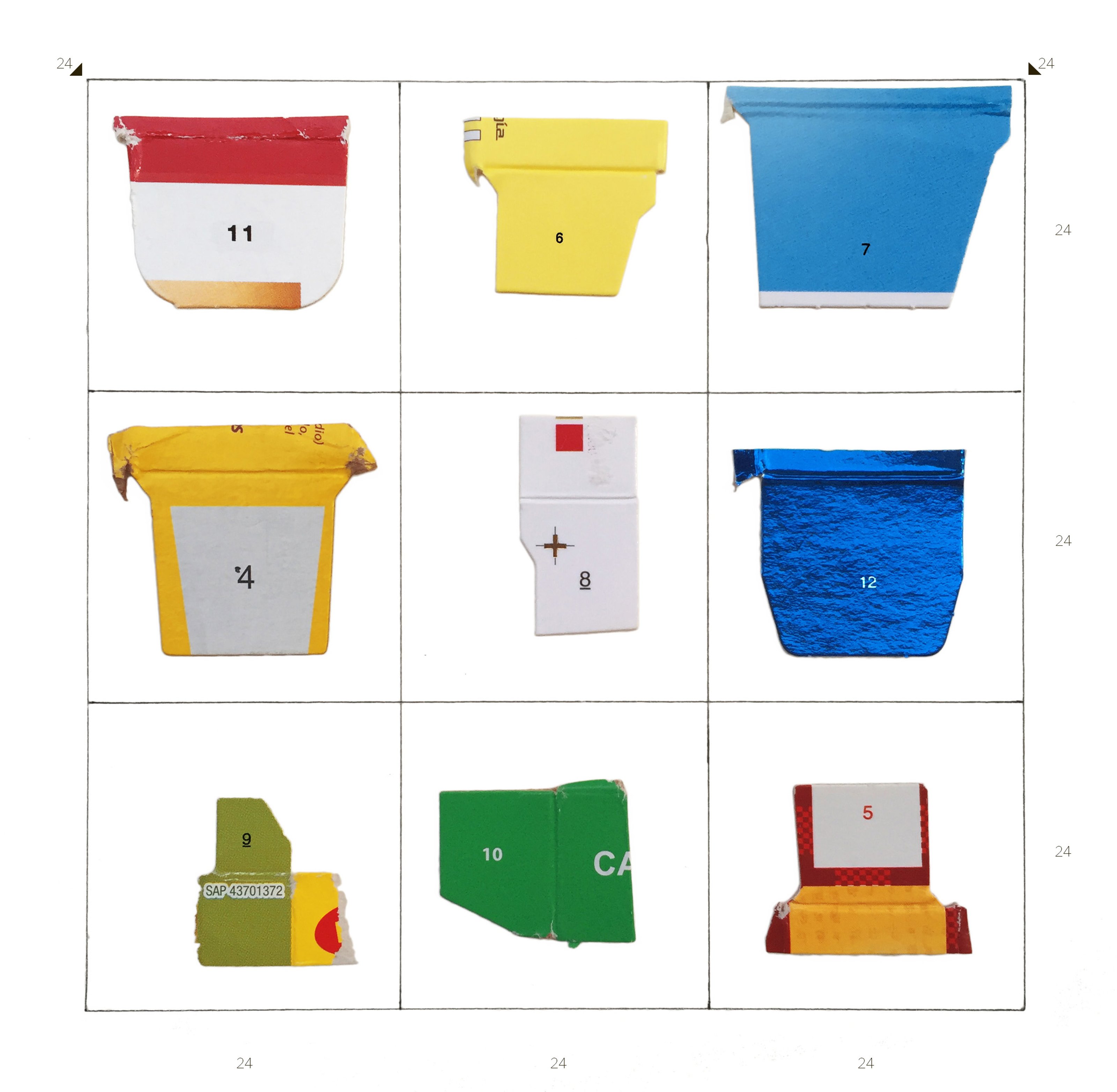
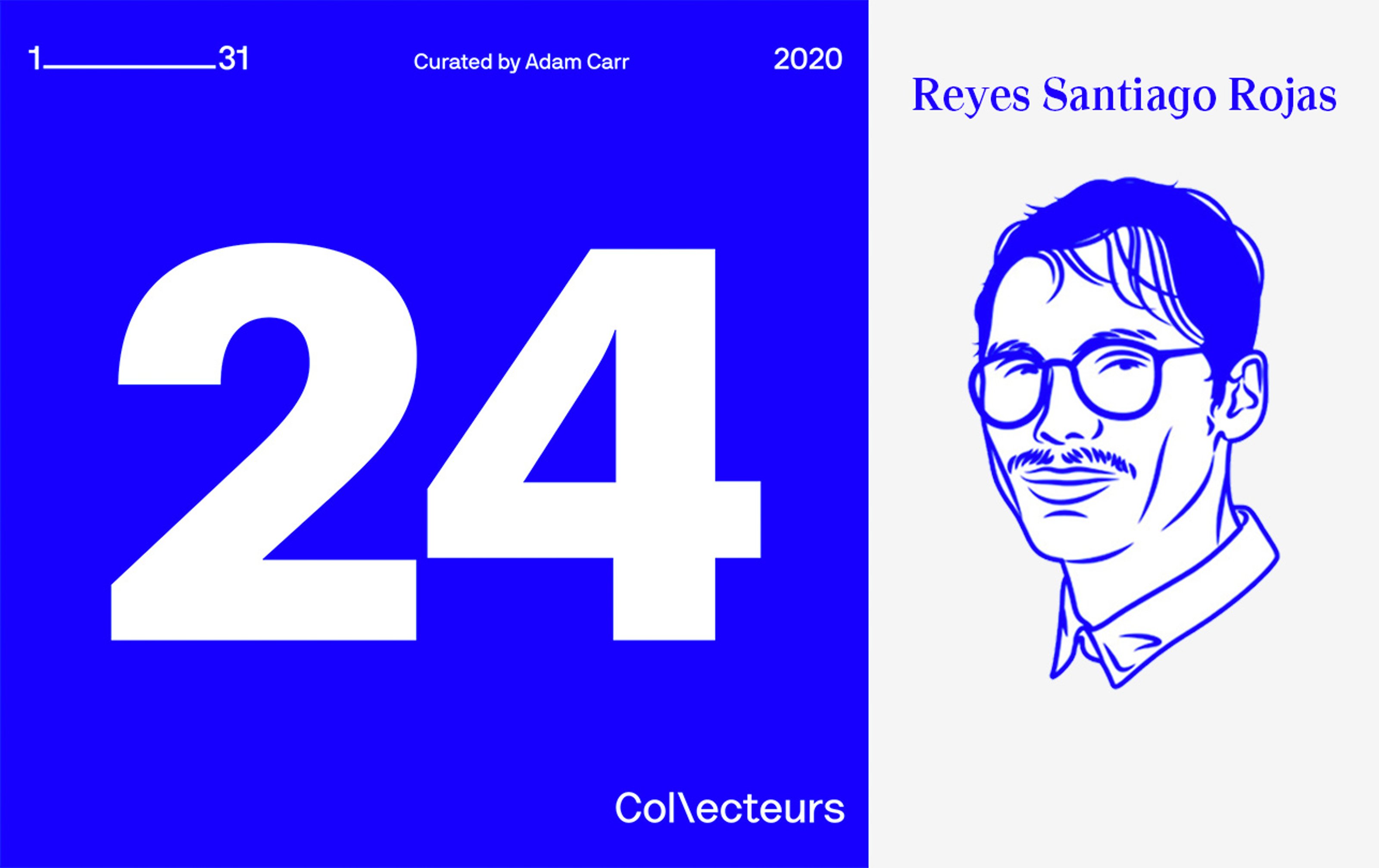

Much of Reyes Santiago Rojas’ work uses sequences of numbers. Using numerical patterns such as the Fibonacci sequence, the Pascal triangle, or the Tesla numbers, he gives order to objects that have been discarded and no longer fit for purpose. Carton boxes and wrappers of derivatives of industrial plants, including tobacco, sugar cane, beer, potatoes and bananas, become reappropriated in a new classification system. Rojas has been interested not only in the new use he gives to these objects, but also in his origins and primary elements, which leads him to a path of re-signification of the collected material, within a social environment. Magic Square 24 Mercury is part of a series of magic squares that refer to different buddhist _Yantra_s. The number 24 makes reference to the planet Mercury.


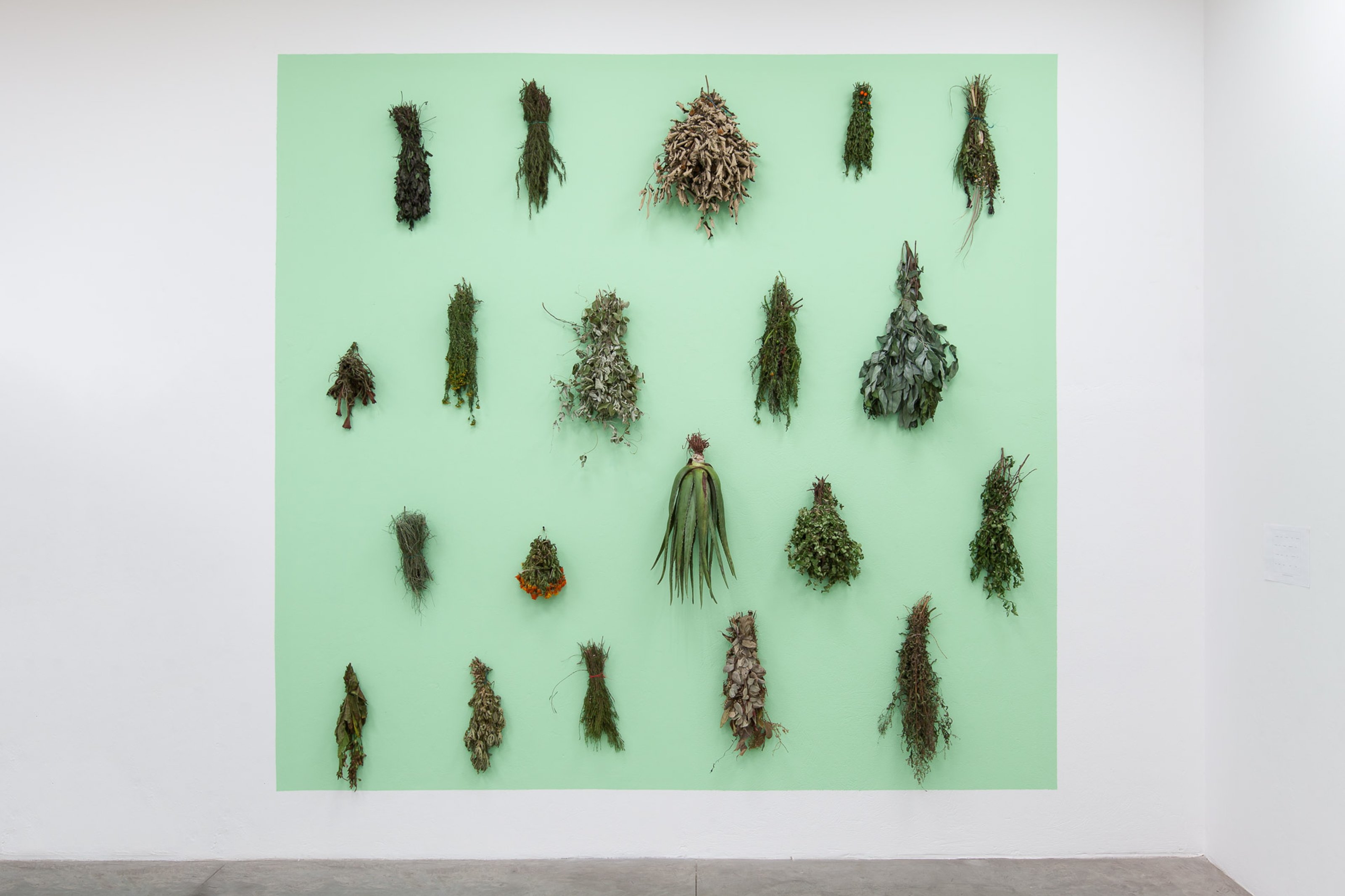
Reyes Santiago Rojas – Plantas Poderosas, 2016
“For millennia us humans have pondered about the fabric of reality, of what the world is really made of. From Aristoteles to Immanuel Kant and many more have thought and argued of what the nature of reality is, with an equal number of different ideas of what might be real, if such a thing exists. But no one in Ancient Greece could have imagined that their thoughts would still be discussed and relevant today, thousands of years later. Not even Euclid, who found the seeds from which the geometrical worlds grew and that has become a layer of what we call reality today.”
Courtesy the artist.

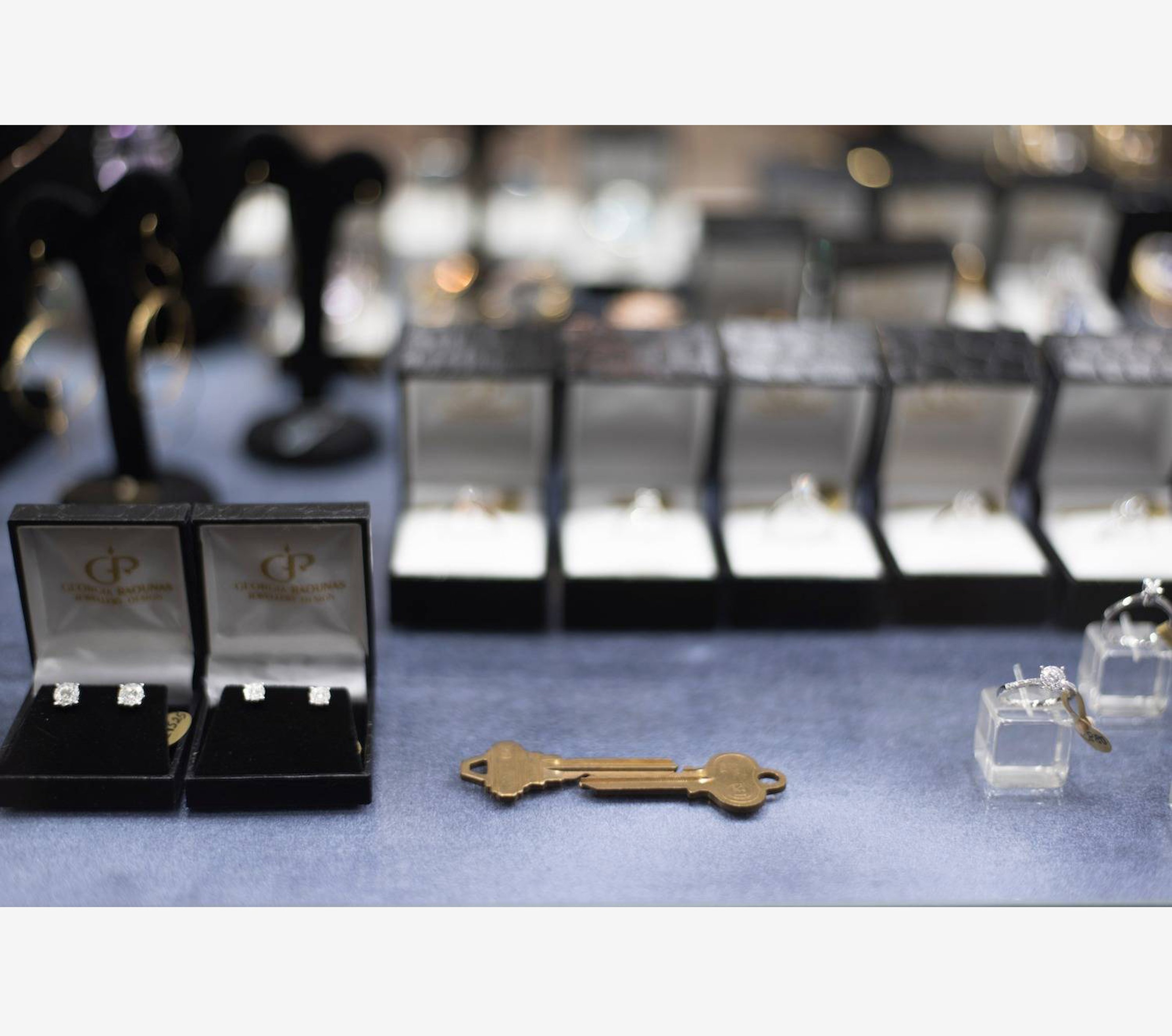
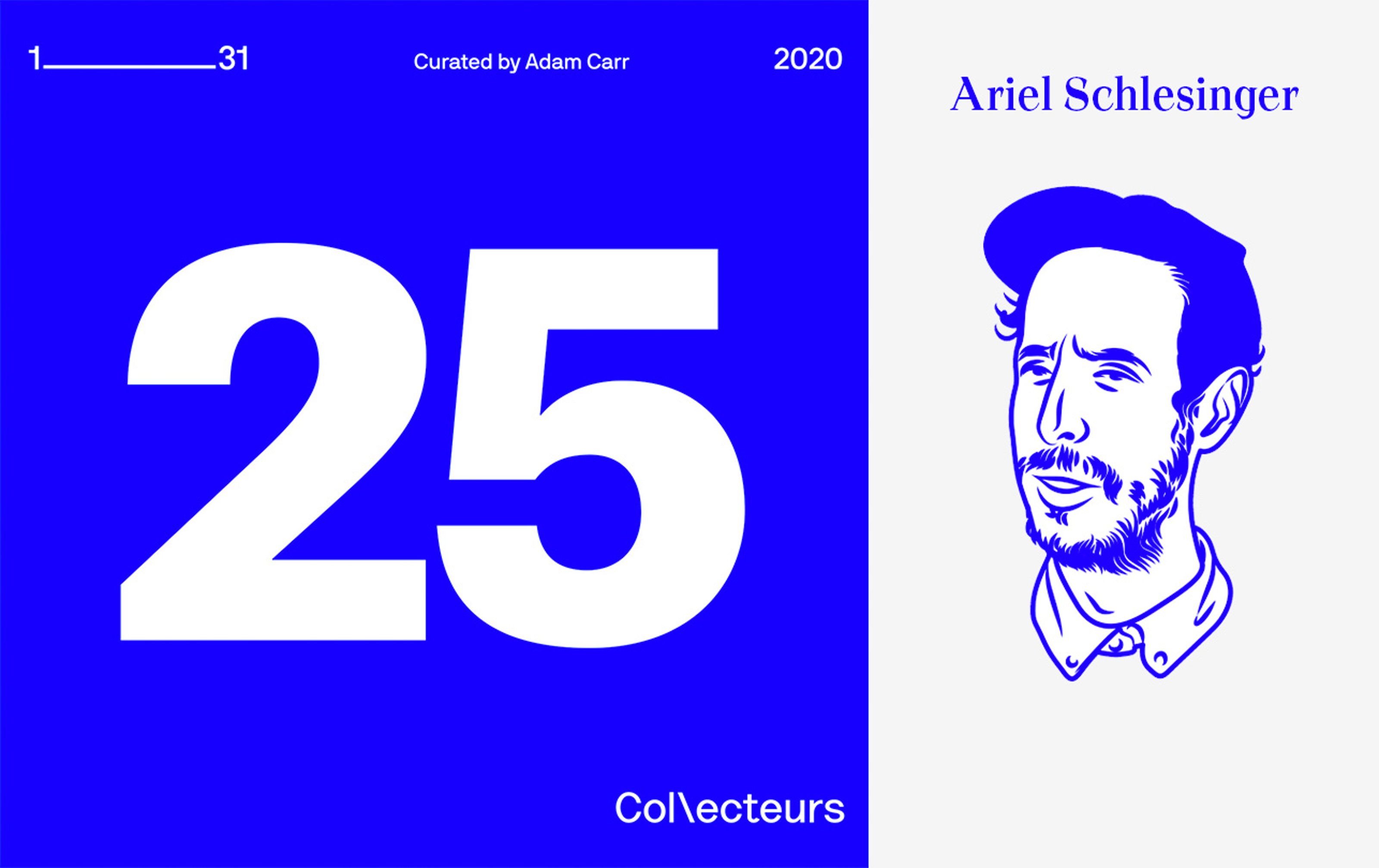

Ariel Schlesinger has a playful attitude to his art practice. He usually dislocates ordinary objects, rearranges and defamiliarizes their essence. In Oct 25th, 1985 the two steel keys, produced in different locations; with their unique traces that are the way of allowance, fit perfectly into each other. A tautology which allows us to enter in a time loop.
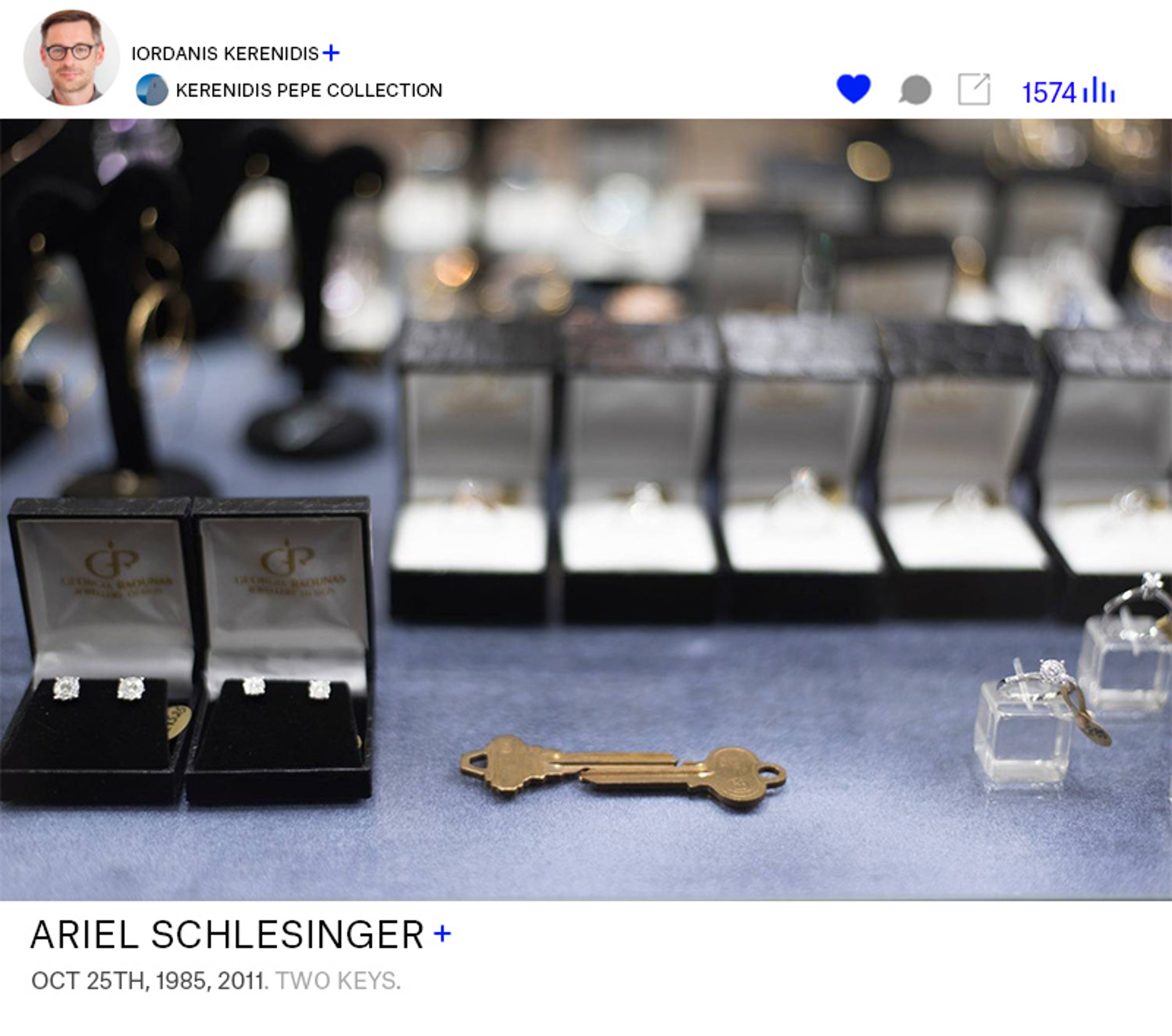


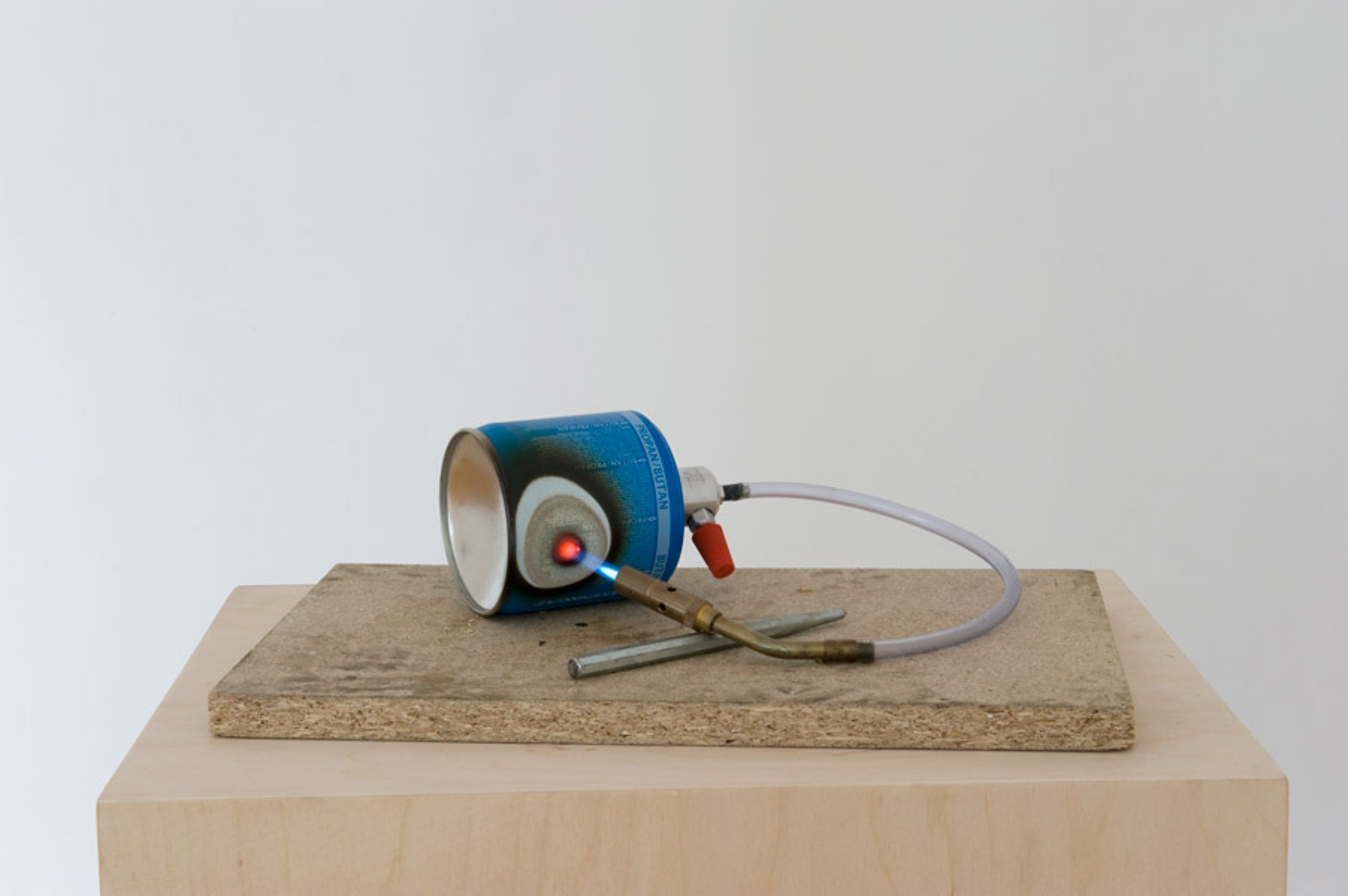
artwork: Ariel Schlesinger – Untitled (Gas Loop) No.1, 2011. Courtesy Galerija Gregor Podnar.
“Ariel Schlesinger: True, a lot of my work holds some sense of danger because I am interested in the tangible and fragile verge of collapse. I am interested in processes of transformation. Sometimes transformation can be sad, violent but also subtle and beautiful. The thing is, every once in a while, I try to break out of some predetermined course of making, as if I need to reinvent my process and try to come up with a completely different approach, only to discover the next step was so connected to the previous one.”


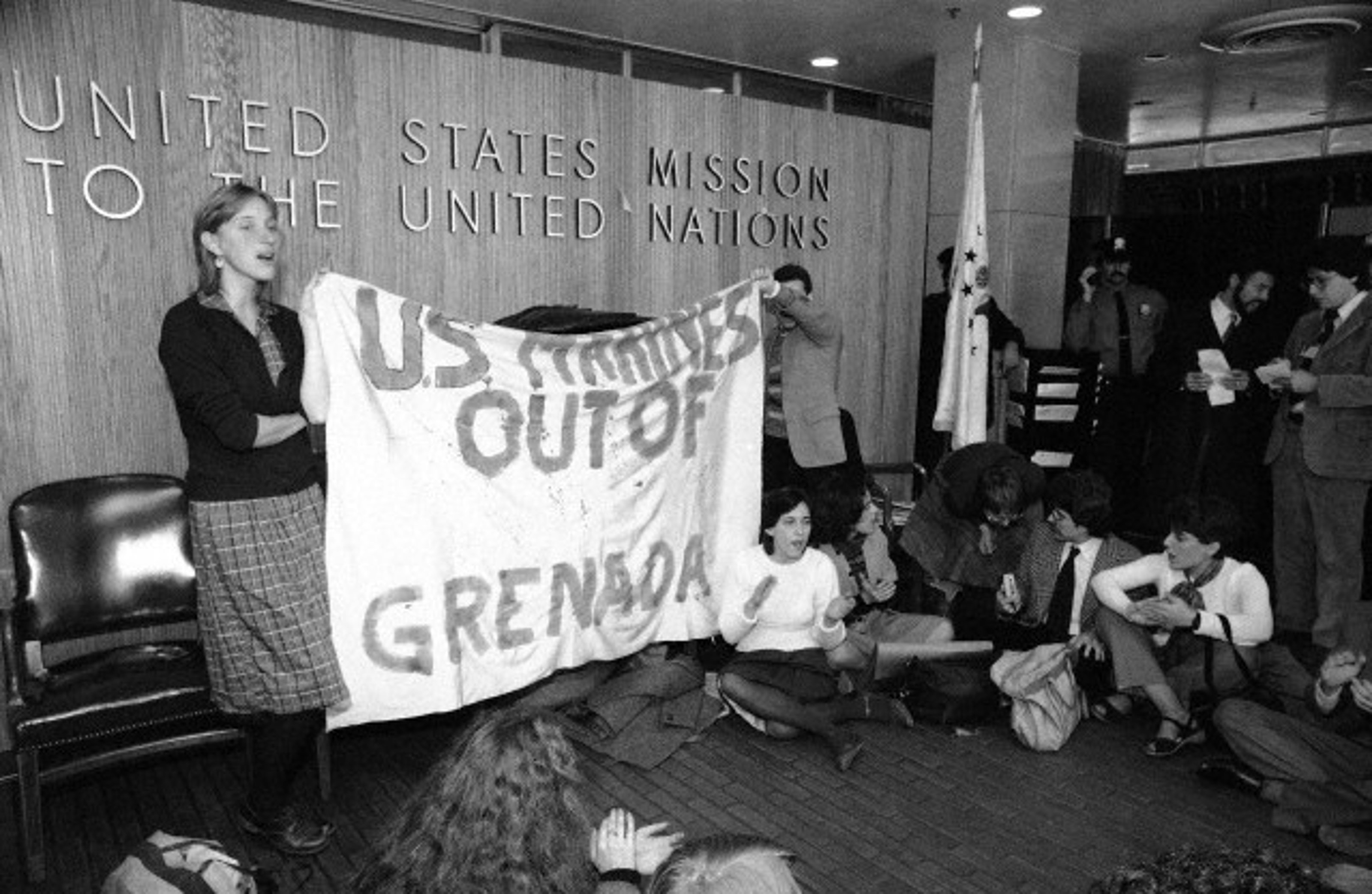
A group of 15 demonstrators staged a sit-in at the lobby of the United States Mission to the United Nations in New York on Thursday, Oct. 27, 1983, opposing the U.S. presence in Grenada. The group, the Committee in Opposition to the U.S. Invasion of Grenada, calls the invasion a criminal and immoral action. After an hour of chants and speeches, all but one of the protestors were arrested and led away from the mission. — Image courtesy David Cantor/AP/Corbis
On the fifth and final installment of Collecteurs’ collaboration with Working Class History, we examine two events occurring in Oct 25th, 1983. This date corresponds to the US invading Grenada–a war started under the guise of protecting citizens, and the Hayes Cottage Hospital Protest in the UK, with the local community and hospital workers coming together to save the hospital from closure.



(plexiglass, loupe, zipper)
David Jablonowski’s sculptural practice puts communication practices in dialogue with sculptural language, pushing the boundaries of each. In , he takes Rich Rosen’s, a software and an early user of Usenet, rules for posting on Usenet’s Netnews forum. Rich Rosen was a prolific figure in Netnews, making up almost 2% of the website’s content on his own (which was infuriating to most of its users); earning him a cult status within the forum. His ironic list of “rules” when interacting with other users online still ring true with our every interaction on the internet today. Here, Jablonowski prints Rosen’s rules on transparent screens, a mimicry of computer screens in physical space, with added loops, a magnifier and a zipper to allude even further to early internet user interfaces.



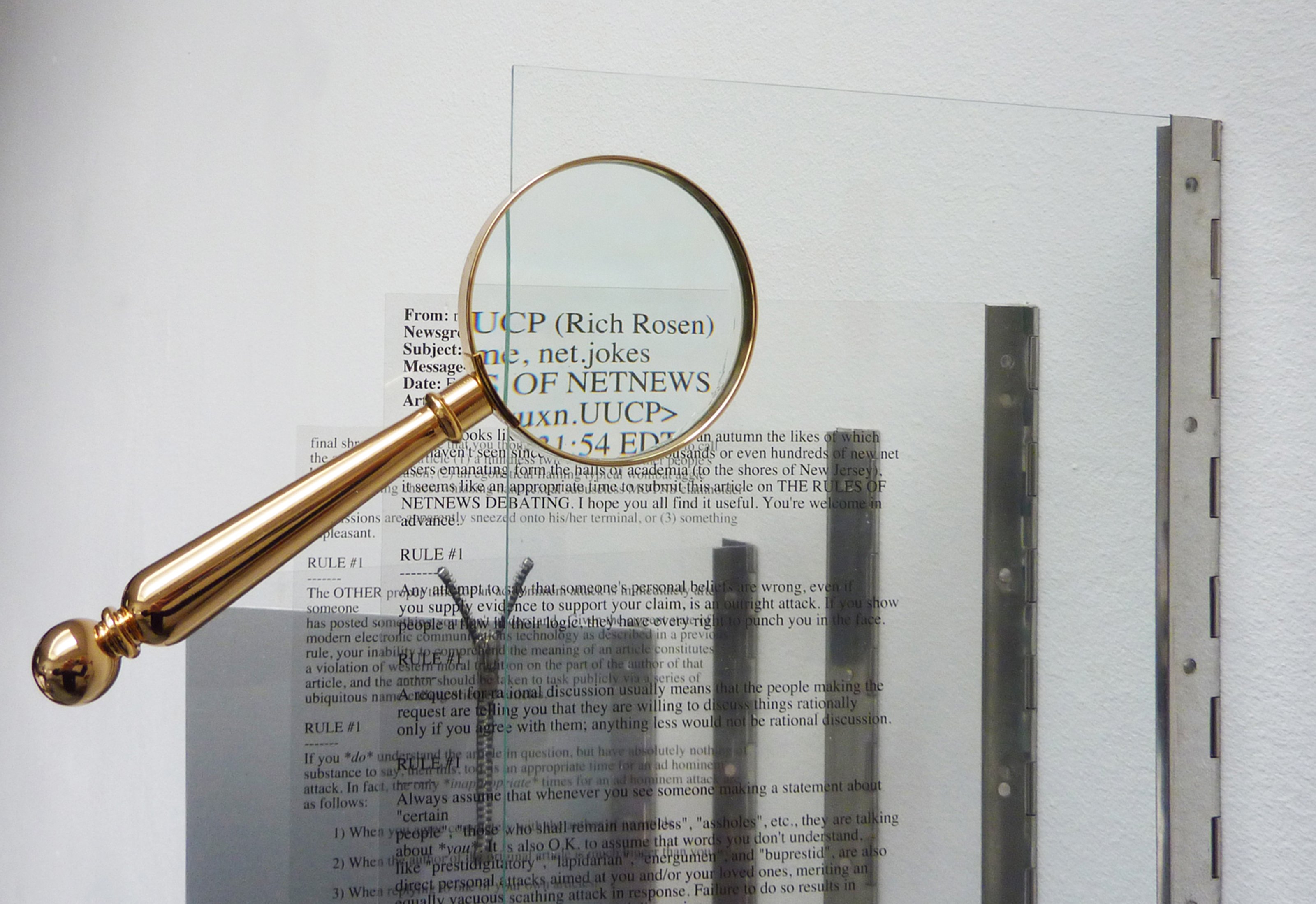
“Rosen was a prolific participant in Usenet, website statistics showed that he had produced 2% of the entire volume of the postings on the website on his own, which led to conspiracy theories on how he might not be an actual person but an AI programmed by Bell Labs to increase web traffic on their Usenet forums. Parodies followed this incessant probing into the Rich Rosen phenomena; one user wrote a joke article claiming they had contacted the real Rich Rosen and it was in fact 138 different authors hired by “Nestor Enterprises” a covert organization with ties to the CIA and MTV, to name a few…”



“On December 22, 2011 in Athens, the workers at Eleftherotypia, Greece’s second-biggest daily paper, walked out on an indefinite strike in protest against not having been paid since August.
After several weeks, the 870 men and women working at the firm, including cleaners, journalists, print workers and more, decided collectively to launch their own, self-managed newspaper, The Workers of Eleftherotypia. ”
Courtesy Hans van Luijk and Art21 Foundation.

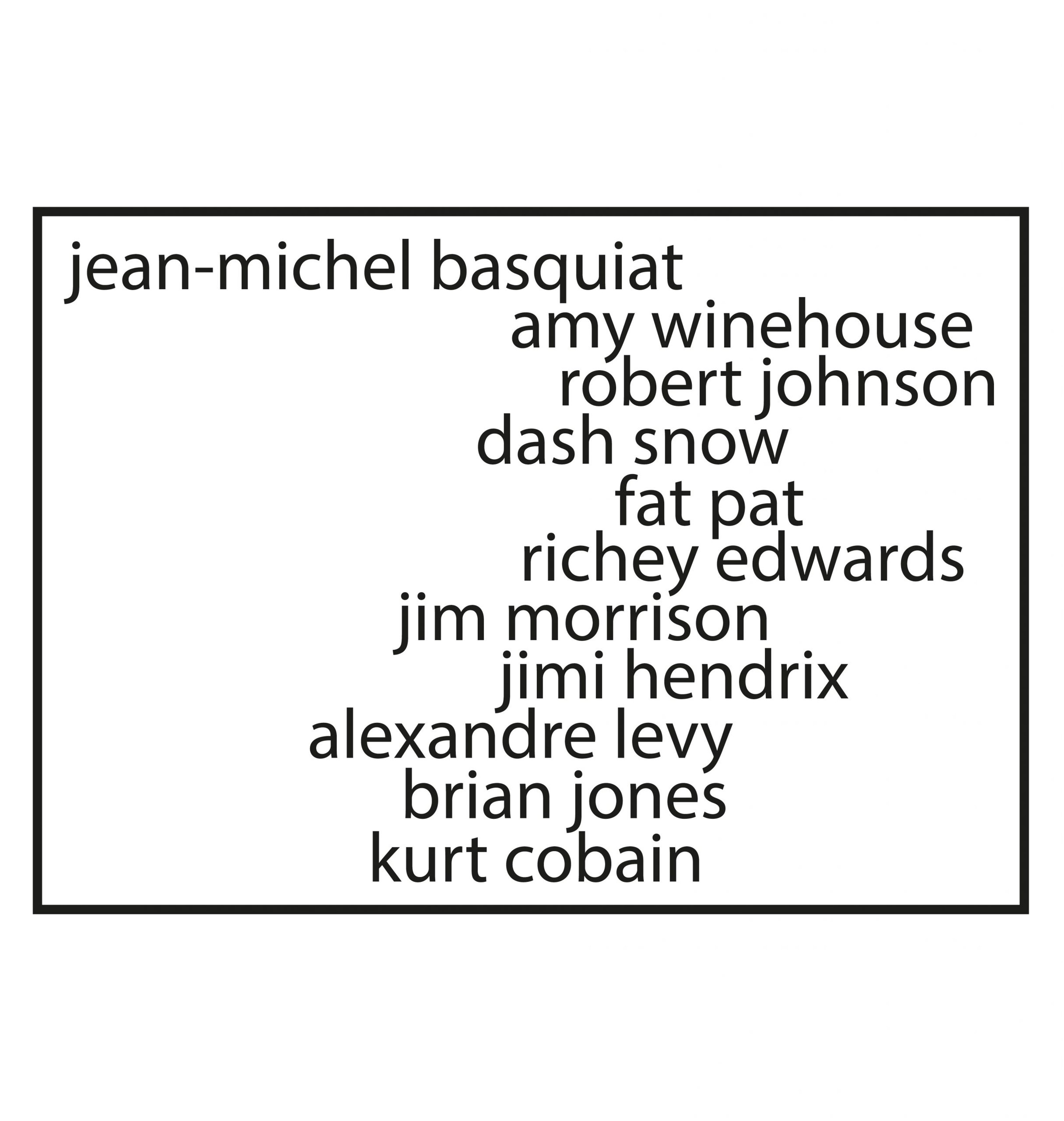
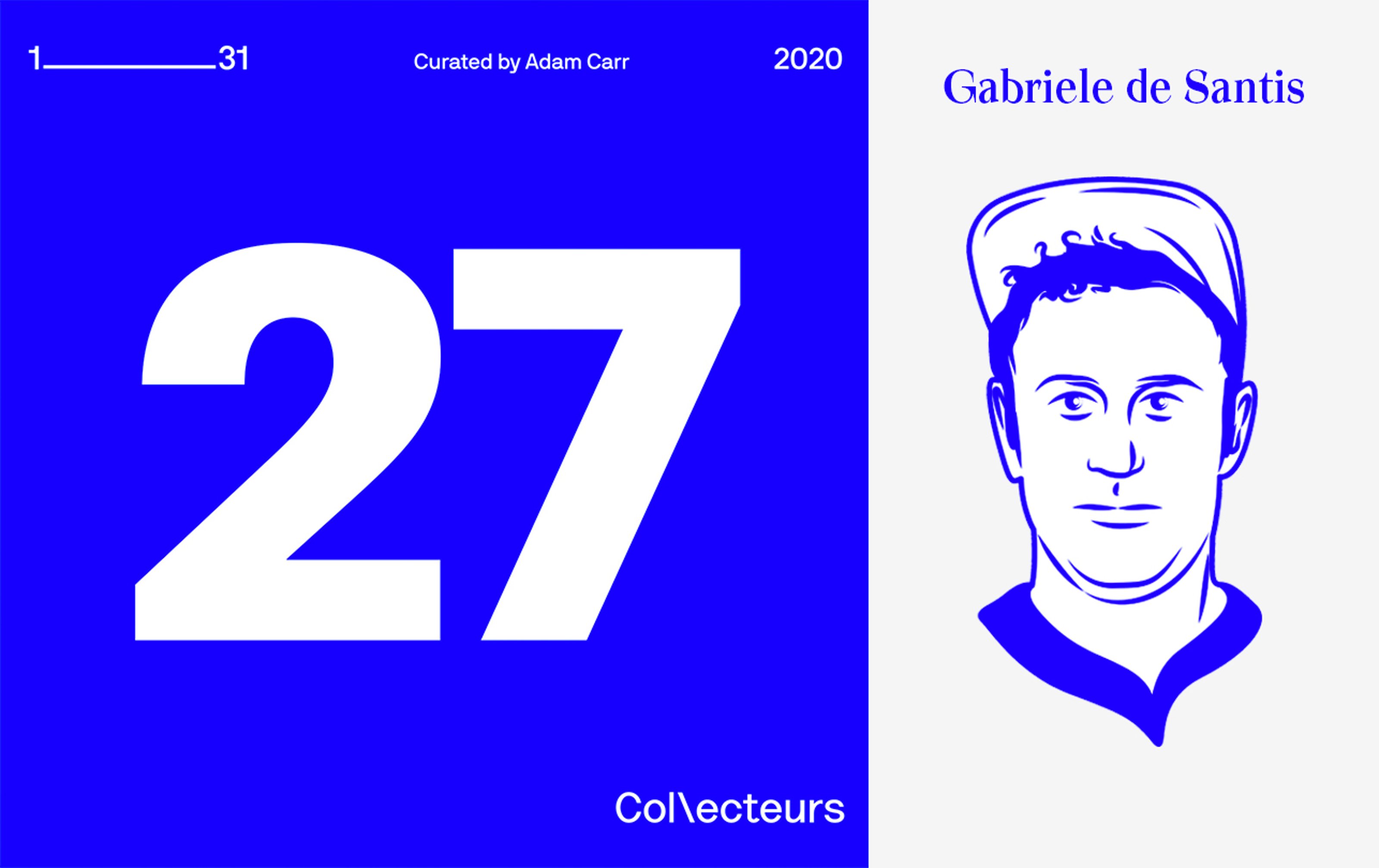

(words and number on digital format)
27, 28, 29 and other numbers frequent Gabriele De Santis when he cycles on a daily basis and for whom numbers, associated with speed, distance and time, as well as the experience of the journey itself, unearth new ideas for work. 27 plays an important role in the formation of the names featured in this new work, and it may take 60 seconds, more or less, to detect its significance.



“Gabriele de Santis is known for his work full of juxtapositions and contradictions. The practice is continuously on the line between conceptual and kitsch, heavy and light, humorous and reflective. Often working with tropes of contemporary art, he points to basic truths of our time but with a sense of humility difficult to find in artistic projects. Using the figures of sport stars and other celebrities, de Santis aims at defining our times through a contemporary popular subconscious, an order and logic derived through our chaotic and mediated environment…”
Artwork: Gabriele de Santis – Fontana, Boetti, 2015. Installation view at Galerie Chez Valentin.
Courtesy of the artist and Frutta Gallery.

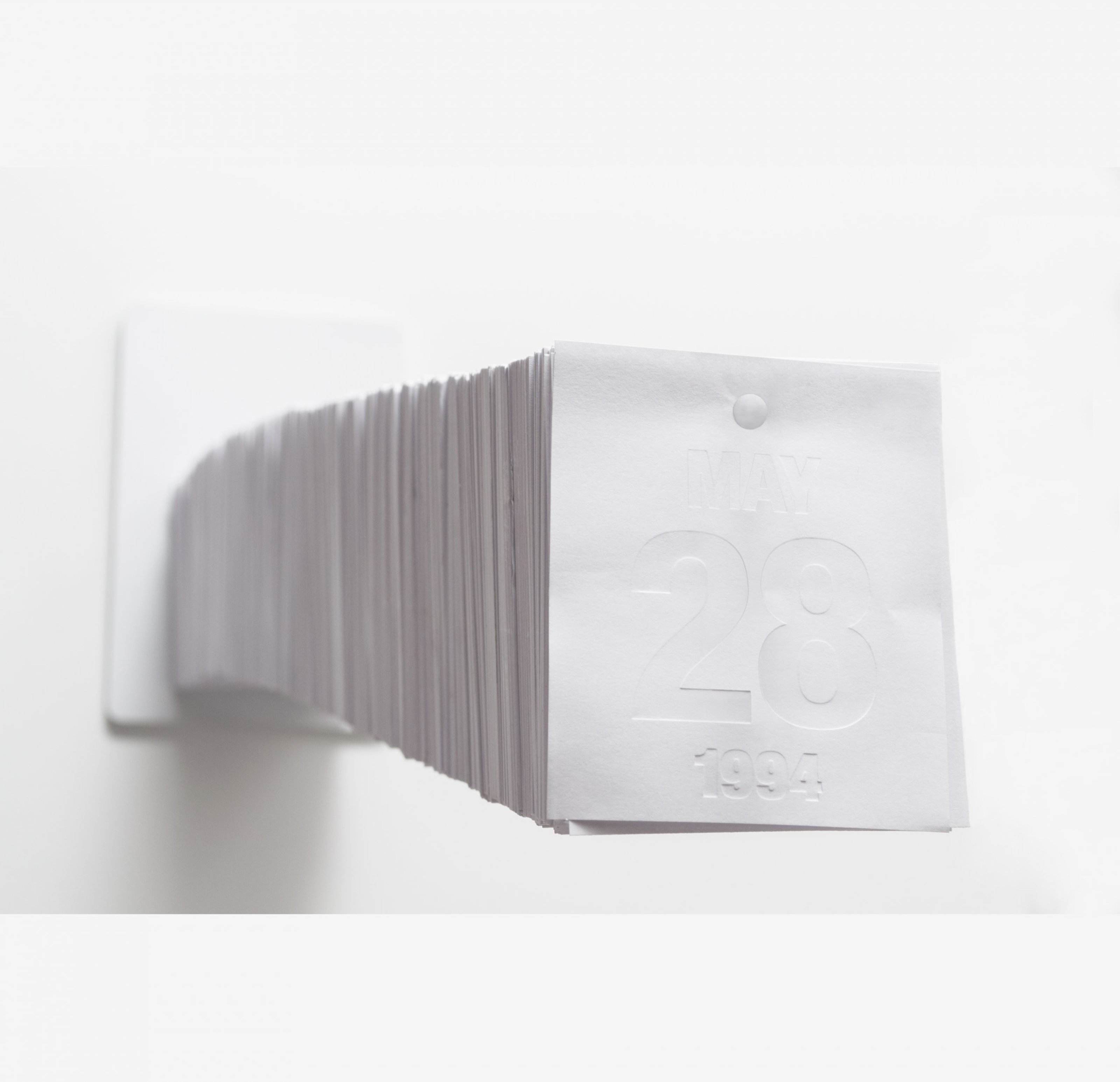
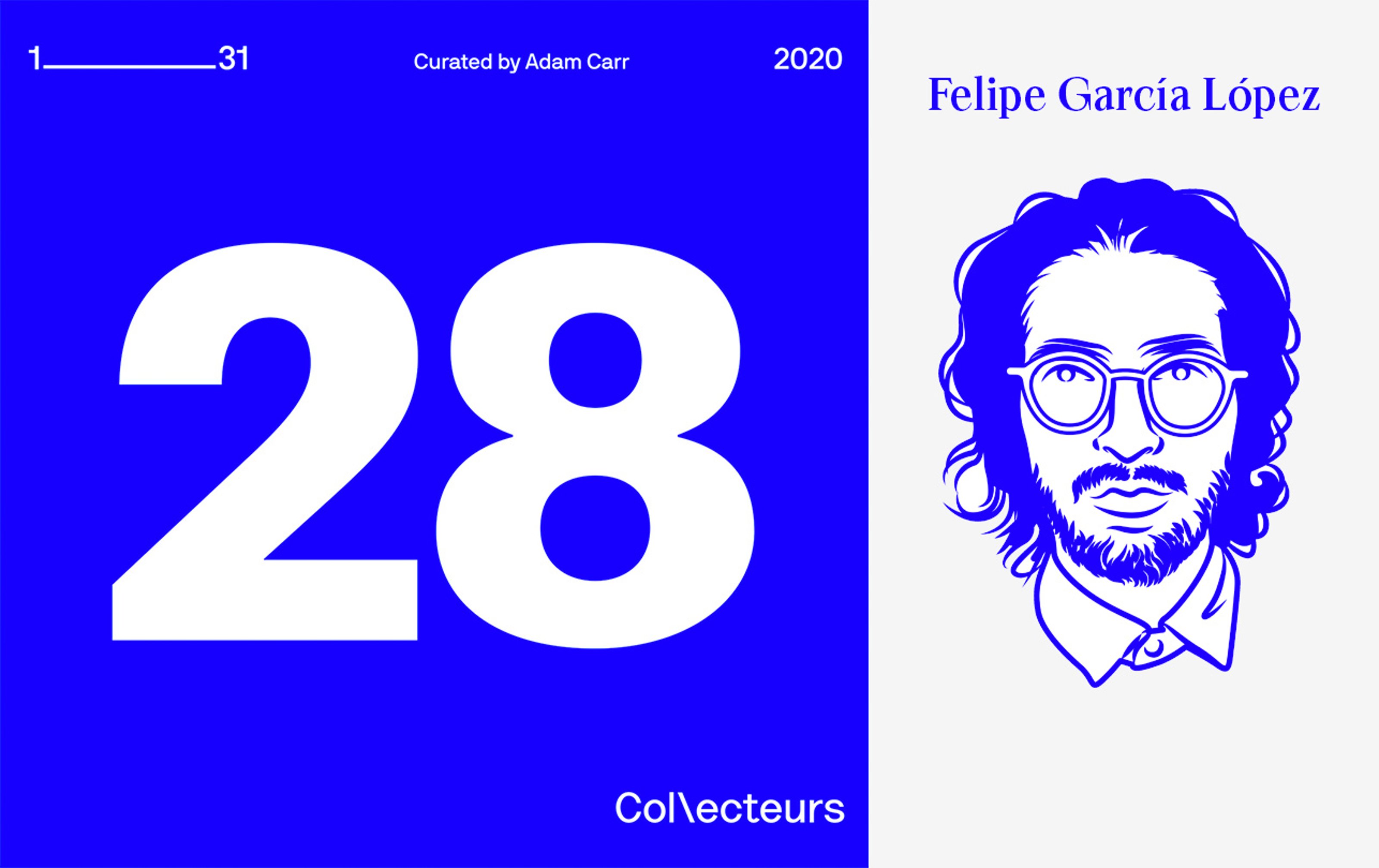


In 8.554 days, Felipe García López creates an unusual calendar, putting one page for each day beginning from his birth date until the day the work was first presented. Counting down the remaining time may stand for being more in control of anticipated event and its unpredictability, while measuring a past period and displaying it in a form of a massive block may stand for unchangeability. This all white, rectangular prism not only gives the feeling of immobility and silence but also puts us in a distance of passing time.
For Felipe García López, memory loss is an issue that, from the artist’s close contact with Alzheimer’s disease, unleashed a strong fixation towards time counting mechanisms. The information inhabited by a body is determined by a beginning-end relation, however, the separation between these two events constitutes a distance, an accumulation of materialized time. The reflections drift into self-referential works that resort to personal data in order to unveil an observation of things that are physically imperceptible, irrational or dysfunctional.



artwork: Felipe García López – Mechanisms of impermanence, 2017 (detail)
“Since the industrial revolution, time has been used as a means of subjugating bodies, if not entire populations altogether. Colonialism used time as a unit of agricultural labor and stole it from enslaved bodies. Later, after the industrial revolution and the abolishment of slavery, the 8-hour workday / 5-day work week became the new preferred way of dominating and coercing an economic underclass, which had replaced slavery with new, modern forms. Today, with the rise of precarious labor and the outsourcing of work via proxy apps, the art of slowing down now seems to be more precious and valuable than ever before.”


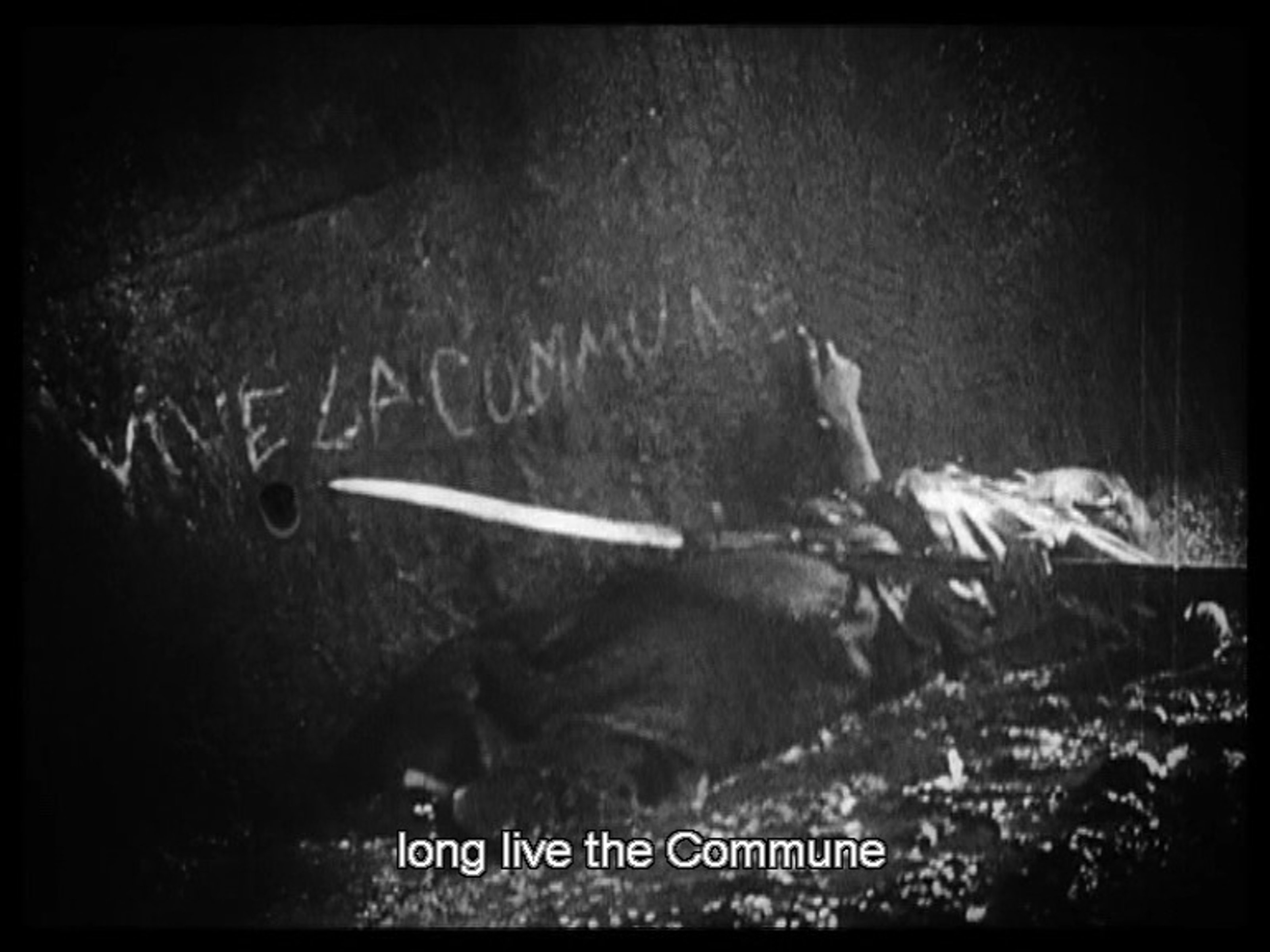
image: Still from the movie ‘The New Babylon’, 1929
This article is the second installment of a collaboration between Collecteurs and Working Class History, a project dedicated to bringing to light the everyday actions of citizens; the working class. May 28th is an important date for the Paris Commune, in 1871; and for the IWW (Industrial Workers of the World) Strike in Philadelphia in 1913. Working Class History retells the story of these two events.


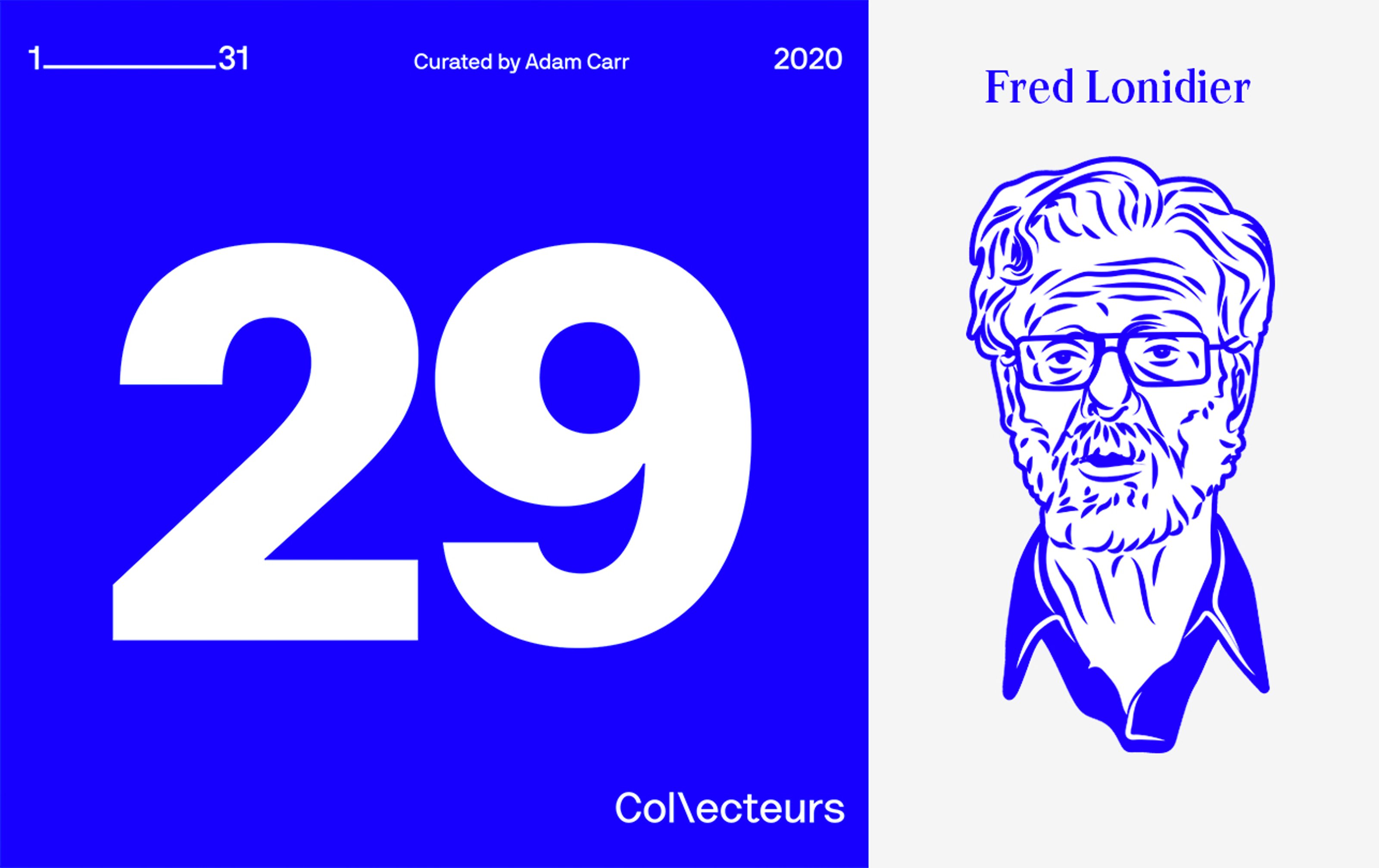

Fred Lonidier has been creating activist-minded art since the 1970s, starting as a core member of the San Diego group with Martha Rosler, Allan Sekula and Phil Steinmetz. Preferring alternate venues for exhibitions–such as union halls, shopping malls or a traveling show on a tractor trailer to exhibit his works to workers themselves at critical points in Tijuana–he has chosen to put labor and the alienation of the object from the production as the main concern for his artistic process. In 29 Arrests, 1972 as much as the main focal point is the ones getting arrested, he makes sure that he includes the moment of the police photograph being taken as well, marking the moment when an art object or a document is being produced, while blurring the lines in between the two.



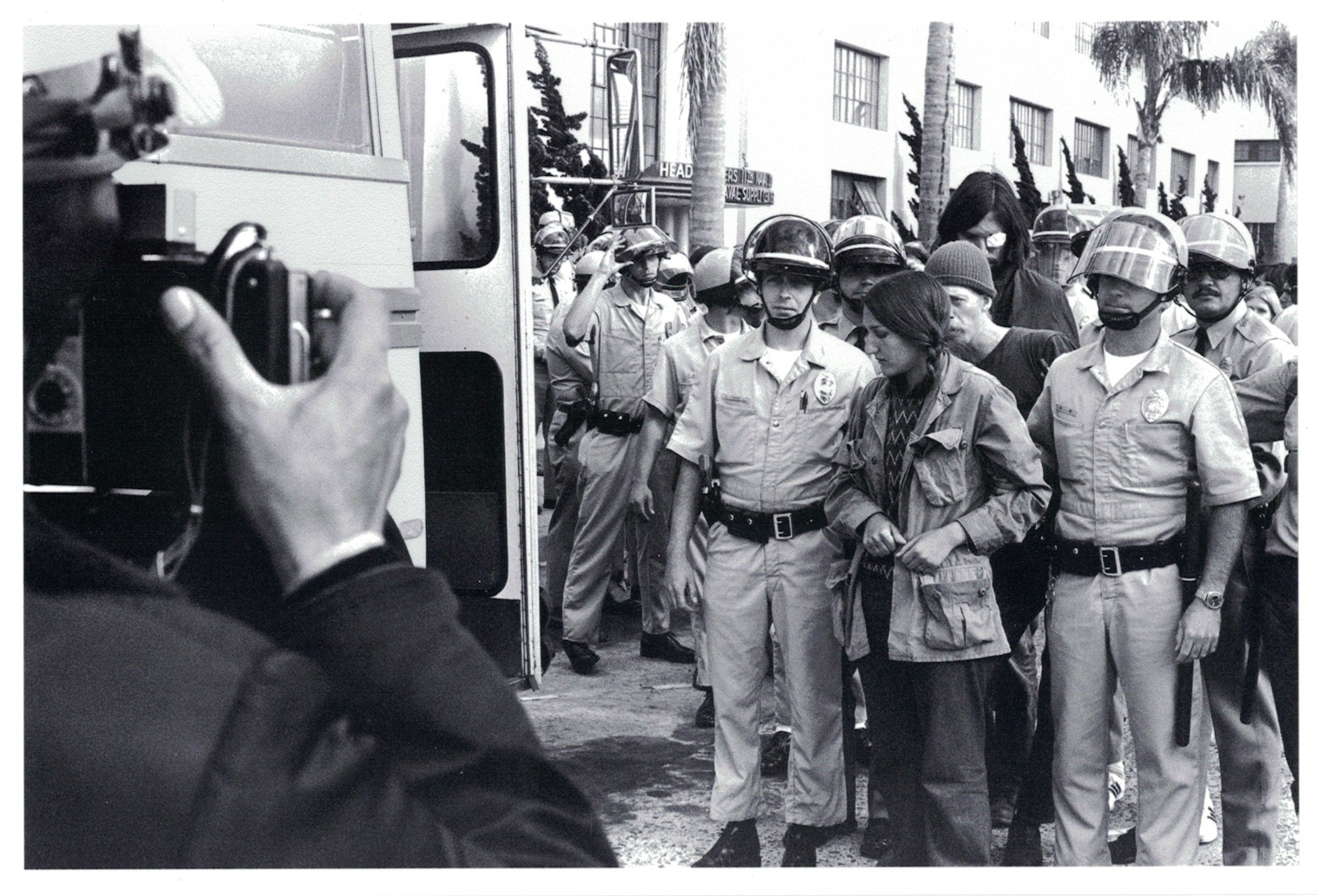
“On May 4th, 1972 a group of protesters gathered in front of the headquarters of the 11th naval district for a sit-in to protest the still ongoing Vietnam-war. It was one of many events that defied the ongoing war and that applied a non-violent strategy of physical intervention. Peaceful protests against the Vietnam War were a common occurrence of the time, but on this occasion, Fred Lonidier, then still a student at UC San Diego, documented the arrests on camera for his series of photographs, 29 Arrests (1972)…”


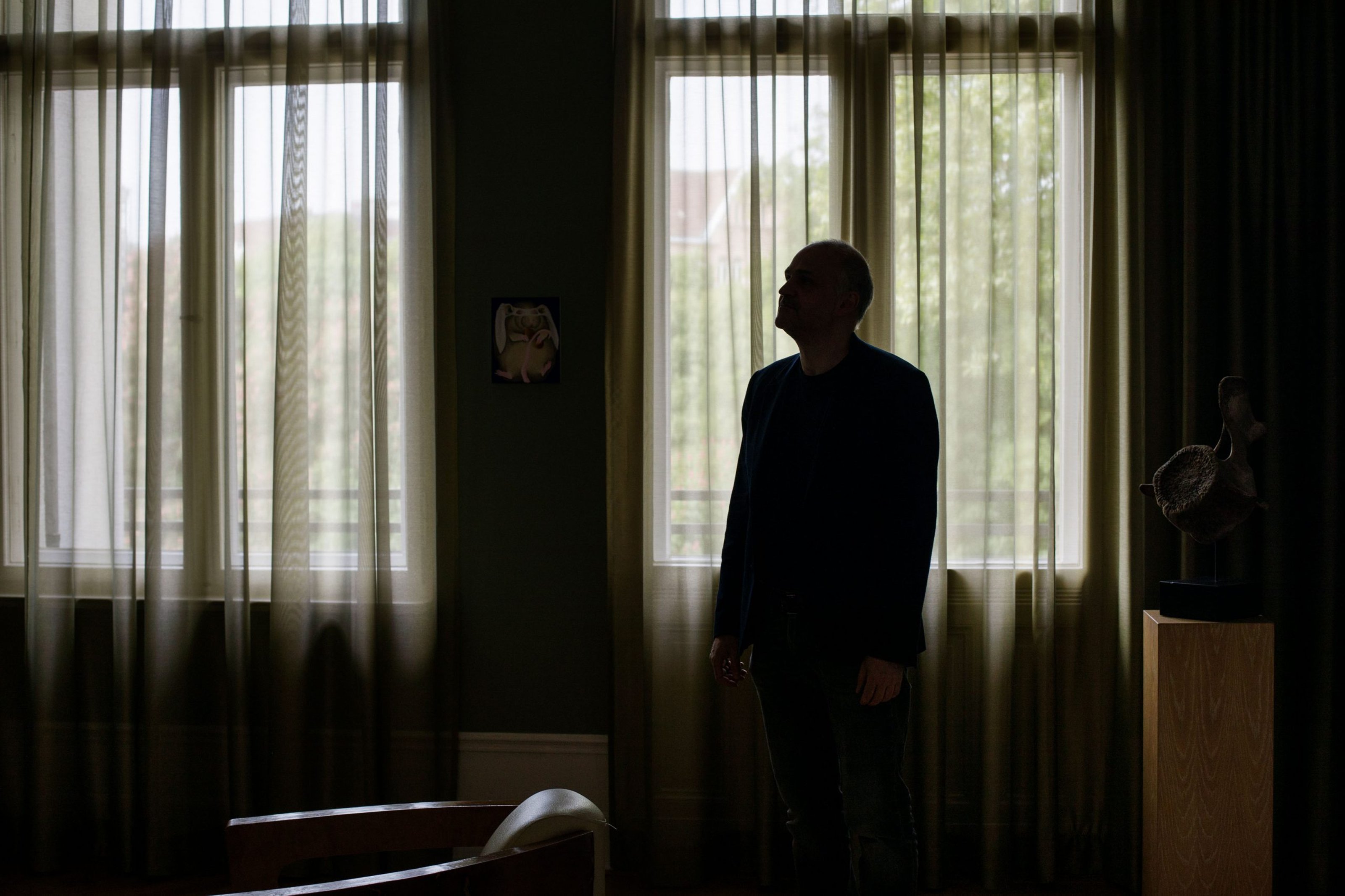
“When it became impossible to conscientiously manage two different worlds at once, Berlin-based collector, Giovanni Springmeier, decided to shutter his medical practice in psychiatry and psychoanalysis and fully devote his time to art. It’s been 5 years since then. A culture enthusiast since the early days of medical school, for the past 30 years Springmeier has collected artists that fervently question the human condition in our ever-changing world. For him, there has always been the other; the way the self exists in relation to the external and how we exist together by ourselves, essentially discerning our very own course of being…”
We asked Giovanni Springmeier the motivation behind his acquisition of 29 Arrests and why he likes giving tours of his apartment to showcase his collection.

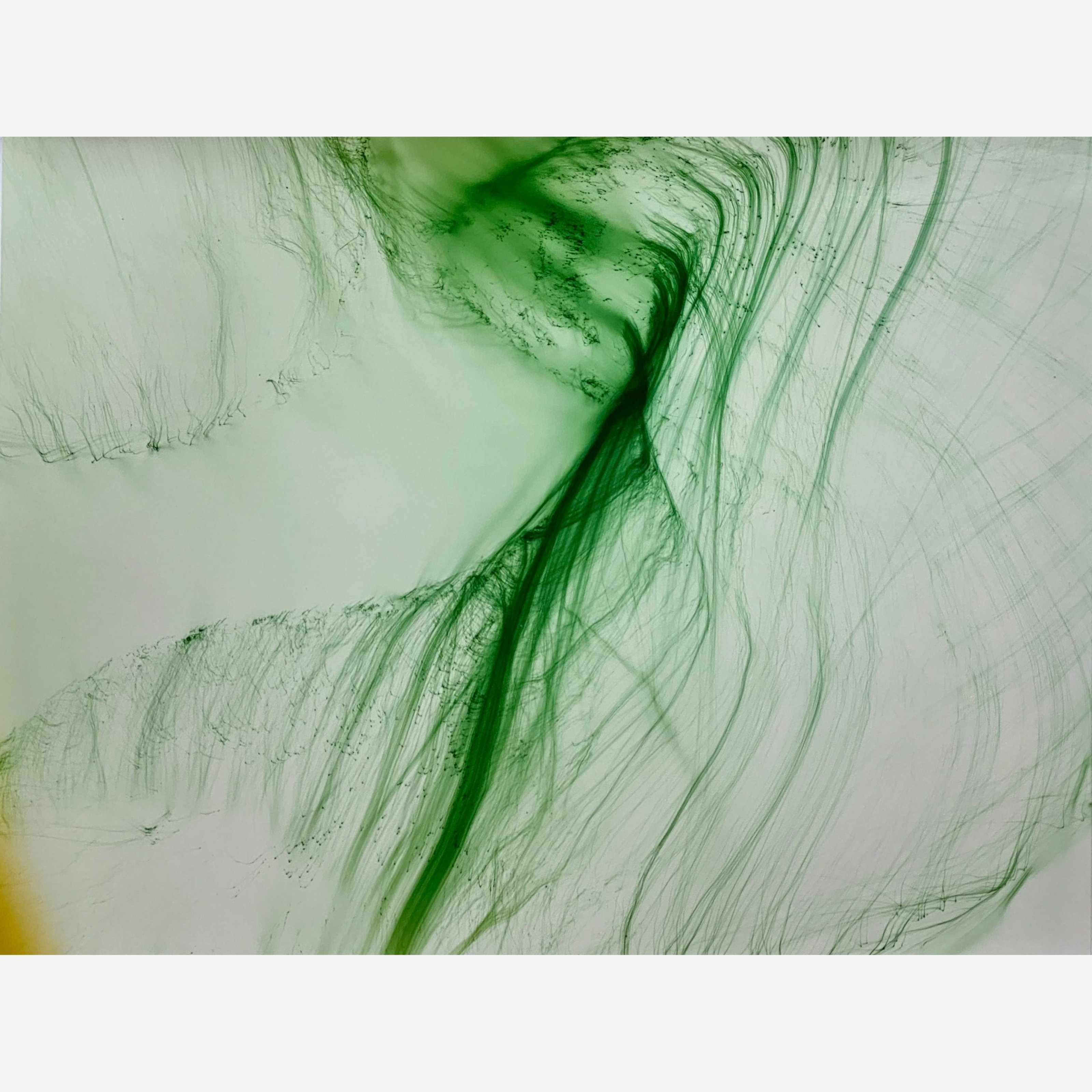
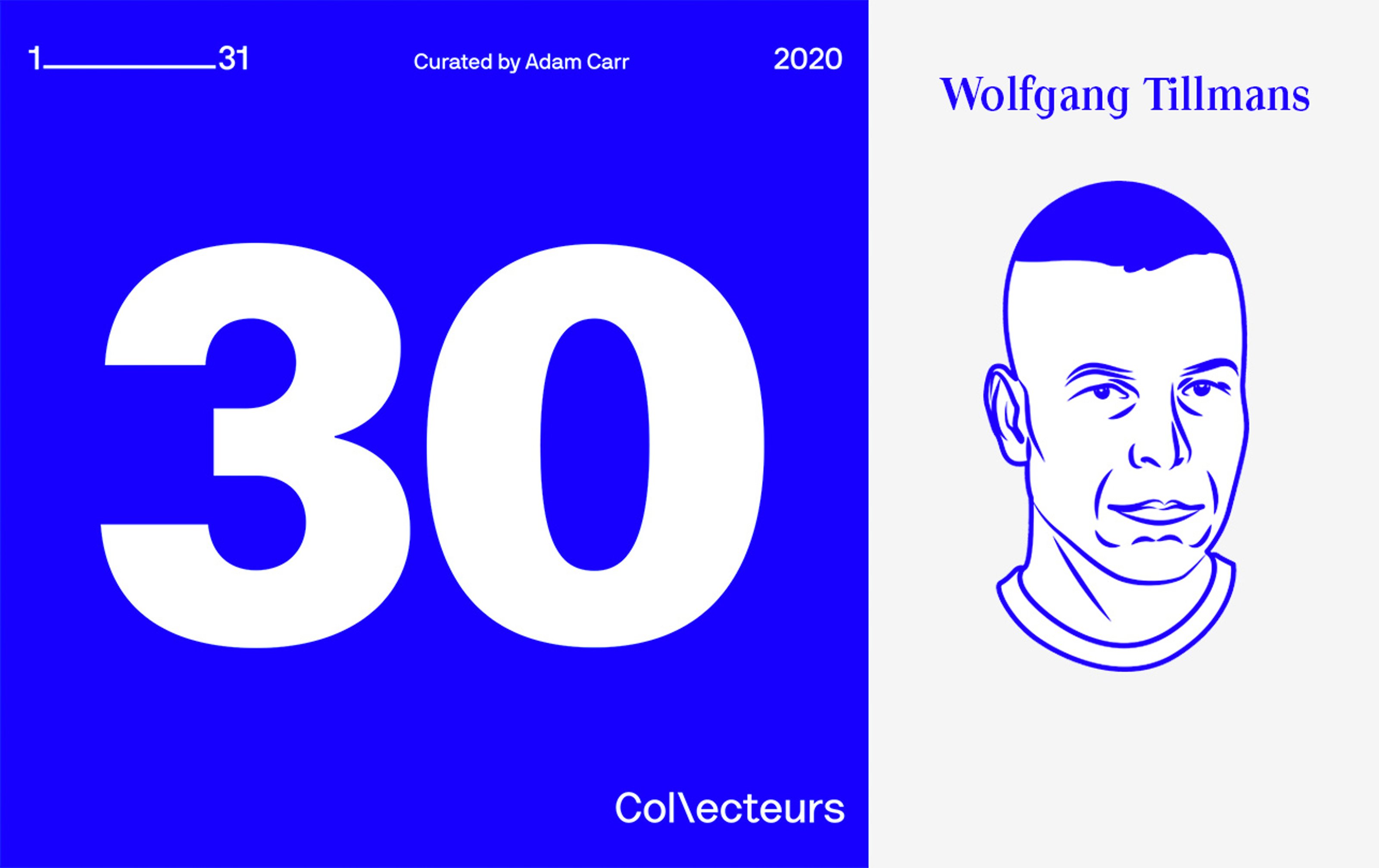

(C-print)
One of the most famous photographers in the world, Wolfgang Tillmans has been the center figure of photographing subcultures, still life pictures and experimentation. In his Freischwimmer series, Tillmans experiments with color sensitive paper in a darkroom to bring about fluid shapes, without a camera or a subject. These meditative abstractions give the feeling of “free swimming” as the title suggests, perhaps an allusion to sexual fluidity or to a liberated youth, flowing freely without construct or rigid structures.
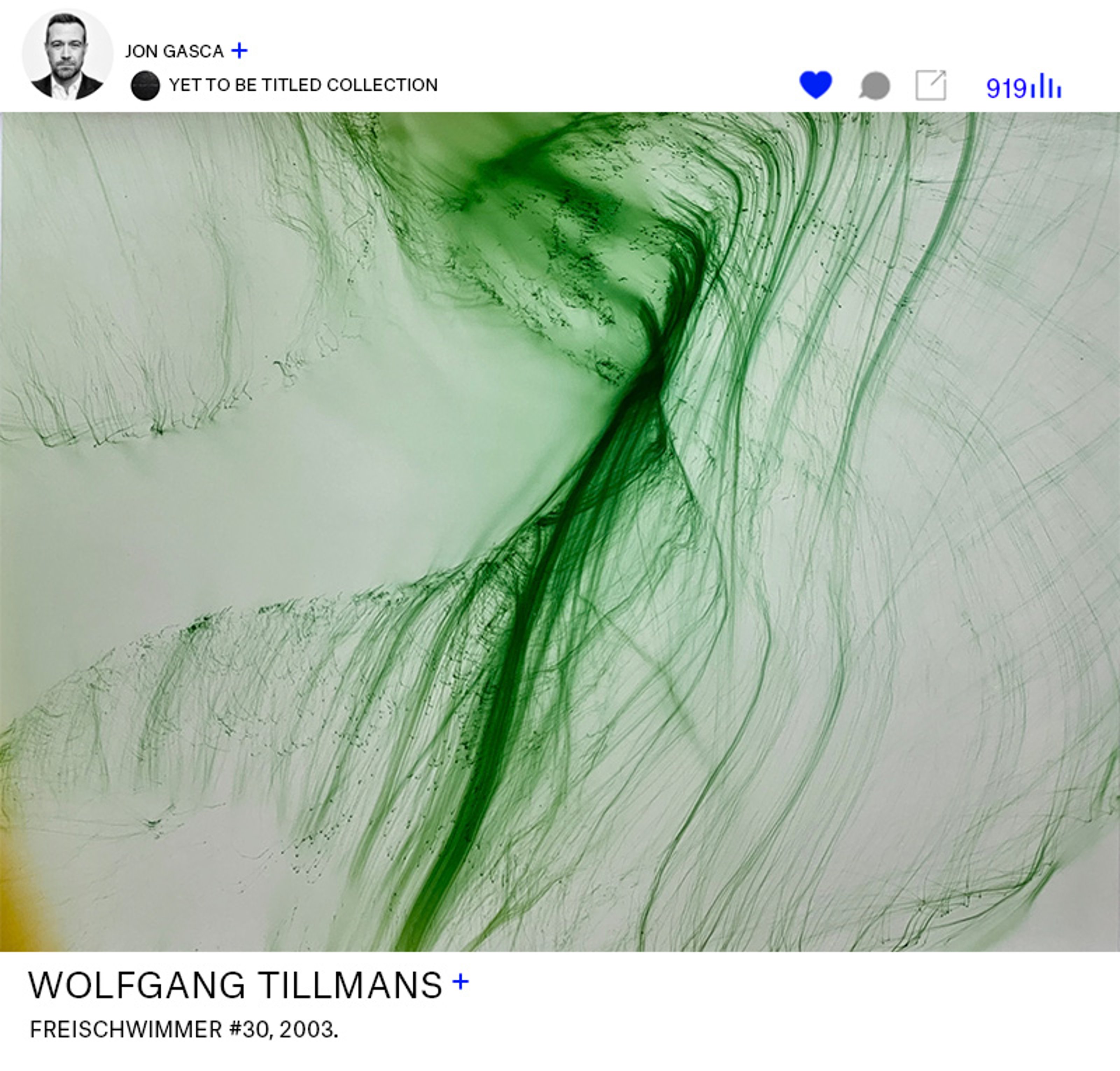



artwork: . Courtesy Jon Gasca Collection, Yet to be Titled.
“The German photographer Wolfgang Tillmans started out shooting the gay club scene of the 1980s and 1990s in Berlin. He pointed his analogue camera to the counterculture community, photographing nightlife; raves, parties, afterparties and the lazy mornings that followed.
It led him to become an icon of cool culture, for shooting counterculture publications like _i-D_and NME, where he shot everyone from Aphex Twin to Blur, Eminem and Björk. Throughout the 1990s, he photographed rave clubs in London, the reggae scene in Jamaica and Berlin’s legendary Love Parade. All in all, his editorial work has been marked with stark flash, an informality that came to define Generation X’s unhinged youth culture.”
Courtesy , .


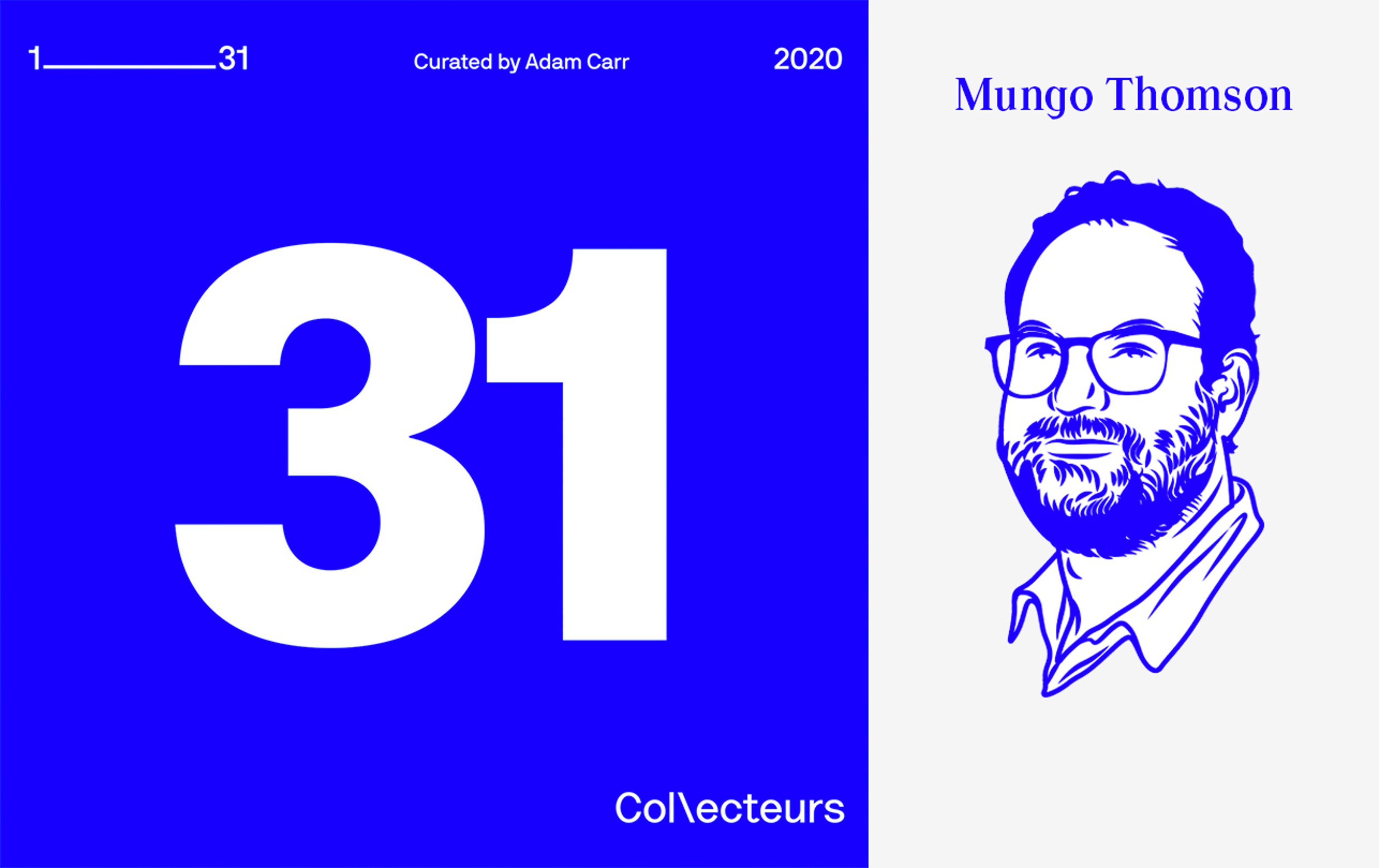

(Double-sided UV-cured print on samba fabric, custom LED lightbox)
Mungo Thomson’s works contemplate time and the different ways we tally it; from unopened mail accumulating at a gallery’s door during the exhibition period, to the automatic shuffling of playing cards, each connected by a sequence of notes to be played on piano without human intervention throughout eternity. As a student of John Baldessari, Thomson carries the torch of American Conceptualism, creating works with a wry humor that lead to deep, enigmatic reflection. His series, Wall Calendars, presents blown up pages from a calendar with the reverse side visible, illuminated by the light coming from the LED lightbox. Through these wall calendars, we view time both chronologically and geographically_._ Does our systematization of time_—_which accounts for every second of every minute_—_hold up to how a mountain experiences it, etched in its chemistry over eons? Through this juxtaposition, Thomson‘s Wall Calendars carries us from the ordinary to the sublime.

Mungo Thomson – World’s Greatest Mountains 2019 (March), 2019 (detail). Photo by Shane Rivera


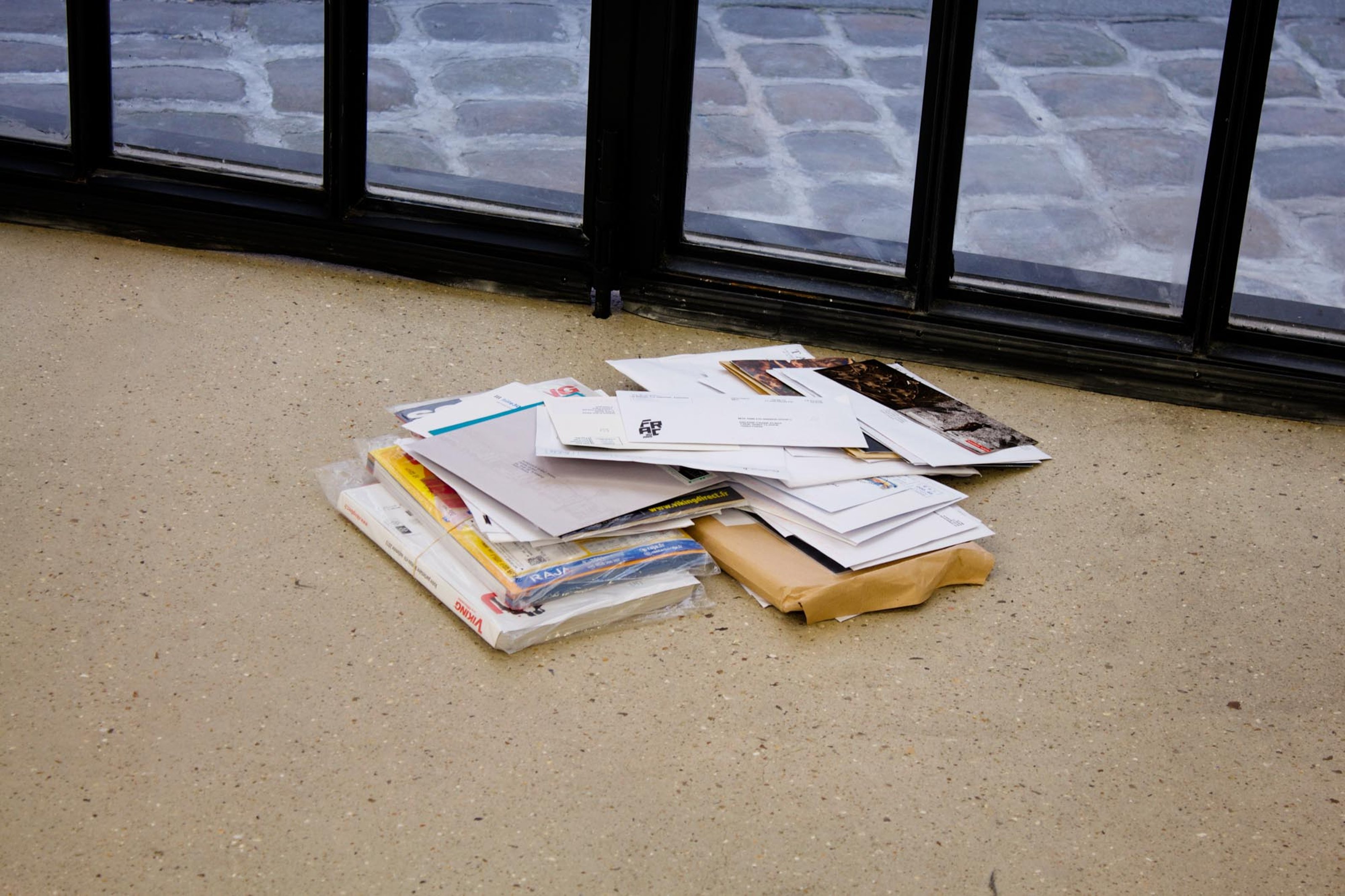
artwork: Mungo Thomson – Mail, 2013. Installation view at Galerie Frank Elbaz. Courtesy the artist.
Mungo Thomson is no stranger to thinking about time on a vast scale, as his series of Wall Calendars takes the viewer out of the grid of the calendar to the infinite planes of geological time. Here we talk about Thomson’s time in isolation, his opinions on the shutdown period, why he prefers gallery shows and how his works resonate with him now.
“Mungo Thomson: In my work I often apply anthropological or astronomical perspectives to cultural activity – so I’m trying to maintain perspective. I’m very lucky to be able to work from home. This is an incredible global event, probably once in a lifetime. And I was born to stay home. But a lot of people are suffering, and it feels very open-ended. So there is a wading-through-syrup quality to life now. And it’s hard to focus. I feel like I have already lived several lifetimes. There was the week of home repair, and the week of making collages, and the week of doing yoga, and the week of playing video games, and the week of drinking whiskey and being depressed. It’s boring and anxious, but then I remember the expression: Doubt may be uncomfortable but certainty is absurd.”
Courtesy the artist. Photo by Kevin Todora

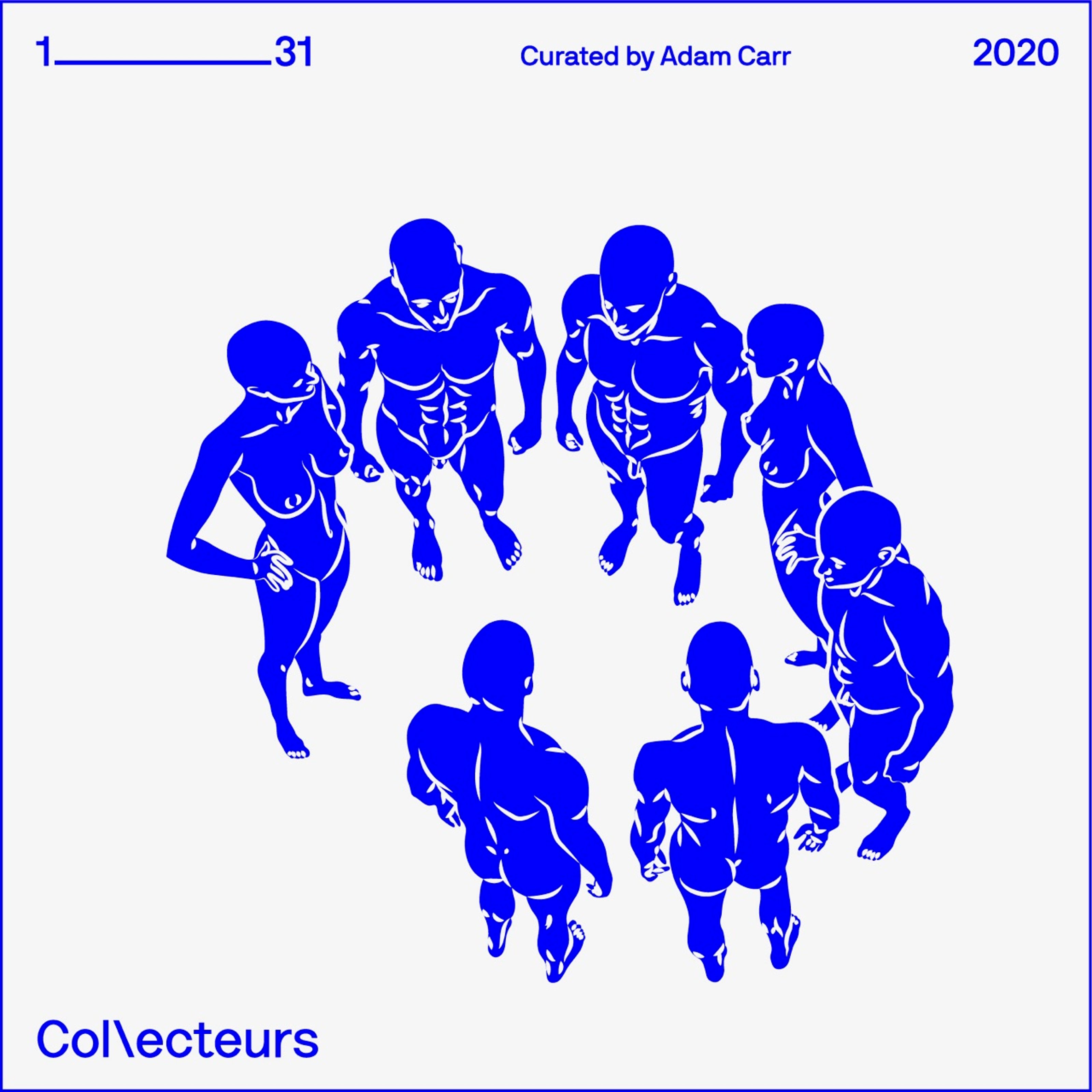
While 1-31 used social media and Collecteurs’ platform, its inspiration was taken in part from a moment prior to the Internet’s inception: Seth Siegelaub’s pioneering work in the 1960s and his exhibitions March 1969 (1969) and July, August, September 1969 (1969). In the spirit of both exhibitions, 1-31 conflated art’s documentation with its presentation and vice versa, where the experience of art broke away from the traditional confines of the museum, institution and gallery to something less governed and more remote. Unlike traditional exhibitions, 1-31 presented new works and related content over a course of three months starting on February 1st, 2020. The exhibition was completed on April 30th, 2020 with the last work and will stay in the view of the public afterwards in its final shape.
This first of its kind digital exhibition has been made possible by the artists and private collectors, who generously shared their works and collections.
We would like to thank Adam Carr for trusting our team’s vision and taking the risk to produce the exhibition. We would also like to thank Eser Coban, Ece Ezer, Jessica Oralkan and Evrim Oralkan who worked day and night, weekends and holidays in order to bring this exhibition into the view of the public.
A massive thank you to Berke Yazicioglu who worked tirelessly to create the illustrations, artist portraits and various designs.
We would also like to thank the writers and contributors who have become a part of our family: Brett Wallace, Àngels Miralda, Albrecht Fuchs, Working Class History, Anna Souter, Mateo Chacon-Pino, Iordanis Kerenidis, Piergiorgio Pepe, Hoda Afshar, Dorian Batycka and Nadja Sayej.
About Collecteurs
Developed at the New Museum’s cultural incubator, Collecteurs is a public-benefit corporation on a mission to give the public access to private art collections. As a digital museum, the platform empowers collectors, making it easy for them to digitize, manage, and exhibit their collections without needing the capital to open a private museum. Collecteurs collaborates with established curators, who select works from private collections on its platform, to create exceptional digital exhibitions.
About Adam Carr
Adam Carr (b. 1981, Chester, UK) is a Curator, Writer and Educator. He is the Chief Curator of ERL, an exhibition space located at the Liverpool John Moores University. He has curated over 60 exhibitions worldwide for museums and institutions such as Castello di Rivoli, Museum of Contemporary Art, Turin; ICA, London and Kadist Art Foundation, Paris. Catalogue texts he has written have been published by Centre Pompidou, Paris; Whitechapel, London; WIELS, Brussels and Rennie Collection, Vancouver among many others.